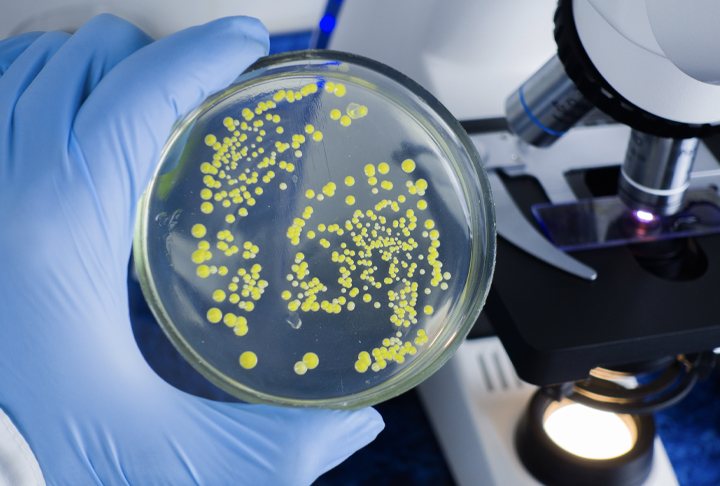Related Publications
2576724
IXMHRBF6
infection
1
apa-cv
50
date
desc
1
1
4113
https://labsyspharm.org/wp-content/plugins/zotpress/
%7B%22status%22%3A%22success%22%2C%22updateneeded%22%3Afalse%2C%22instance%22%3Afalse%2C%22meta%22%3A%7B%22request_last%22%3A0%2C%22request_next%22%3A0%2C%22used_cache%22%3Atrue%7D%2C%22data%22%3A%5B%7B%22key%22%3A%22K689HZJI%22%2C%22library%22%3A%7B%22id%22%3A2576724%7D%2C%22meta%22%3A%7B%22lastModifiedByUser%22%3A%7B%22id%22%3A9036456%2C%22username%22%3A%22jtefft%22%2C%22name%22%3A%22%22%2C%22links%22%3A%7B%22alternate%22%3A%7B%22href%22%3A%22https%3A%5C%2F%5C%2Fwww.zotero.org%5C%2Fjtefft%22%2C%22type%22%3A%22text%5C%2Fhtml%22%7D%7D%7D%2C%22creatorSummary%22%3A%22Jain%20et%20al.%22%2C%22parsedDate%22%3A%222025-03-15%22%2C%22numChildren%22%3A1%7D%2C%22bib%22%3A%22%3Cdiv%20class%3D%5C%22csl-bib-body%5C%22%20style%3D%5C%22line-height%3A%202%3B%20padding-left%3A%201em%3B%20text-indent%3A-1em%3B%5C%22%3E%5Cn%20%20%3Cdiv%20class%3D%5C%22csl-entry%5C%22%3EJain%2C%20N.%2C%20Ogbonna%2C%20E.%20C.%2C%20Maliga%2C%20Z.%2C%20Jacobson%2C%20C.%2C%20Zhang%2C%20L.%2C%20Shih%2C%20A.%2C%20Rosenberg%2C%20J.%2C%20Kalam%2C%20H.%2C%20Gagn%26%23xE9%3B%2C%20A.%2C%20Solomon%2C%20I.%20H.%2C%20Santagata%2C%20S.%2C%20Sorger%2C%20P.%20K.%2C%20Aldridge%2C%20B.%20B.%2C%20%26amp%3B%20Martinot%2C%20A.%20J.%20%282025%29.%20%3Ci%3EMultiomic%20analysis%20identifies%20suppressive%20myeloid%20cell%20populations%20in%20human%20TB%20granulomas%3C%5C%2Fi%3E%20%5BPreprint%5D.%20bioRxiv.%20%3Ca%20class%3D%27zp-DOIURL%27%20target%3D%27_blank%27%20href%3D%27https%3A%5C%2F%5C%2Fdoi.org%5C%2F10.1101%5C%2F2025.03.10.642376%27%3Ehttps%3A%5C%2F%5C%2Fdoi.org%5C%2F10.1101%5C%2F2025.03.10.642376%3C%5C%2Fa%3E%3C%5C%2Fdiv%3E%5Cn%3C%5C%2Fdiv%3E%22%2C%22data%22%3A%7B%22itemType%22%3A%22preprint%22%2C%22title%22%3A%22Multiomic%20analysis%20identifies%20suppressive%20myeloid%20cell%20populations%20in%20human%20TB%20granulomas%22%2C%22creators%22%3A%5B%7B%22creatorType%22%3A%22author%22%2C%22firstName%22%3A%22Neharika%22%2C%22lastName%22%3A%22Jain%22%7D%2C%7B%22creatorType%22%3A%22author%22%2C%22firstName%22%3A%22Emmanuel%20C.%22%2C%22lastName%22%3A%22Ogbonna%22%7D%2C%7B%22creatorType%22%3A%22author%22%2C%22firstName%22%3A%22Zoltan%22%2C%22lastName%22%3A%22Maliga%22%7D%2C%7B%22creatorType%22%3A%22author%22%2C%22firstName%22%3A%22Connor%22%2C%22lastName%22%3A%22Jacobson%22%7D%2C%7B%22creatorType%22%3A%22author%22%2C%22firstName%22%3A%22Liang%22%2C%22lastName%22%3A%22Zhang%22%7D%2C%7B%22creatorType%22%3A%22author%22%2C%22firstName%22%3A%22Angela%22%2C%22lastName%22%3A%22Shih%22%7D%2C%7B%22creatorType%22%3A%22author%22%2C%22firstName%22%3A%22Jacob%22%2C%22lastName%22%3A%22Rosenberg%22%7D%2C%7B%22creatorType%22%3A%22author%22%2C%22firstName%22%3A%22Haroon%22%2C%22lastName%22%3A%22Kalam%22%7D%2C%7B%22creatorType%22%3A%22author%22%2C%22firstName%22%3A%22Andr%5Cu00e9anne%22%2C%22lastName%22%3A%22Gagn%5Cu00e9%22%7D%2C%7B%22creatorType%22%3A%22author%22%2C%22firstName%22%3A%22Isaac%20H.%22%2C%22lastName%22%3A%22Solomon%22%7D%2C%7B%22creatorType%22%3A%22author%22%2C%22firstName%22%3A%22Sandro%22%2C%22lastName%22%3A%22Santagata%22%7D%2C%7B%22creatorType%22%3A%22author%22%2C%22firstName%22%3A%22Peter%20K.%22%2C%22lastName%22%3A%22Sorger%22%7D%2C%7B%22creatorType%22%3A%22author%22%2C%22firstName%22%3A%22Bree%20B.%22%2C%22lastName%22%3A%22Aldridge%22%7D%2C%7B%22creatorType%22%3A%22author%22%2C%22firstName%22%3A%22Amanda%20J.%22%2C%22lastName%22%3A%22Martinot%22%7D%5D%2C%22abstractNote%22%3A%22Tuberculosis%20%28TB%29%20remains%20a%20major%20global%20health%20challenge%2C%20particularly%20in%20the%20context%20of%20multidrug-resistant%20%28MDR%29%20Mycobacterium%20tuberculosis%20%28Mtb%29.%20Host-directed%20therapies%20%28HDTs%29%20have%20been%20proposed%20as%20adjunctive%20therapy%20to%20enhance%20immune%20control%20of%20infection.%20Recently%2C%20one%20such%20HDT%2C%20pharmacologic%20modulation%20of%20myeloid-derived%20suppressor%20cells%20%28MDSCs%29%2C%20has%20been%20proposed%20to%20treat%20MDR-TB.%20While%20MDSCs%20have%20been%20well%20characterized%20in%20cancer%2C%20their%20role%20in%20TB%20pathogenesis%20remains%20unclear.%20To%20investigate%20whether%20MDSCs%20or%20other%20myeloid%20suppressor%20populations%20contribute%20to%20TB%20granuloma%20microenvironments%20%28GME%29%2C%20we%20performed%20spatial%20transcriptional%20profiling%20and%20single-cell%20immunophenotyping%20on%20eighty-four%20granulomas%20in%20lung%20specimens%20from%20three%20individuals%20with%20active%20disease.%20Granulomas%20were%20histologically%20classified%20based%20on%20H%26E%20staining%2C%20and%20transcriptional%20signatures%20were%20compared%20across%20regions%20of%20interest%20%28ROIs%29%20at%20different%20states%20of%20granuloma%20maturation.%20Our%20analysis%20revealed%20that%20immune%20suppression%20within%20granuloma%20was%20not%20primarily%20driven%20by%20classical%20MDSCs%20but%20rather%20by%20multiple%20myeloid%20cell%20subsets%2C%20including%20dendritic%20cells%20expressing%20indoleamine%202%2C3%20dioxygenase-1%20expressing%20%28IDO1%2B%20DCs%29.%20IDO1%2B%20DCs%20were%20the%20most%20frequently%20observed%20suppressive%20myeloid%20cells%2C%20particularly%20in%20cellular%20regions%2C%20and%20their%20spatial%20proximity%20to%20activated%20T%20cells%20suggested%20localized%20immunosuppression.%20Importantly%2C%20granulomas%20at%20different%20stages%20contained%20distinct%20proportions%20of%20suppressor%20myeloid%20cells%2C%20with%20necrotic%20and%20cellular%20regions%20showing%20different%20myeloid%20phenotypes%20that%20may%20influence%20granuloma%20progression.%20Gene%20set%20enrichment%20analysis%20%28GSEA%29%20further%20indicated%20that%20elevated%20IDO1%20expression%20was%20associated%20with%20a%20complex%20immune%20response%20that%20balanced%20suppressive%20signaling%2C%20immune%20activation%2C%20and%20cellular%20metabolism.%20These%20findings%20suggest%20that%20classical%20MDSCs%2C%20as%20defined%20in%20tumor%20microenvironments%2C%20likely%20play%20a%20minor%20role%20in%20TB%2C%20whereas%20IDO1%2B%20DCs%20may%20be%20key%20regulators%20of%20immune%20suppression%20in%20granulomas%20influencing%20local%20Mtb%20control%20in%20infected%20lung.%20A%20deeper%20understanding%20of%20the%20role%20of%20IDO1%2B%20suppressive%20myeloid%20cells%20in%20TB%20granulomas%20is%20essential%20to%20assessing%20their%20potential%20as%20therapeutic%20targets%20in%20TB%20treatment.%22%2C%22genre%22%3A%22preprint%22%2C%22repository%22%3A%22bioRxiv%22%2C%22archiveID%22%3A%22%22%2C%22date%22%3A%222025-03-15%22%2C%22DOI%22%3A%2210.1101%5C%2F2025.03.10.642376%22%2C%22citationKey%22%3A%22%22%2C%22url%22%3A%22http%3A%5C%2F%5C%2Fbiorxiv.org%5C%2Flookup%5C%2Fdoi%5C%2F10.1101%5C%2F2025.03.10.642376%22%2C%22language%22%3A%22en%22%2C%22collections%22%3A%5B%22IXMHRBF6%22%5D%2C%22dateModified%22%3A%222025-04-15T14%3A30%3A37Z%22%7D%7D%2C%7B%22key%22%3A%22TFES5DM3%22%2C%22library%22%3A%7B%22id%22%3A2576724%7D%2C%22meta%22%3A%7B%22lastModifiedByUser%22%3A%7B%22id%22%3A9036456%2C%22username%22%3A%22jtefft%22%2C%22name%22%3A%22%22%2C%22links%22%3A%7B%22alternate%22%3A%7B%22href%22%3A%22https%3A%5C%2F%5C%2Fwww.zotero.org%5C%2Fjtefft%22%2C%22type%22%3A%22text%5C%2Fhtml%22%7D%7D%7D%2C%22creatorSummary%22%3A%22Mears%20et%20al.%22%2C%22parsedDate%22%3A%222025-02-21%22%2C%22numChildren%22%3A2%7D%2C%22bib%22%3A%22%3Cdiv%20class%3D%5C%22csl-bib-body%5C%22%20style%3D%5C%22line-height%3A%202%3B%20padding-left%3A%201em%3B%20text-indent%3A-1em%3B%5C%22%3E%5Cn%20%20%3Cdiv%20class%3D%5C%22csl-entry%5C%22%3EMears%2C%20K.%20S.%2C%20Rossine%2C%20F.%20W.%2C%20Quinones-Olvera%2C%20N.%2C%20Souque%2C%20C.%2C%20%26amp%3B%20Baym%2C%20M.%20%282025%29.%20%3Ci%3ERNA-guided%20nucleases%20enable%20a%20gene%20drive%20of%20insertion%20sequences%20in%20plasmids%3C%5C%2Fi%3E%20%5BPreprint%5D.%20%3Ca%20class%3D%27zp-DOIURL%27%20target%3D%27_blank%27%20href%3D%27https%3A%5C%2F%5C%2Fdoi.org%5C%2F10.1101%5C%2F2025.02.20.638934%27%3Ehttps%3A%5C%2F%5C%2Fdoi.org%5C%2F10.1101%5C%2F2025.02.20.638934%3C%5C%2Fa%3E%3C%5C%2Fdiv%3E%5Cn%3C%5C%2Fdiv%3E%22%2C%22data%22%3A%7B%22itemType%22%3A%22preprint%22%2C%22title%22%3A%22RNA-guided%20nucleases%20enable%20a%20gene%20drive%20of%20insertion%20sequences%20in%20plasmids%22%2C%22creators%22%3A%5B%7B%22creatorType%22%3A%22author%22%2C%22firstName%22%3A%22Kepler%20S.%22%2C%22lastName%22%3A%22Mears%22%7D%2C%7B%22creatorType%22%3A%22author%22%2C%22firstName%22%3A%22Fernando%20W.%22%2C%22lastName%22%3A%22Rossine%22%7D%2C%7B%22creatorType%22%3A%22author%22%2C%22firstName%22%3A%22Natalia%22%2C%22lastName%22%3A%22Quinones-Olvera%22%7D%2C%7B%22creatorType%22%3A%22author%22%2C%22firstName%22%3A%22C%5Cu00e9lia%22%2C%22lastName%22%3A%22Souque%22%7D%2C%7B%22creatorType%22%3A%22author%22%2C%22firstName%22%3A%22Michael%22%2C%22lastName%22%3A%22Baym%22%7D%5D%2C%22abstractNote%22%3A%22Mobile%20genetic%20elements%20%28MGEs%29%20and%20the%20interactions%20between%20them%20are%20a%20major%20source%20of%20evolutionary%20innovation.%20Insertion%20sequences%2C%20the%20simplest%20MGEs%20usually%20encoding%20only%20the%20necessary%20genes%20for%20transposition%20and%20maintenance%2C%20are%20widespread%20in%20bacterial%20genomes%2C%20and%20are%20particularly%20common%20in%20plasmids.%20Plasmids%2C%20self-replicating%20extrachromosomal%20DNA%20elements%2C%20often%20exist%20in%20multiple%20copies%20imparting%20a%20stochastic%20barrier%20to%20the%20fixation%20of%20an%20insertion%20sequence%20by%20limiting%20the%20proportion%20of%20the%20plasmid%20population%20harboring%20the%20IS.%20In%20this%20work%20we%20demonstrate%20that%20to%20overcome%20this%2C%20the%20IS200%5C%2F605%20family%20of%20insertion%20sequences%20utilizes%20programmable%20RNA%20guided%20nucleases%20as%20gene%20drive%20to%20spread%20the%20IS%20through%20the%20plasmid%20population.%20TnpB%2C%20the%20likely%20ancestor%20of%20Cas12%2C%20records%20the%20specific%20insertion%20site%20of%20the%20IS%20in%20its%20RNA%20guide%20to%20prevent%20loss%20of%20the%20IS%20during%20transposition.%20When%20introduced%20to%20a%20plasmid%20TnpB%20will%20be%20reprogrammed%20to%20target%20and%20cleave%20IS-%20plasmids%2C%20resulting%20in%20biased%20replication%20of%20IS%2B%20plasmids.%20Furthermore%2C%20the%20gene%20drive%20activity%20is%20critical%20for%20the%20IS%20to%20invade%20high%20copy%20plasmid%20populations.%20Because%20TnpB%20can%20only%20be%20mobilized%20between%20microbes%20on%20other%20mobile%20genetic%20elements%2C%20this%20advantage%20to%20fixing%20in%20plasmids%20may%20help%20explain%20the%20prevalence%20of%20TnpB%20across%20the%20tree%20of%20life.%20More%20generally%2C%20the%20unique%20pressures%20arising%20from%20movement%20between%20genetic%20contexts%20with%20different%20multiplicities%20shapes%20the%20evolution%20of%20strategies%20for%20MGE%20spread.%22%2C%22genre%22%3A%22preprint%22%2C%22repository%22%3A%22%22%2C%22archiveID%22%3A%22%22%2C%22date%22%3A%222025-02-21%22%2C%22DOI%22%3A%2210.1101%5C%2F2025.02.20.638934%22%2C%22citationKey%22%3A%22%22%2C%22url%22%3A%22http%3A%5C%2F%5C%2Fbiorxiv.org%5C%2Flookup%5C%2Fdoi%5C%2F10.1101%5C%2F2025.02.20.638934%22%2C%22language%22%3A%22en%22%2C%22collections%22%3A%5B%22IXMHRBF6%22%5D%2C%22dateModified%22%3A%222025-05-05T19%3A48%3A27Z%22%7D%7D%2C%7B%22key%22%3A%22T3UGPZB9%22%2C%22library%22%3A%7B%22id%22%3A2576724%7D%2C%22meta%22%3A%7B%22lastModifiedByUser%22%3A%7B%22id%22%3A9036456%2C%22username%22%3A%22jtefft%22%2C%22name%22%3A%22%22%2C%22links%22%3A%7B%22alternate%22%3A%7B%22href%22%3A%22https%3A%5C%2F%5C%2Fwww.zotero.org%5C%2Fjtefft%22%2C%22type%22%3A%22text%5C%2Fhtml%22%7D%7D%7D%2C%22creatorSummary%22%3A%22Rossine%20et%20al.%22%2C%22parsedDate%22%3A%222025-02-21%22%2C%22numChildren%22%3A3%7D%2C%22bib%22%3A%22%3Cdiv%20class%3D%5C%22csl-bib-body%5C%22%20style%3D%5C%22line-height%3A%202%3B%20padding-left%3A%201em%3B%20text-indent%3A-1em%3B%5C%22%3E%5Cn%20%20%3Cdiv%20class%3D%5C%22csl-entry%5C%22%3ERossine%2C%20F.%2C%20Sanchez%2C%20C.%2C%20Eaton%2C%20D.%2C%20Paulsson%2C%20J.%2C%20%26amp%3B%20Baym%2C%20M.%20%282025%29.%20%3Ci%3EIntracellular%20competition%20shapes%20plasmid%20population%20dynamics%3C%5C%2Fi%3E%20%5BPreprint%5D.%20bioRxiv.%20%3Ca%20class%3D%27zp-DOIURL%27%20target%3D%27_blank%27%20href%3D%27https%3A%5C%2F%5C%2Fdoi.org%5C%2F10.1101%5C%2F2025.02.19.639193%27%3Ehttps%3A%5C%2F%5C%2Fdoi.org%5C%2F10.1101%5C%2F2025.02.19.639193%3C%5C%2Fa%3E%3C%5C%2Fdiv%3E%5Cn%3C%5C%2Fdiv%3E%22%2C%22data%22%3A%7B%22itemType%22%3A%22preprint%22%2C%22title%22%3A%22Intracellular%20competition%20shapes%20plasmid%20population%20dynamics%22%2C%22creators%22%3A%5B%7B%22creatorType%22%3A%22author%22%2C%22firstName%22%3A%22Fernando%22%2C%22lastName%22%3A%22Rossine%22%7D%2C%7B%22creatorType%22%3A%22author%22%2C%22firstName%22%3A%22Carlos%22%2C%22lastName%22%3A%22Sanchez%22%7D%2C%7B%22creatorType%22%3A%22author%22%2C%22firstName%22%3A%22Daniel%22%2C%22lastName%22%3A%22Eaton%22%7D%2C%7B%22creatorType%22%3A%22author%22%2C%22firstName%22%3A%22Johan%22%2C%22lastName%22%3A%22Paulsson%22%7D%2C%7B%22creatorType%22%3A%22author%22%2C%22firstName%22%3A%22Michael%22%2C%22lastName%22%3A%22Baym%22%7D%5D%2C%22abstractNote%22%3A%22Conflicts%20between%20levels%20of%20biological%20organization%20are%20central%20to%20evolution%2C%20from%20populations%20of%20multicellular%20organisms%20to%20selfish%20genetic%20elements%20in%20microbes.%20Plasmids%20are%20extrachromosomal%2C%20self-replicating%20genetic%20elements%20that%20underlie%20much%20of%20the%20evolutionary%20flexibility%20of%20bacteria.%20Evolving%20plasmids%20face%20selective%20pressures%20on%20their%20hosts%2C%20but%20also%20compete%20within%20the%20cell%20for%20replication%2C%20making%20them%20an%20ideal%20system%20for%20studying%20the%20joint%20dynamics%20of%20multilevel%20selection.%20While%20theory%20indicates%20that%20within-cell%20selection%20should%20matter%20for%20plasmid%20evolution%2C%20experimental%20measurement%20of%20within-cell%20plasmid%20fitness%20and%20its%20consequences%20has%20remained%20elusive.%20Here%20we%20measure%20the%20within-cell%20fitness%20of%20competing%20plasmids%20and%20characterize%20drift%20and%20selective%20dynamics.%20We%20achieve%20this%20by%20the%20controlled%20splitting%20of%20synthetic%20plasmid%20dimers%20to%20create%20balanced%20competition%20experiments.%20We%20find%20that%20incompatible%20plasmids%20co-occur%20for%20longer%20than%20expected%20due%20to%20methylation-based%20plasmid%20eclipsing.%20During%20this%20period%20of%20co-occurrence%2C%20less%20transcriptionally%20active%20plasmids%20display%20a%20within-cell%20selective%20advantage%20over%20their%20competing%20plasmids%2C%20leading%20to%20preferential%20fixation%20of%20silent%20plasmids.%20When%20the%20transcribed%20gene%20is%20beneficial%20to%20the%20cell%2C%20for%20example%20an%20antibiotic%20resistance%20gene%2C%20there%20is%20a%20cell-plasmid%20fitness%20tradeoff%20mediated%20by%20the%20dominance%20of%20the%20beneficial%20trait.%20Surprisingly%2C%20more%20dominant%20plasmid-encoded%20traits%20are%20less%20likely%20to%20fix%20but%20more%20likely%20to%20initially%20invade%20than%20less%20dominant%20traits.%20Taken%20together%2C%20our%20results%20show%20that%20plasmid%20evolution%20is%20driven%20by%20dynamics%20at%20two%20levels%2C%20with%20a%20transient%2C%20but%20critical%2C%20contribution%20of%20within-cell%20fitness.%22%2C%22genre%22%3A%22preprint%22%2C%22repository%22%3A%22bioRxiv%22%2C%22archiveID%22%3A%22%22%2C%22date%22%3A%222025-02-21%22%2C%22DOI%22%3A%2210.1101%5C%2F2025.02.19.639193%22%2C%22citationKey%22%3A%22%22%2C%22url%22%3A%22http%3A%5C%2F%5C%2Fbiorxiv.org%5C%2Flookup%5C%2Fdoi%5C%2F10.1101%5C%2F2025.02.19.639193%22%2C%22language%22%3A%22en%22%2C%22collections%22%3A%5B%22IXMHRBF6%22%5D%2C%22dateModified%22%3A%222025-05-05T19%3A48%3A21Z%22%7D%7D%2C%7B%22key%22%3A%22CAINBEII%22%2C%22library%22%3A%7B%22id%22%3A2576724%7D%2C%22meta%22%3A%7B%22creatorSummary%22%3A%22Spellberg%20et%20al.%22%2C%22parsedDate%22%3A%222025-02%22%2C%22numChildren%22%3A1%7D%2C%22bib%22%3A%22%3Cdiv%20class%3D%5C%22csl-bib-body%5C%22%20style%3D%5C%22line-height%3A%202%3B%20padding-left%3A%201em%3B%20text-indent%3A-1em%3B%5C%22%3E%5Cn%20%20%3Cdiv%20class%3D%5C%22csl-entry%5C%22%3ESpellberg%2C%20B.%2C%20Gilbert%2C%20D.%20N.%2C%20Baym%2C%20M.%2C%20Bearman%2C%20G.%2C%20Boyles%2C%20T.%2C%20Casadevall%2C%20A.%2C%20Forrest%2C%20G.%20N.%2C%20Freling%2C%20S.%2C%20Ghanem%2C%20B.%2C%20Hamilton%2C%20F.%2C%20Luna%2C%20B.%2C%20Moore%2C%20J.%2C%20Musher%2C%20D.%20M.%2C%20Nielsen%2C%20T.%20B.%2C%20Nori%2C%20P.%2C%20Phillips%2C%20M.%20C.%2C%20Pirofski%2C%20L.-A.%2C%20Shorr%2C%20A.%20F.%2C%20Tong%2C%20S.%20Y.%20C.%2C%20%26%23x2026%3B%20McDonald%2C%20E.%20G.%20%282025%29.%20Sustainable%20solutions%20to%20the%20continuous%20threat%20of%20antimicrobial%20resistance.%20%3Ci%3EHealth%20Affairs%20Scholar%3C%5C%2Fi%3E%2C%20%3Ci%3E3%3C%5C%2Fi%3E%282%29%2C%20qxaf012.%20%3Ca%20class%3D%27zp-DOIURL%27%20target%3D%27_blank%27%20href%3D%27https%3A%5C%2F%5C%2Fdoi.org%5C%2F10.1093%5C%2Fhaschl%5C%2Fqxaf012%27%3Ehttps%3A%5C%2F%5C%2Fdoi.org%5C%2F10.1093%5C%2Fhaschl%5C%2Fqxaf012%3C%5C%2Fa%3E%3C%5C%2Fdiv%3E%5Cn%3C%5C%2Fdiv%3E%22%2C%22data%22%3A%7B%22itemType%22%3A%22journalArticle%22%2C%22title%22%3A%22Sustainable%20solutions%20to%20the%20continuous%20threat%20of%20antimicrobial%20resistance%22%2C%22creators%22%3A%5B%7B%22creatorType%22%3A%22author%22%2C%22firstName%22%3A%22Brad%22%2C%22lastName%22%3A%22Spellberg%22%7D%2C%7B%22creatorType%22%3A%22author%22%2C%22firstName%22%3A%22David%20N.%22%2C%22lastName%22%3A%22Gilbert%22%7D%2C%7B%22creatorType%22%3A%22author%22%2C%22firstName%22%3A%22Michael%22%2C%22lastName%22%3A%22Baym%22%7D%2C%7B%22creatorType%22%3A%22author%22%2C%22firstName%22%3A%22Gonzalo%22%2C%22lastName%22%3A%22Bearman%22%7D%2C%7B%22creatorType%22%3A%22author%22%2C%22firstName%22%3A%22Tom%22%2C%22lastName%22%3A%22Boyles%22%7D%2C%7B%22creatorType%22%3A%22author%22%2C%22firstName%22%3A%22Arturo%22%2C%22lastName%22%3A%22Casadevall%22%7D%2C%7B%22creatorType%22%3A%22author%22%2C%22firstName%22%3A%22Graeme%20N.%22%2C%22lastName%22%3A%22Forrest%22%7D%2C%7B%22creatorType%22%3A%22author%22%2C%22firstName%22%3A%22Sarah%22%2C%22lastName%22%3A%22Freling%22%7D%2C%7B%22creatorType%22%3A%22author%22%2C%22firstName%22%3A%22Bassam%22%2C%22lastName%22%3A%22Ghanem%22%7D%2C%7B%22creatorType%22%3A%22author%22%2C%22firstName%22%3A%22Fergus%22%2C%22lastName%22%3A%22Hamilton%22%7D%2C%7B%22creatorType%22%3A%22author%22%2C%22firstName%22%3A%22Brian%22%2C%22lastName%22%3A%22Luna%22%7D%2C%7B%22creatorType%22%3A%22author%22%2C%22firstName%22%3A%22Jessica%22%2C%22lastName%22%3A%22Moore%22%7D%2C%7B%22creatorType%22%3A%22author%22%2C%22firstName%22%3A%22Daniel%20M.%22%2C%22lastName%22%3A%22Musher%22%7D%2C%7B%22creatorType%22%3A%22author%22%2C%22firstName%22%3A%22Travis%20B.%22%2C%22lastName%22%3A%22Nielsen%22%7D%2C%7B%22creatorType%22%3A%22author%22%2C%22firstName%22%3A%22Priya%22%2C%22lastName%22%3A%22Nori%22%7D%2C%7B%22creatorType%22%3A%22author%22%2C%22firstName%22%3A%22Matthew%20C.%22%2C%22lastName%22%3A%22Phillips%22%7D%2C%7B%22creatorType%22%3A%22author%22%2C%22firstName%22%3A%22Liise-Anne%22%2C%22lastName%22%3A%22Pirofski%22%7D%2C%7B%22creatorType%22%3A%22author%22%2C%22firstName%22%3A%22Andrew%20F.%22%2C%22lastName%22%3A%22Shorr%22%7D%2C%7B%22creatorType%22%3A%22author%22%2C%22firstName%22%3A%22Steven%20Y.%20C.%22%2C%22lastName%22%3A%22Tong%22%7D%2C%7B%22creatorType%22%3A%22author%22%2C%22firstName%22%3A%22Todd%20C.%22%2C%22lastName%22%3A%22Lee%22%7D%2C%7B%22creatorType%22%3A%22author%22%2C%22firstName%22%3A%22Emily%20G.%22%2C%22lastName%22%3A%22McDonald%22%7D%5D%2C%22abstractNote%22%3A%22To%20combat%20antimicrobial%20resistance%20%28AMR%29%2C%20advocates%20have%20called%20for%20passage%20of%20the%20Pioneering%20Antimicrobial%20Subscriptions%20To%20End%20Upsurging%20Resistance%20%28PASTEUR%29%20Act%20in%20the%20United%20States%2C%20which%20would%20appropriate%20%246%20billion%20in%20new%20taxpayer-funded%20subsidies%20for%20antibiotic%20development.%20However%2C%20the%20number%20of%20antibiotics%20in%20clinical%20development%2C%20and%20US%20Food%20and%20Drug%20Administration%20approvals%20of%20new%20antibiotics%2C%20have%20already%20markedly%20increased%20in%20the%20last%2015%20years.%20Thus%2C%20instead%20of%20focusing%20on%20more%20economic%20subsidies%2C%20we%20recommend%20reducing%20selective%20pressure%20driving%20AMR%20by%20%281%29%20establishing%20pay-for-performance%20mechanisms%20that%20disincentivize%20overprescribing%20of%20antibiotics%2C%20%282%29%20focusing%20existing%20research%20and%20development%20funding%20on%20strategies%20that%20decrease%20reliance%20on%20antibiotics%2C%20and%20%283%29%20changing%20regulation%20or%20law%20to%20require%20specialized%20training%20in%20antibiotic%20stewardship%20for%20a%20clinician%20to%20be%20able%20to%20prescribe%20new%20antibiotics%20that%20target%20unmet%20AMR%20need.%20To%20stabilize%20the%20antibiotic%20market%2C%20we%20recommend%20%281%29%20establishment%20of%20an%20advisory%20board%20of%20clinical%20practitioners%20to%20more%20accurately%20target%20existing%20antibiotic%20incentives%20and%20%282%29%20endowment%20of%20nonprofit%20companies%20that%20sustainably%20self-fund%20antibiotic%20discovery%2C%20creating%20a%20bench%20of%20molecules%20that%20can%20be%20partnered%20with%20industry%20at%20later%20stages%20of%20development.%22%2C%22date%22%3A%222025-02%22%2C%22language%22%3A%22eng%22%2C%22DOI%22%3A%2210.1093%5C%2Fhaschl%5C%2Fqxaf012%22%2C%22ISSN%22%3A%222976-5390%22%2C%22url%22%3A%22%22%2C%22collections%22%3A%5B%22IXMHRBF6%22%5D%2C%22dateModified%22%3A%222025-05-05T19%3A49%3A25Z%22%7D%7D%2C%7B%22key%22%3A%227K42JVGV%22%2C%22library%22%3A%7B%22id%22%3A2576724%7D%2C%22meta%22%3A%7B%22lastModifiedByUser%22%3A%7B%22id%22%3A9036456%2C%22username%22%3A%22jtefft%22%2C%22name%22%3A%22%22%2C%22links%22%3A%7B%22alternate%22%3A%7B%22href%22%3A%22https%3A%5C%2F%5C%2Fwww.zotero.org%5C%2Fjtefft%22%2C%22type%22%3A%22text%5C%2Fhtml%22%7D%7D%7D%2C%22creatorSummary%22%3A%22Kaul%20et%20al.%22%2C%22parsedDate%22%3A%222025-01-16%22%2C%22numChildren%22%3A2%7D%2C%22bib%22%3A%22%3Cdiv%20class%3D%5C%22csl-bib-body%5C%22%20style%3D%5C%22line-height%3A%202%3B%20padding-left%3A%201em%3B%20text-indent%3A-1em%3B%5C%22%3E%5Cn%20%20%3Cdiv%20class%3D%5C%22csl-entry%5C%22%3EKaul%2C%20A.%2C%20Souque%2C%20C.%2C%20Holland%2C%20M.%2C%20%26amp%3B%20Baym%2C%20M.%20%282025%29.%20%3Ci%3EGenomic%20resistance%20in%20historical%20clinical%20isolates%20increased%20in%20frequency%20and%20mobility%20after%20the%20age%20of%20antibiotics%3C%5C%2Fi%3E.%20bioRxiv.%20%3Ca%20class%3D%27zp-DOIURL%27%20target%3D%27_blank%27%20href%3D%27https%3A%5C%2F%5C%2Fdoi.org%5C%2F10.1101%5C%2F2025.01.16.633422%27%3Ehttps%3A%5C%2F%5C%2Fdoi.org%5C%2F10.1101%5C%2F2025.01.16.633422%3C%5C%2Fa%3E%3C%5C%2Fdiv%3E%5Cn%3C%5C%2Fdiv%3E%22%2C%22data%22%3A%7B%22itemType%22%3A%22preprint%22%2C%22title%22%3A%22Genomic%20resistance%20in%20historical%20clinical%20isolates%20increased%20in%20frequency%20and%20mobility%20after%20the%20age%20of%20antibiotics%22%2C%22creators%22%3A%5B%7B%22creatorType%22%3A%22author%22%2C%22firstName%22%3A%22Arya%22%2C%22lastName%22%3A%22Kaul%22%7D%2C%7B%22creatorType%22%3A%22author%22%2C%22firstName%22%3A%22C%5Cu00e9lia%22%2C%22lastName%22%3A%22Souque%22%7D%2C%7B%22creatorType%22%3A%22author%22%2C%22firstName%22%3A%22Mische%22%2C%22lastName%22%3A%22Holland%22%7D%2C%7B%22creatorType%22%3A%22author%22%2C%22firstName%22%3A%22Michael%22%2C%22lastName%22%3A%22Baym%22%7D%5D%2C%22abstractNote%22%3A%22Antibiotic%20resistance%20is%20frequently%20observed%20shortly%20after%20the%20clinical%20introduction%20of%20an%20antibiotic.%20Whether%20and%20how%20frequently%20that%20resistance%20occurred%20before%20the%20introduction%20is%20harder%20to%20determine%2C%20as%20isolates%20could%20not%20have%20been%20tested%20for%20resistance%20before%20an%20antibiotic%20was%20discovered.%20Historical%20collections%2C%20like%20the%20British%20National%20Collection%20of%20Type%20Cultures%20%28NCTC%29%2C%20stretching%20back%20to%201885%2C%20provide%20a%20window%20into%20this%20history.%20Here%20we%20match%201%2C817%20sequenced%20high-quality%20genomes%20from%20the%20NCTC%20collection%20to%20their%20respective%20year%20of%20isolation%20to%20study%20resistance%20genes%20before%20and%20concurrent%20with%20the%20age%20of%20antibiotics.%20Concordant%20with%20previous%20work%2C%20we%20find%20resistance%20genes%20in%20both%20pathogens%20and%20environmental%20samples%20before%20the%20age%20of%20antibiotics.%20While%20generally%20rare%20before%20the%20introduction%20of%20an%20antibiotic%2C%20we%20find%20an%20associated%20increase%20in%20frequency%20with%20antibiotic%20introduction.%20Finally%2C%20we%20observe%20a%20trend%20of%20resistance%20elements%20becoming%20both%20increasingly%20mobile%20and%20nested%20within%20multiple%20mobile%20elements%20as%20time%20goes%20on.%20More%20broadly%2C%20our%20findings%20suggest%20that%20likely-functional%20antibiotic%20resistance%20genes%20were%20circulating%20in%20clinically%20relevant%20isolates%20before%20the%20age%20of%20antibiotics%2C%20but%20human%20usage%20is%20associated%20with%20increasing%20both%20their%20overall%20prevalence%20and%20mobility.%22%2C%22genre%22%3A%22%22%2C%22repository%22%3A%22bioRxiv%22%2C%22archiveID%22%3A%22%22%2C%22date%22%3A%222025-01-16%22%2C%22DOI%22%3A%2210.1101%5C%2F2025.01.16.633422%22%2C%22citationKey%22%3A%22%22%2C%22url%22%3A%22http%3A%5C%2F%5C%2Fbiorxiv.org%5C%2Flookup%5C%2Fdoi%5C%2F10.1101%5C%2F2025.01.16.633422%22%2C%22language%22%3A%22en%22%2C%22collections%22%3A%5B%22IXMHRBF6%22%5D%2C%22dateModified%22%3A%222025-05-05T19%3A48%3A31Z%22%7D%7D%2C%7B%22key%22%3A%22QJY6AUSU%22%2C%22library%22%3A%7B%22id%22%3A2576724%7D%2C%22meta%22%3A%7B%22creatorSummary%22%3A%22Rand%20et%20al.%22%2C%22parsedDate%22%3A%222024-11-22%22%2C%22numChildren%22%3A0%7D%2C%22bib%22%3A%22%3Cdiv%20class%3D%5C%22csl-bib-body%5C%22%20style%3D%5C%22line-height%3A%202%3B%20padding-left%3A%201em%3B%20text-indent%3A-1em%3B%5C%22%3E%5Cn%20%20%3Cdiv%20class%3D%5C%22csl-entry%5C%22%3ERand%2C%20E.%20A.%2C%20Owen%2C%20S.%20V.%2C%20Quinones-Olvera%2C%20N.%2C%20Jean%2C%20K.%20D.%20C.%2C%20Hernandez-Perez%2C%20C.%2C%20%26amp%3B%20Baym%2C%20M.%20%282024%29.%20%3Ci%3EPhage%20DisCo%3A%20targeted%20discovery%20of%20bacteriophages%20by%20co-culture%3C%5C%2Fi%3E%20%5BPreprint%5D.%20bioRxiv.%20%3Ca%20class%3D%27zp-DOIURL%27%20target%3D%27_blank%27%20href%3D%27https%3A%5C%2F%5C%2Fdoi.org%5C%2F10.1101%5C%2F2024.11.22.624878%27%3Ehttps%3A%5C%2F%5C%2Fdoi.org%5C%2F10.1101%5C%2F2024.11.22.624878%3C%5C%2Fa%3E%3C%5C%2Fdiv%3E%5Cn%3C%5C%2Fdiv%3E%22%2C%22data%22%3A%7B%22itemType%22%3A%22preprint%22%2C%22title%22%3A%22Phage%20DisCo%3A%20targeted%20discovery%20of%20bacteriophages%20by%20co-culture%22%2C%22creators%22%3A%5B%7B%22creatorType%22%3A%22author%22%2C%22firstName%22%3A%22Eleanor%20A.%22%2C%22lastName%22%3A%22Rand%22%7D%2C%7B%22creatorType%22%3A%22author%22%2C%22firstName%22%3A%22Si%5Cu00e2n%20V.%22%2C%22lastName%22%3A%22Owen%22%7D%2C%7B%22creatorType%22%3A%22author%22%2C%22firstName%22%3A%22Natalia%22%2C%22lastName%22%3A%22Quinones-Olvera%22%7D%2C%7B%22creatorType%22%3A%22author%22%2C%22firstName%22%3A%22Kesther%20D.%20C.%22%2C%22lastName%22%3A%22Jean%22%7D%2C%7B%22creatorType%22%3A%22author%22%2C%22firstName%22%3A%22Carmen%22%2C%22lastName%22%3A%22Hernandez-Perez%22%7D%2C%7B%22creatorType%22%3A%22author%22%2C%22firstName%22%3A%22Michael%22%2C%22lastName%22%3A%22Baym%22%7D%5D%2C%22abstractNote%22%3A%22Abstract%5Cn%20%20%20%20%20%20%20%20%20%20%5Cn%20%20%20%20%20%20%20%20%20%20%20%20Phages%20interact%20with%20many%20components%20of%20bacterial%20physiology%20from%20the%20surface%20to%20the%20cytoplasm.%20Although%20there%20are%20methods%20to%20determine%20the%20receptors%20and%20intracellular%20systems%20a%20specified%20phage%20interacts%20with%20retroactively%2C%20finding%20a%20phage%20that%20interacts%20with%20a%20chosen%20piece%20of%20bacterial%20physiology%5Cn%20%20%20%20%20%20%20%20%20%20%20%20a%20priori%5Cn%20%20%20%20%20%20%20%20%20%20%20%20is%20very%20challenging.%20Variation%20in%20phage%20plaque%20morphology%20does%20not%20to%20reliably%20distinguish%20distinct%20phages%20and%20therefore%20many%20potentially%20redundant%20phages%20may%20need%20to%20be%20isolated%2C%20purified%2C%20and%20individually%20characterized%20to%20find%20phages%20of%20interest.%20Here%2C%20we%20present%20a%20method%20in%20which%20multiple%20bacterial%20strains%20are%20co-cultured%20on%20the%20same%20screening%20plate%20to%20add%20an%20extra%20dimension%20to%20plaque%20morphology%20data.%20In%20this%20method%2C%20Phage%5Cn%20%20%20%20%20%20%20%20%20%20%20%20Dis%5Cn%20%20%20%20%20%20%20%20%20%20%20%20covery%20by%5Cn%20%20%20%20%20%20%20%20%20%20%20%20Co%5Cn%20%20%20%20%20%20%20%20%20%20%20%20-culture%20%28Phage%20DisCo%29%2C%20strains%20are%20isogenic%20except%20for%20fluorescent%20tags%20and%20one%20perturbation%20expected%20to%20impact%20phage%20infection.%20Differential%20plaquing%20on%20the%20strains%20is%20easily%20detectable%20by%20fluorescent%20signal%20and%20implies%20that%20the%20perturbation%20made%20to%20the%20surviving%20strain%20in%20a%20plaque%20prevents%20phage%20infection.%20We%20validate%20the%20phage%20DisCo%20method%20by%20showing%20that%20characterized%20phages%20have%20the%20expected%20plaque%20morphology%20on%20Phage%20DisCo%20plates%20and%20demonstrate%20the%20power%20of%20Phage%20DisCo%20for%20multiple%20targeted%20discovery%20applications%2C%20from%20receptors%20to%20phage%20defense%20systems.%22%2C%22genre%22%3A%22preprint%22%2C%22repository%22%3A%22bioRxiv%22%2C%22archiveID%22%3A%22%22%2C%22date%22%3A%222024-11-22%22%2C%22DOI%22%3A%2210.1101%5C%2F2024.11.22.624878%22%2C%22citationKey%22%3A%22%22%2C%22url%22%3A%22https%3A%5C%2F%5C%2Fwww.biorxiv.org%5C%2Fcontent%5C%2F10.1101%5C%2F2024.11.22.624878v1%22%2C%22language%22%3A%22en%22%2C%22collections%22%3A%5B%22IXMHRBF6%22%5D%2C%22dateModified%22%3A%222025-05-05T19%3A48%3A35Z%22%7D%7D%2C%7B%22key%22%3A%22C82DPHGV%22%2C%22library%22%3A%7B%22id%22%3A2576724%7D%2C%22meta%22%3A%7B%22creatorSummary%22%3A%22Souque%20et%20al.%22%2C%22parsedDate%22%3A%222024-11%22%2C%22numChildren%22%3A1%7D%2C%22bib%22%3A%22%3Cdiv%20class%3D%5C%22csl-bib-body%5C%22%20style%3D%5C%22line-height%3A%202%3B%20padding-left%3A%201em%3B%20text-indent%3A-1em%3B%5C%22%3E%5Cn%20%20%3Cdiv%20class%3D%5C%22csl-entry%5C%22%3ESouque%2C%20C.%2C%20Gonz%26%23xE1%3Blez%20Ojeda%2C%20I.%2C%20%26amp%3B%20Baym%2C%20M.%20%282024%29.%20From%20Petri%20Dishes%20to%20Patients%20to%20Populations%3A%20Scales%20and%20Evolutionary%20Mechanisms%20Driving%20Antibiotic%20Resistance.%20%3Ci%3EAnnual%20Review%20of%20Microbiology%3C%5C%2Fi%3E%2C%20%3Ci%3E78%3C%5C%2Fi%3E%281%29%2C%20361%26%23x2013%3B382.%20%3Ca%20class%3D%27zp-DOIURL%27%20target%3D%27_blank%27%20href%3D%27https%3A%5C%2F%5C%2Fdoi.org%5C%2F10.1146%5C%2Fannurev-micro-041522-102707%27%3Ehttps%3A%5C%2F%5C%2Fdoi.org%5C%2F10.1146%5C%2Fannurev-micro-041522-102707%3C%5C%2Fa%3E%3C%5C%2Fdiv%3E%5Cn%3C%5C%2Fdiv%3E%22%2C%22data%22%3A%7B%22itemType%22%3A%22journalArticle%22%2C%22title%22%3A%22From%20Petri%20Dishes%20to%20Patients%20to%20Populations%3A%20Scales%20and%20Evolutionary%20Mechanisms%20Driving%20Antibiotic%20Resistance%22%2C%22creators%22%3A%5B%7B%22creatorType%22%3A%22author%22%2C%22firstName%22%3A%22C%5Cu00e9lia%22%2C%22lastName%22%3A%22Souque%22%7D%2C%7B%22creatorType%22%3A%22author%22%2C%22firstName%22%3A%22Indra%22%2C%22lastName%22%3A%22Gonz%5Cu00e1lez%20Ojeda%22%7D%2C%7B%22creatorType%22%3A%22author%22%2C%22firstName%22%3A%22Michael%22%2C%22lastName%22%3A%22Baym%22%7D%5D%2C%22abstractNote%22%3A%22Tackling%20the%20challenge%20created%20by%20antibiotic%20resistance%20requires%20understanding%20the%20mechanisms%20behind%20its%20evolution.%20Like%20any%20evolutionary%20process%2C%20the%20evolution%20of%20antimicrobial%20resistance%20%28AMR%29%20is%20driven%20by%20the%20underlying%20variation%20in%20a%20bacterial%20population%20and%20the%20selective%20pressures%20acting%20upon%20it.%20Importantly%2C%20both%20selection%20and%20variation%20will%20depend%20on%20the%20scale%20at%20which%20resistance%20evolution%20is%20considered%20%28from%20evolution%20within%20a%20single%20patient%20to%20the%20host%20population%20level%29.%20While%20laboratory%20experiments%20have%20generated%20fundamental%20insights%20into%20the%20mechanisms%20underlying%20antibiotic%20resistance%20evolution%2C%20the%20technological%20advances%20in%20whole%20genome%20sequencing%20now%20allow%20us%20to%20probe%20antibiotic%20resistance%20evolution%20beyond%20the%20lab%20and%20directly%20record%20it%20in%20individual%20patients%20and%20host%20populations.%20Here%20we%20review%20the%20evolutionary%20forces%20driving%20antibiotic%20resistance%20at%20each%20of%20these%20scales%2C%20highlight%20gaps%20in%20our%20current%20understanding%20of%20AMR%20evolution%2C%20and%20discuss%20future%20steps%20toward%20evolution-guided%20interventions.%22%2C%22date%22%3A%222024-11%22%2C%22language%22%3A%22eng%22%2C%22DOI%22%3A%2210.1146%5C%2Fannurev-micro-041522-102707%22%2C%22ISSN%22%3A%221545-3251%22%2C%22url%22%3A%22%22%2C%22collections%22%3A%5B%22IXMHRBF6%22%5D%2C%22dateModified%22%3A%222025-05-05T19%3A48%3A39Z%22%7D%7D%2C%7B%22key%22%3A%22BKCZQFCY%22%2C%22library%22%3A%7B%22id%22%3A2576724%7D%2C%22meta%22%3A%7B%22creatorSummary%22%3A%22Minichetti%20et%20al.%22%2C%22parsedDate%22%3A%222024-09-11%22%2C%22numChildren%22%3A1%7D%2C%22bib%22%3A%22%3Cdiv%20class%3D%5C%22csl-bib-body%5C%22%20style%3D%5C%22line-height%3A%202%3B%20padding-left%3A%201em%3B%20text-indent%3A-1em%3B%5C%22%3E%5Cn%20%20%3Cdiv%20class%3D%5C%22csl-entry%5C%22%3EMinichetti%2C%20D.%20G.%2C%20Boyd%2C%20A.%2C%20Lemire%2C%20E.%2C%20Hacker%2C%20J.%2C%20Haber%2C%20A.%20L.%2C%20Roditi%2C%20R.%20E.%2C%20Albers%2C%20M.%20W.%2C%20Lee%2C%20S.%2C%20Buchheit%2C%20K.%20M.%2C%20Laidlaw%2C%20T.%20M.%2C%20%26amp%3B%20Bankova%2C%20L.%20G.%20%282024%29.%20Determinants%20of%20Persistence%20and%20Recovery%20of%20Chronic%20COVID19%20Chemosensory%20Dysfunction.%20%3Ci%3EThe%20Journal%20of%20Allergy%20and%20Clinical%20Immunology%3C%5C%2Fi%3E%2C%20S0091-6749%2824%2900913-8.%20%3Ca%20class%3D%27zp-DOIURL%27%20target%3D%27_blank%27%20href%3D%27https%3A%5C%2F%5C%2Fdoi.org%5C%2F10.1016%5C%2Fj.jaci.2024.08.027%27%3Ehttps%3A%5C%2F%5C%2Fdoi.org%5C%2F10.1016%5C%2Fj.jaci.2024.08.027%3C%5C%2Fa%3E%3C%5C%2Fdiv%3E%5Cn%3C%5C%2Fdiv%3E%22%2C%22data%22%3A%7B%22itemType%22%3A%22journalArticle%22%2C%22title%22%3A%22Determinants%20of%20Persistence%20and%20Recovery%20of%20Chronic%20COVID19%20Chemosensory%20Dysfunction%22%2C%22creators%22%3A%5B%7B%22creatorType%22%3A%22author%22%2C%22firstName%22%3A%22Dante%20G.%22%2C%22lastName%22%3A%22Minichetti%22%7D%2C%7B%22creatorType%22%3A%22author%22%2C%22firstName%22%3A%22Amelia%22%2C%22lastName%22%3A%22Boyd%22%7D%2C%7B%22creatorType%22%3A%22author%22%2C%22firstName%22%3A%22Evan%22%2C%22lastName%22%3A%22Lemire%22%7D%2C%7B%22creatorType%22%3A%22author%22%2C%22firstName%22%3A%22Jonathan%22%2C%22lastName%22%3A%22Hacker%22%7D%2C%7B%22creatorType%22%3A%22author%22%2C%22firstName%22%3A%22Adam%20L.%22%2C%22lastName%22%3A%22Haber%22%7D%2C%7B%22creatorType%22%3A%22author%22%2C%22firstName%22%3A%22Rachel%20E.%22%2C%22lastName%22%3A%22Roditi%22%7D%2C%7B%22creatorType%22%3A%22author%22%2C%22firstName%22%3A%22Mark%20W.%22%2C%22lastName%22%3A%22Albers%22%7D%2C%7B%22creatorType%22%3A%22author%22%2C%22firstName%22%3A%22Stella%22%2C%22lastName%22%3A%22Lee%22%7D%2C%7B%22creatorType%22%3A%22author%22%2C%22firstName%22%3A%22Kathleen%20M.%22%2C%22lastName%22%3A%22Buchheit%22%7D%2C%7B%22creatorType%22%3A%22author%22%2C%22firstName%22%3A%22Tanya%20M.%22%2C%22lastName%22%3A%22Laidlaw%22%7D%2C%7B%22creatorType%22%3A%22author%22%2C%22firstName%22%3A%22Lora%20G.%22%2C%22lastName%22%3A%22Bankova%22%7D%5D%2C%22abstractNote%22%3A%22BACKGROUND%3A%20In%202-4%25%20of%20patients%2C%20COVID19%20chemosensory%20dysfunction%20%28CSD%29%20persists%20beyond%20six%20months%2C%20accounting%20for%20up%20to%204%20million%20people%20in%20the%20US.%20The%20predictors%20of%20persistence%20and%20recovery%20require%20further%20exploration.%5CnOBJECTIVE%3A%20To%20define%20the%20predictors%20of%20recovery%20and%20assess%20the%20quality%20of%20CSD%20in%20registry%20subjects%20with%20self-reported%20persistent%20smell%20and%20taste%20dysfunction%20after%20COVID19.%5CnMETHODS%3A%20COVID19%20CSD%20participants%20%28n%3D408%29%20from%20the%20four%20major%20waves%20of%20the%20pandemic%20completed%20questionnaires%20at%20four%20time%20points%20between%202021%20and%202023%2C%20assessing%20demographics%2C%20sinonasal%20symptoms%20and%20self-assessed%20recovery.%20Objective%20measurements%20of%20smell%20%28UPSIT%29%20and%20taste%20%28BWETT%29%20were%20performed%20on%20a%20sub-cohort%20%28n%3D108%29.%5CnRESULTS%3A%20In%20this%20chronic%20CSD%20cohort%2C%20the%20average%20symptom%20duration%20was%2024%5Cu00b15%20months%20but%2070%25%20those%20who%20contracted%20COVID19%20in%202020%20have%20ongoing%20dysfunction.%20Phantosmia%20and%20dysgeusia%20were%20most%20prevalent%20in%20the%20early%20waves%20of%20COVID19%2C%20while%20most%20participants%20reported%20disrupted%20ability%20to%20distinguish%20scents%20and%20flavors%20and%20undulating%20chemosensory%20function.%20Subjects%20reported%20low%20incidence%20of%20subjective%20sinonasal%20symptoms%20but%20high%20prevalence%20of%20sleep%20and%20mood%20disturbance.%20Cigarette%20phantom%20smells%20were%20predictive%20of%20persistence%20of%20CSD.%20Conversely%2C%20self-reported%20environmental%20allergies%20were%20predictive%20of%20recovery%20and%20dust%20mite%20allergies%2C%20specifically%2C%20were%20negative%20predictors%20of%20cigarette%20phantom%20smells.%20Finally%2C%20no%20treatment%20resolved%20CSD%2C%20but%20nasal%20steroids%20were%20reported%20effective%20by%20recovered%20CSD%20subjects.%20Objective%20measures%20of%20both%20smell%20and%20taste%20were%20significantly%20reduced%20in%20chronic%20CSD%20compared%20to%20controls.%5CnCONCLUSIONS%3A%20Chronic%20COVID19%20CSD%20is%20a%20syndrome%20resistant%20to%20standard%20anti-inflammatory%20therapy.%20Pre-existing%20environmental%20allergies%20and%20hypertension%20predict%20recovery%2C%20while%20cigarette%20smoke%20phantosmia%20predicts%20persistence.%22%2C%22date%22%3A%222024-09-11%22%2C%22language%22%3A%22eng%22%2C%22DOI%22%3A%2210.1016%5C%2Fj.jaci.2024.08.027%22%2C%22ISSN%22%3A%221097-6825%22%2C%22url%22%3A%22%22%2C%22collections%22%3A%5B%22IXMHRBF6%22%5D%2C%22dateModified%22%3A%222025-05-05T19%3A50%3A18Z%22%7D%7D%2C%7B%22key%22%3A%2244CV6EMP%22%2C%22library%22%3A%7B%22id%22%3A2576724%7D%2C%22meta%22%3A%7B%22creatorSummary%22%3A%22Sutcliffe%20et%20al.%22%2C%22parsedDate%22%3A%222024-05%22%2C%22numChildren%22%3A2%7D%2C%22bib%22%3A%22%3Cdiv%20class%3D%5C%22csl-bib-body%5C%22%20style%3D%5C%22line-height%3A%202%3B%20padding-left%3A%201em%3B%20text-indent%3A-1em%3B%5C%22%3E%5Cn%20%20%3Cdiv%20class%3D%5C%22csl-entry%5C%22%3ESutcliffe%2C%20S.%20G.%2C%20Kraemer%2C%20S.%20A.%2C%20Ellmen%2C%20I.%2C%20Knapp%2C%20J.%20J.%2C%20Overton%2C%20A.%20K.%2C%20Nash%2C%20D.%2C%20Nissimov%2C%20J.%20I.%2C%20Charles%2C%20T.%20C.%2C%20Dreifuss%2C%20D.%2C%20Topolsky%2C%20I.%2C%20Baykal%2C%20P.%20I.%2C%20Fuhrmann%2C%20L.%2C%20Jablonski%2C%20K.%20P.%2C%20Beerenwinkel%2C%20N.%2C%20Levy%2C%20J.%20I.%2C%20Olabode%2C%20A.%20S.%2C%20Becker%2C%20D.%20G.%2C%20Gugan%2C%20G.%2C%20Brintnell%2C%20E.%2C%20%26%23x2026%3B%20Shapiro%2C%20B.%20J.%20%282024%29.%20Tracking%20SARS-CoV-2%20variants%20of%20concern%20in%20wastewater%3A%20an%20assessment%20of%20nine%20computational%20tools%20using%20simulated%20genomic%20data.%20%3Ci%3EMicrobial%20Genomics%3C%5C%2Fi%3E%2C%20%3Ci%3E10%3C%5C%2Fi%3E%285%29.%20%3Ca%20class%3D%27zp-DOIURL%27%20target%3D%27_blank%27%20href%3D%27https%3A%5C%2F%5C%2Fdoi.org%5C%2F10.1099%5C%2Fmgen.0.001249%27%3Ehttps%3A%5C%2F%5C%2Fdoi.org%5C%2F10.1099%5C%2Fmgen.0.001249%3C%5C%2Fa%3E%3C%5C%2Fdiv%3E%5Cn%3C%5C%2Fdiv%3E%22%2C%22data%22%3A%7B%22itemType%22%3A%22journalArticle%22%2C%22title%22%3A%22Tracking%20SARS-CoV-2%20variants%20of%20concern%20in%20wastewater%3A%20an%20assessment%20of%20nine%20computational%20tools%20using%20simulated%20genomic%20data%22%2C%22creators%22%3A%5B%7B%22creatorType%22%3A%22author%22%2C%22firstName%22%3A%22Steven%20G.%22%2C%22lastName%22%3A%22Sutcliffe%22%7D%2C%7B%22creatorType%22%3A%22author%22%2C%22firstName%22%3A%22Susanne%20A.%22%2C%22lastName%22%3A%22Kraemer%22%7D%2C%7B%22creatorType%22%3A%22author%22%2C%22firstName%22%3A%22Isaac%22%2C%22lastName%22%3A%22Ellmen%22%7D%2C%7B%22creatorType%22%3A%22author%22%2C%22firstName%22%3A%22Jennifer%20J.%22%2C%22lastName%22%3A%22Knapp%22%7D%2C%7B%22creatorType%22%3A%22author%22%2C%22firstName%22%3A%22Alyssa%20K.%22%2C%22lastName%22%3A%22Overton%22%7D%2C%7B%22creatorType%22%3A%22author%22%2C%22firstName%22%3A%22Delaney%22%2C%22lastName%22%3A%22Nash%22%7D%2C%7B%22creatorType%22%3A%22author%22%2C%22firstName%22%3A%22Jozef%20I.%22%2C%22lastName%22%3A%22Nissimov%22%7D%2C%7B%22creatorType%22%3A%22author%22%2C%22firstName%22%3A%22Trevor%20C.%22%2C%22lastName%22%3A%22Charles%22%7D%2C%7B%22creatorType%22%3A%22author%22%2C%22firstName%22%3A%22David%22%2C%22lastName%22%3A%22Dreifuss%22%7D%2C%7B%22creatorType%22%3A%22author%22%2C%22firstName%22%3A%22Ivan%22%2C%22lastName%22%3A%22Topolsky%22%7D%2C%7B%22creatorType%22%3A%22author%22%2C%22firstName%22%3A%22Pelin%20I.%22%2C%22lastName%22%3A%22Baykal%22%7D%2C%7B%22creatorType%22%3A%22author%22%2C%22firstName%22%3A%22Lara%22%2C%22lastName%22%3A%22Fuhrmann%22%7D%2C%7B%22creatorType%22%3A%22author%22%2C%22firstName%22%3A%22Kim%20P.%22%2C%22lastName%22%3A%22Jablonski%22%7D%2C%7B%22creatorType%22%3A%22author%22%2C%22firstName%22%3A%22Niko%22%2C%22lastName%22%3A%22Beerenwinkel%22%7D%2C%7B%22creatorType%22%3A%22author%22%2C%22firstName%22%3A%22Joshua%20I.%22%2C%22lastName%22%3A%22Levy%22%7D%2C%7B%22creatorType%22%3A%22author%22%2C%22firstName%22%3A%22Abayomi%20S.%22%2C%22lastName%22%3A%22Olabode%22%7D%2C%7B%22creatorType%22%3A%22author%22%2C%22firstName%22%3A%22Devan%20G.%22%2C%22lastName%22%3A%22Becker%22%7D%2C%7B%22creatorType%22%3A%22author%22%2C%22firstName%22%3A%22Gopi%22%2C%22lastName%22%3A%22Gugan%22%7D%2C%7B%22creatorType%22%3A%22author%22%2C%22firstName%22%3A%22Erin%22%2C%22lastName%22%3A%22Brintnell%22%7D%2C%7B%22creatorType%22%3A%22author%22%2C%22firstName%22%3A%22Art%20F.%20Y.%22%2C%22lastName%22%3A%22Poon%22%7D%2C%7B%22creatorType%22%3A%22author%22%2C%22firstName%22%3A%22Renan%22%2C%22lastName%22%3A%22Valieris%22%7D%2C%7B%22creatorType%22%3A%22author%22%2C%22firstName%22%3A%22Rodrigo%20D.%22%2C%22lastName%22%3A%22Drummond%22%7D%2C%7B%22creatorType%22%3A%22author%22%2C%22firstName%22%3A%22Alexandre%22%2C%22lastName%22%3A%22Defelicibus%22%7D%2C%7B%22creatorType%22%3A%22author%22%2C%22firstName%22%3A%22Emmanuel%22%2C%22lastName%22%3A%22Dias-Neto%22%7D%2C%7B%22creatorType%22%3A%22author%22%2C%22firstName%22%3A%22Rafael%20A.%22%2C%22lastName%22%3A%22Rosales%22%7D%2C%7B%22creatorType%22%3A%22author%22%2C%22firstName%22%3A%22Israel%22%2C%22lastName%22%3A%22Tojal%20da%20Silva%22%7D%2C%7B%22creatorType%22%3A%22author%22%2C%22firstName%22%3A%22Aspasia%22%2C%22lastName%22%3A%22Orfanou%22%7D%2C%7B%22creatorType%22%3A%22author%22%2C%22firstName%22%3A%22Fotis%22%2C%22lastName%22%3A%22Psomopoulos%22%7D%2C%7B%22creatorType%22%3A%22author%22%2C%22firstName%22%3A%22Nikolaos%22%2C%22lastName%22%3A%22Pechlivanis%22%7D%2C%7B%22creatorType%22%3A%22author%22%2C%22firstName%22%3A%22Lenore%22%2C%22lastName%22%3A%22Pipes%22%7D%2C%7B%22creatorType%22%3A%22author%22%2C%22firstName%22%3A%22Zihao%22%2C%22lastName%22%3A%22Chen%22%7D%2C%7B%22creatorType%22%3A%22author%22%2C%22firstName%22%3A%22Jasmijn%20A.%22%2C%22lastName%22%3A%22Baaijens%22%7D%2C%7B%22creatorType%22%3A%22author%22%2C%22firstName%22%3A%22Michael%22%2C%22lastName%22%3A%22Baym%22%7D%2C%7B%22creatorType%22%3A%22author%22%2C%22firstName%22%3A%22B.%20Jesse%22%2C%22lastName%22%3A%22Shapiro%22%7D%5D%2C%22abstractNote%22%3A%22Wastewater-based%20surveillance%20%28WBS%29%20is%20an%20important%20epidemiological%20and%20public%20health%20tool%20for%20tracking%20pathogens%20across%20the%20scale%20of%20a%20building%2C%20neighbourhood%2C%20city%2C%20or%20region.%20WBS%20gained%20widespread%20adoption%20globally%20during%20the%20SARS-CoV-2%20pandemic%20for%20estimating%20community%20infection%20levels%20by%20qPCR.%20Sequencing%20pathogen%20genes%20or%20genomes%20from%20wastewater%20adds%20information%20about%20pathogen%20genetic%20diversity%2C%20which%20can%20be%20used%20to%20identify%20viral%20lineages%20%28including%20variants%20of%20concern%29%20that%20are%20circulating%20in%20a%20local%20population.%20Capturing%20the%20genetic%20diversity%20by%20WBS%20sequencing%20is%20not%20trivial%2C%20as%20wastewater%20samples%20often%20contain%20a%20diverse%20mixture%20of%20viral%20lineages%20with%20real%20mutations%20and%20sequencing%20errors%2C%20which%20must%20be%20deconvoluted%20computationally%20from%20short%20sequencing%20reads.%20In%20this%20study%20we%20assess%20nine%20different%20computational%20tools%20that%20have%20recently%20been%20developed%20to%20address%20this%20challenge.%20We%20simulated%20100%20wastewater%20sequence%20samples%20consisting%20of%20SARS-CoV-2%20BA.1%2C%20BA.2%2C%20and%20Delta%20lineages%2C%20in%20various%20mixtures%2C%20as%20well%20as%20a%20Delta-Omicron%20recombinant%20and%20a%20synthetic%20%27novel%27%20lineage.%20Most%20tools%20performed%20well%20in%20identifying%20the%20true%20lineages%20present%20and%20estimating%20their%20relative%20abundances%20and%20were%20generally%20robust%20to%20variation%20in%20sequencing%20depth%20and%20read%20length.%20While%20many%20tools%20identified%20lineages%20present%20down%20to%201%5Cu200a%25%20frequency%2C%20results%20were%20more%20reliable%20above%20a%205%5Cu200a%25%20threshold.%20The%20presence%20of%20an%20unknown%20synthetic%20lineage%2C%20which%20represents%20an%20unclassified%20SARS-CoV-2%20lineage%2C%20increases%20the%20error%20in%20relative%20abundance%20estimates%20of%20other%20lineages%2C%20but%20the%20magnitude%20of%20this%20effect%20was%20small%20for%20most%20tools.%20The%20tools%20also%20varied%20in%20how%20they%20labelled%20novel%20synthetic%20lineages%20and%20recombinants.%20While%20our%20simulated%20dataset%20represents%20just%20one%20of%20many%20possible%20use%20cases%20for%20these%20methods%2C%20we%20hope%20it%20helps%20users%20understand%20potential%20sources%20of%20error%20or%20bias%20in%20wastewater%20sequencing%20analysis%20and%20to%20appreciate%20the%20commonalities%20and%20differences%20across%20methods.%22%2C%22date%22%3A%222024-05%22%2C%22language%22%3A%22eng%22%2C%22DOI%22%3A%2210.1099%5C%2Fmgen.0.001249%22%2C%22ISSN%22%3A%222057-5858%22%2C%22url%22%3A%22%22%2C%22collections%22%3A%5B%22IXMHRBF6%22%5D%2C%22dateModified%22%3A%222025-05-05T19%3A50%3A22Z%22%7D%7D%2C%7B%22key%22%3A%22EYG57CJU%22%2C%22library%22%3A%7B%22id%22%3A2576724%7D%2C%22meta%22%3A%7B%22creatorSummary%22%3A%22Quinones-Olvera%20et%20al.%22%2C%22parsedDate%22%3A%222024-04-12%22%2C%22numChildren%22%3A3%7D%2C%22bib%22%3A%22%3Cdiv%20class%3D%5C%22csl-bib-body%5C%22%20style%3D%5C%22line-height%3A%202%3B%20padding-left%3A%201em%3B%20text-indent%3A-1em%3B%5C%22%3E%5Cn%20%20%3Cdiv%20class%3D%5C%22csl-entry%5C%22%3EQuinones-Olvera%2C%20N.%2C%20Owen%2C%20S.%20V.%2C%20McCully%2C%20L.%20M.%2C%20Marin%2C%20M.%20G.%2C%20Rand%2C%20E.%20A.%2C%20Fan%2C%20A.%20C.%2C%20Martins%20Dosumu%2C%20O.%20J.%2C%20Paul%2C%20K.%2C%20Sanchez%20Casta%26%23xF1%3Bo%2C%20C.%20E.%2C%20Petherbridge%2C%20R.%2C%20Paull%2C%20J.%20S.%2C%20%26amp%3B%20Baym%2C%20M.%20%282024%29.%20Diverse%20and%20abundant%20phages%20exploit%20conjugative%20plasmids.%20%3Ci%3ENature%20Communications%3C%5C%2Fi%3E%2C%20%3Ci%3E15%3C%5C%2Fi%3E%281%29%2C%203197.%20%3Ca%20class%3D%27zp-DOIURL%27%20target%3D%27_blank%27%20href%3D%27https%3A%5C%2F%5C%2Fdoi.org%5C%2F10.1038%5C%2Fs41467-024-47416-z%27%3Ehttps%3A%5C%2F%5C%2Fdoi.org%5C%2F10.1038%5C%2Fs41467-024-47416-z%3C%5C%2Fa%3E%3C%5C%2Fdiv%3E%5Cn%3C%5C%2Fdiv%3E%22%2C%22data%22%3A%7B%22itemType%22%3A%22journalArticle%22%2C%22title%22%3A%22Diverse%20and%20abundant%20phages%20exploit%20conjugative%20plasmids%22%2C%22creators%22%3A%5B%7B%22creatorType%22%3A%22author%22%2C%22firstName%22%3A%22Natalia%22%2C%22lastName%22%3A%22Quinones-Olvera%22%7D%2C%7B%22creatorType%22%3A%22author%22%2C%22firstName%22%3A%22Si%5Cu00e2n%20V.%22%2C%22lastName%22%3A%22Owen%22%7D%2C%7B%22creatorType%22%3A%22author%22%2C%22firstName%22%3A%22Lucy%20M.%22%2C%22lastName%22%3A%22McCully%22%7D%2C%7B%22creatorType%22%3A%22author%22%2C%22firstName%22%3A%22Maximillian%20G.%22%2C%22lastName%22%3A%22Marin%22%7D%2C%7B%22creatorType%22%3A%22author%22%2C%22firstName%22%3A%22Eleanor%20A.%22%2C%22lastName%22%3A%22Rand%22%7D%2C%7B%22creatorType%22%3A%22author%22%2C%22firstName%22%3A%22Alice%20C.%22%2C%22lastName%22%3A%22Fan%22%7D%2C%7B%22creatorType%22%3A%22author%22%2C%22firstName%22%3A%22Oluremi%20J.%22%2C%22lastName%22%3A%22Martins%20Dosumu%22%7D%2C%7B%22creatorType%22%3A%22author%22%2C%22firstName%22%3A%22Kay%22%2C%22lastName%22%3A%22Paul%22%7D%2C%7B%22creatorType%22%3A%22author%22%2C%22firstName%22%3A%22Cleotilde%20E.%22%2C%22lastName%22%3A%22Sanchez%20Casta%5Cu00f1o%22%7D%2C%7B%22creatorType%22%3A%22author%22%2C%22firstName%22%3A%22Rachel%22%2C%22lastName%22%3A%22Petherbridge%22%7D%2C%7B%22creatorType%22%3A%22author%22%2C%22firstName%22%3A%22Jillian%20S.%22%2C%22lastName%22%3A%22Paull%22%7D%2C%7B%22creatorType%22%3A%22author%22%2C%22firstName%22%3A%22Michael%22%2C%22lastName%22%3A%22Baym%22%7D%5D%2C%22abstractNote%22%3A%22Phages%20exert%20profound%20evolutionary%20pressure%20on%20bacteria%20by%20interacting%20with%20receptors%20on%20the%20cell%20surface%20to%20initiate%20infection.%20While%20the%20majority%20of%20phages%20use%20chromosomally%20encoded%20cell%20surface%20structures%20as%20receptors%2C%20plasmid-dependent%20phages%20exploit%20plasmid-encoded%20conjugation%20proteins%2C%20making%20their%20host%20range%20dependent%20on%20horizontal%20transfer%20of%20the%20plasmid.%20Despite%20their%20unique%20biology%20and%20biotechnological%20significance%2C%20only%20a%20small%20number%20of%20plasmid-dependent%20phages%20have%20been%20characterized.%20Here%20we%20systematically%20search%20for%20new%20plasmid-dependent%20phages%20targeting%20IncP%20and%20IncF%20plasmids%20using%20a%20targeted%20discovery%20platform%2C%20and%20find%20that%20they%20are%20common%20and%20abundant%20in%20wastewater%2C%20and%20largely%20unexplored%20in%20terms%20of%20their%20genetic%20diversity.%20Plasmid-dependent%20phages%20are%20enriched%20in%20non-canonical%20types%20of%20phages%2C%20and%20all%20but%20one%20of%20the%2065%20phages%20we%20isolated%20were%20non-tailed%2C%20and%20members%20of%20the%20lipid-containing%20tectiviruses%2C%20ssDNA%20filamentous%20phages%20or%20ssRNA%20phages.%20We%20show%20that%20plasmid-dependent%20tectiviruses%20exhibit%20profound%20differences%20in%20their%20host%20range%20which%20is%20associated%20with%20variation%20in%20the%20phage%20holin%20protein.%20Despite%20their%20relatively%20high%20abundance%20in%20wastewater%2C%20plasmid-dependent%20tectiviruses%20are%20missed%20by%20metaviromic%20analyses%2C%20underscoring%20the%20continued%20importance%20of%20culture-based%20phage%20discovery.%20Finally%2C%20we%20identify%20a%20tailed%20phage%20dependent%20on%20the%20IncF%20plasmid%2C%20and%20find%20related%20structural%20genes%20in%20phages%20that%20use%20the%20orthogonal%20type%204%20pilus%20as%20a%20receptor%2C%20highlighting%20the%20evolutionarily%5Cu00a0promiscuous%20use%20of%20these%20distinct%20contractile%20structures%20by%20multiple%20groups%20of%20phages.%20Taken%20together%2C%20these%20results%20indicate%20plasmid-dependent%20phages%20play%20an%20under-appreciated%20evolutionary%20role%20in%20constraining%20horizontal%20gene%20transfer%20via%20conjugative%20plasmids.%22%2C%22date%22%3A%222024-04-12%22%2C%22language%22%3A%22eng%22%2C%22DOI%22%3A%2210.1038%5C%2Fs41467-024-47416-z%22%2C%22ISSN%22%3A%222041-1723%22%2C%22url%22%3A%22%22%2C%22collections%22%3A%5B%22IXMHRBF6%22%5D%2C%22dateModified%22%3A%222025-05-05T19%3A48%3A44Z%22%7D%7D%2C%7B%22key%22%3A%22JMQL8SSC%22%2C%22library%22%3A%7B%22id%22%3A2576724%7D%2C%22meta%22%3A%7B%22creatorSummary%22%3A%22Couce%20et%20al.%22%2C%22parsedDate%22%3A%222024-01-26%22%2C%22numChildren%22%3A1%7D%2C%22bib%22%3A%22%3Cdiv%20class%3D%5C%22csl-bib-body%5C%22%20style%3D%5C%22line-height%3A%202%3B%20padding-left%3A%201em%3B%20text-indent%3A-1em%3B%5C%22%3E%5Cn%20%20%3Cdiv%20class%3D%5C%22csl-entry%5C%22%3ECouce%2C%20A.%2C%20Limdi%2C%20A.%2C%20Magnan%2C%20M.%2C%20Owen%2C%20S.%20V.%2C%20Herren%2C%20C.%20M.%2C%20Lenski%2C%20R.%20E.%2C%20Tenaillon%2C%20O.%2C%20%26amp%3B%20Baym%2C%20M.%20%282024%29.%20Changing%20fitness%20effects%20of%20mutations%20through%20long-term%20bacterial%20evolution.%20%3Ci%3EScience%20%28New%20York%2C%20N.Y.%29%3C%5C%2Fi%3E%2C%20%3Ci%3E383%3C%5C%2Fi%3E%286681%29%2C%20eadd1417.%20%3Ca%20class%3D%27zp-DOIURL%27%20target%3D%27_blank%27%20href%3D%27https%3A%5C%2F%5C%2Fdoi.org%5C%2F10.1126%5C%2Fscience.add1417%27%3Ehttps%3A%5C%2F%5C%2Fdoi.org%5C%2F10.1126%5C%2Fscience.add1417%3C%5C%2Fa%3E%3C%5C%2Fdiv%3E%5Cn%3C%5C%2Fdiv%3E%22%2C%22data%22%3A%7B%22itemType%22%3A%22journalArticle%22%2C%22title%22%3A%22Changing%20fitness%20effects%20of%20mutations%20through%20long-term%20bacterial%20evolution%22%2C%22creators%22%3A%5B%7B%22creatorType%22%3A%22author%22%2C%22firstName%22%3A%22Alejandro%22%2C%22lastName%22%3A%22Couce%22%7D%2C%7B%22creatorType%22%3A%22author%22%2C%22firstName%22%3A%22Anurag%22%2C%22lastName%22%3A%22Limdi%22%7D%2C%7B%22creatorType%22%3A%22author%22%2C%22firstName%22%3A%22Melanie%22%2C%22lastName%22%3A%22Magnan%22%7D%2C%7B%22creatorType%22%3A%22author%22%2C%22firstName%22%3A%22Si%5Cu00e2n%20V.%22%2C%22lastName%22%3A%22Owen%22%7D%2C%7B%22creatorType%22%3A%22author%22%2C%22firstName%22%3A%22Cristina%20M.%22%2C%22lastName%22%3A%22Herren%22%7D%2C%7B%22creatorType%22%3A%22author%22%2C%22firstName%22%3A%22Richard%20E.%22%2C%22lastName%22%3A%22Lenski%22%7D%2C%7B%22creatorType%22%3A%22author%22%2C%22firstName%22%3A%22Olivier%22%2C%22lastName%22%3A%22Tenaillon%22%7D%2C%7B%22creatorType%22%3A%22author%22%2C%22firstName%22%3A%22Michael%22%2C%22lastName%22%3A%22Baym%22%7D%5D%2C%22abstractNote%22%3A%22The%20distribution%20of%20fitness%20effects%20of%20new%20mutations%20shapes%20evolution%2C%20but%20it%20is%20challenging%20to%20observe%20how%20it%20changes%20as%20organisms%20adapt.%20Using%20Escherichia%20coli%20lineages%20spanning%2050%2C000%20generations%20of%20evolution%2C%20we%20quantify%20the%20fitness%20effects%20of%20insertion%20mutations%20in%20every%20gene.%20Macroscopically%2C%20the%20fraction%20of%20deleterious%20mutations%20changed%20little%20over%20time%20whereas%20the%20beneficial%20tail%20declined%20sharply%2C%20approaching%20an%20exponential%20distribution.%20Microscopically%2C%20changes%20in%20individual%20gene%20essentiality%20and%20deleterious%20effects%20often%20occurred%20in%20parallel%3B%20altered%20essentiality%20is%20only%20partly%20explained%20by%20structural%20variation.%20The%20identity%20and%20effect%20sizes%20of%20beneficial%20mutations%20changed%20rapidly%20over%20time%2C%20but%20many%20targets%20of%20selection%20remained%20predictable%20because%20of%20the%20importance%20of%20loss-of-function%20mutations.%20Taken%20together%2C%20these%20results%20reveal%20the%20dynamic-but%20statistically%20predictable-nature%20of%20mutational%20fitness%20effects.%22%2C%22date%22%3A%222024-01-26%22%2C%22language%22%3A%22eng%22%2C%22DOI%22%3A%2210.1126%5C%2Fscience.add1417%22%2C%22ISSN%22%3A%221095-9203%22%2C%22url%22%3A%22%22%2C%22collections%22%3A%5B%22IXMHRBF6%22%5D%2C%22dateModified%22%3A%222025-05-05T19%3A48%3A47Z%22%7D%7D%2C%7B%22key%22%3A%222J8CUQWB%22%2C%22library%22%3A%7B%22id%22%3A2576724%7D%2C%22meta%22%3A%7B%22lastModifiedByUser%22%3A%7B%22id%22%3A9036456%2C%22username%22%3A%22jtefft%22%2C%22name%22%3A%22%22%2C%22links%22%3A%7B%22alternate%22%3A%7B%22href%22%3A%22https%3A%5C%2F%5C%2Fwww.zotero.org%5C%2Fjtefft%22%2C%22type%22%3A%22text%5C%2Fhtml%22%7D%7D%7D%2C%22creatorSummary%22%3A%22Larkins-Ford%20et%20al.%22%2C%22parsedDate%22%3A%222022-09-20%22%2C%22numChildren%22%3A2%7D%2C%22bib%22%3A%22%3Cdiv%20class%3D%5C%22csl-bib-body%5C%22%20style%3D%5C%22line-height%3A%202%3B%20padding-left%3A%201em%3B%20text-indent%3A-1em%3B%5C%22%3E%5Cn%20%20%3Cdiv%20class%3D%5C%22csl-entry%5C%22%3ELarkins-Ford%2C%20J.%2C%20Degefu%2C%20Y.%20N.%2C%20Van%2C%20N.%2C%20Sokolov%2C%20A.%2C%20%26amp%3B%20Aldridge%2C%20B.%20B.%20%282022%29.%20Design%20principles%20to%20assemble%20drug%20combinations%20for%20effective%20tuberculosis%20therapy%20using%20interpretable%20pairwise%20drug%20response%20measurements.%20%3Ci%3ECell%20Reports.%20Medicine%3C%5C%2Fi%3E%2C%20%3Ci%3E3%3C%5C%2Fi%3E%289%29%2C%20100737.%20%3Ca%20class%3D%27zp-DOIURL%27%20target%3D%27_blank%27%20href%3D%27https%3A%5C%2F%5C%2Fdoi.org%5C%2F10.1016%5C%2Fj.xcrm.2022.100737%27%3Ehttps%3A%5C%2F%5C%2Fdoi.org%5C%2F10.1016%5C%2Fj.xcrm.2022.100737%3C%5C%2Fa%3E%3C%5C%2Fdiv%3E%5Cn%3C%5C%2Fdiv%3E%22%2C%22data%22%3A%7B%22itemType%22%3A%22journalArticle%22%2C%22title%22%3A%22Design%20principles%20to%20assemble%20drug%20combinations%20for%20effective%20tuberculosis%20therapy%20using%20interpretable%20pairwise%20drug%20response%20measurements%22%2C%22creators%22%3A%5B%7B%22creatorType%22%3A%22author%22%2C%22firstName%22%3A%22Jonah%22%2C%22lastName%22%3A%22Larkins-Ford%22%7D%2C%7B%22creatorType%22%3A%22author%22%2C%22firstName%22%3A%22Yonatan%20N.%22%2C%22lastName%22%3A%22Degefu%22%7D%2C%7B%22creatorType%22%3A%22author%22%2C%22firstName%22%3A%22Nhi%22%2C%22lastName%22%3A%22Van%22%7D%2C%7B%22creatorType%22%3A%22author%22%2C%22firstName%22%3A%22Artem%22%2C%22lastName%22%3A%22Sokolov%22%7D%2C%7B%22creatorType%22%3A%22author%22%2C%22firstName%22%3A%22Bree%20B.%22%2C%22lastName%22%3A%22Aldridge%22%7D%5D%2C%22abstractNote%22%3A%22A%20challenge%20in%20tuberculosis%20treatment%20regimen%20design%20is%20the%20necessity%20to%20combine%20three%20or%20more%20antibiotics.%20We%20narrow%20the%20prohibitively%20large%20search%20space%20by%20breaking%20down%20high-order%20drug%20combinations%20into%20drug%20pair%20units.%20Using%20pairwise%20in%5Cu00a0vitro%20measurements%2C%20we%20train%20machine%20learning%20models%20to%20predict%20higher-order%20combination%20treatment%20outcomes%20in%20the%20relapsing%20BALB%5C%2Fc%20mouse%20model.%20Classifiers%20perform%20well%20and%20predict%20many%20of%20the%20%3E500%20possible%20combinations%20among%2012%20antibiotics%20to%20be%20improved%20over%20bedaquiline%5Cu00a0%2B%20pretomanid%5Cu00a0%2B%20linezolid%2C%20a%20treatment-shortening%20regimen%20compared%20with%20the%20standard%20of%20care%20in%20mice.%20We%20reformulate%20classifiers%20as%20simple%20rulesets%20to%20reveal%20guiding%20principles%20of%20constructing%20combination%20therapies%20for%20both%20preclinical%20and%20clinical%20outcomes.%20One%20example%20ruleset%20combines%20a%20drug%20pair%20that%20is%20synergistic%20in%20a%20dormancy%20model%20with%20a%20pair%20that%20is%20potent%20in%20a%20cholesterol-rich%20growth%20environment.%20These%20rulesets%20are%20predictive%2C%20intuitive%2C%20and%20practical%2C%20thus%20enabling%20rational%20construction%20of%20drug%20combinations.%22%2C%22date%22%3A%222022-09-20%22%2C%22language%22%3A%22eng%22%2C%22DOI%22%3A%2210.1016%5C%2Fj.xcrm.2022.100737%22%2C%22ISSN%22%3A%222666-3791%22%2C%22url%22%3A%22%22%2C%22collections%22%3A%5B%22IXMHRBF6%22%5D%2C%22dateModified%22%3A%222025-05-05T19%3A47%3A33Z%22%7D%7D%2C%7B%22key%22%3A%22ZUYD6S6A%22%2C%22library%22%3A%7B%22id%22%3A2576724%7D%2C%22meta%22%3A%7B%22lastModifiedByUser%22%3A%7B%22id%22%3A9036456%2C%22username%22%3A%22jtefft%22%2C%22name%22%3A%22%22%2C%22links%22%3A%7B%22alternate%22%3A%7B%22href%22%3A%22https%3A%5C%2F%5C%2Fwww.zotero.org%5C%2Fjtefft%22%2C%22type%22%3A%22text%5C%2Fhtml%22%7D%7D%7D%2C%22creatorSummary%22%3A%22Larkins-Ford%20et%20al.%22%2C%22parsedDate%22%3A%222021-11-17%22%2C%22numChildren%22%3A2%7D%2C%22bib%22%3A%22%3Cdiv%20class%3D%5C%22csl-bib-body%5C%22%20style%3D%5C%22line-height%3A%202%3B%20padding-left%3A%201em%3B%20text-indent%3A-1em%3B%5C%22%3E%5Cn%20%20%3Cdiv%20class%3D%5C%22csl-entry%5C%22%3ELarkins-Ford%2C%20J.%2C%20Greenstein%2C%20T.%2C%20Van%2C%20N.%2C%20Degefu%2C%20Y.%20N.%2C%20Olson%2C%20M.%20C.%2C%20Sokolov%2C%20A.%2C%20%26amp%3B%20Aldridge%2C%20B.%20B.%20%282021%29.%20Systematic%20measurement%20of%20combination-drug%20landscapes%20to%20predict%20in%26%23xA0%3Bvivo%20treatment%20outcomes%20for%20tuberculosis.%20%3Ci%3ECell%20Systems%3C%5C%2Fi%3E%2C%20%3Ci%3E12%3C%5C%2Fi%3E%2811%29%2C%201046-1063.e7.%20%3Ca%20class%3D%27zp-DOIURL%27%20target%3D%27_blank%27%20href%3D%27https%3A%5C%2F%5C%2Fdoi.org%5C%2F10.1016%5C%2Fj.cels.2021.08.004%27%3Ehttps%3A%5C%2F%5C%2Fdoi.org%5C%2F10.1016%5C%2Fj.cels.2021.08.004%3C%5C%2Fa%3E%3C%5C%2Fdiv%3E%5Cn%3C%5C%2Fdiv%3E%22%2C%22data%22%3A%7B%22itemType%22%3A%22journalArticle%22%2C%22title%22%3A%22Systematic%20measurement%20of%20combination-drug%20landscapes%20to%20predict%20in%5Cu00a0vivo%20treatment%20outcomes%20for%20tuberculosis%22%2C%22creators%22%3A%5B%7B%22creatorType%22%3A%22author%22%2C%22firstName%22%3A%22Jonah%22%2C%22lastName%22%3A%22Larkins-Ford%22%7D%2C%7B%22creatorType%22%3A%22author%22%2C%22firstName%22%3A%22Talia%22%2C%22lastName%22%3A%22Greenstein%22%7D%2C%7B%22creatorType%22%3A%22author%22%2C%22firstName%22%3A%22Nhi%22%2C%22lastName%22%3A%22Van%22%7D%2C%7B%22creatorType%22%3A%22author%22%2C%22firstName%22%3A%22Yonatan%20N.%22%2C%22lastName%22%3A%22Degefu%22%7D%2C%7B%22creatorType%22%3A%22author%22%2C%22firstName%22%3A%22Michaela%20C.%22%2C%22lastName%22%3A%22Olson%22%7D%2C%7B%22creatorType%22%3A%22author%22%2C%22firstName%22%3A%22Artem%22%2C%22lastName%22%3A%22Sokolov%22%7D%2C%7B%22creatorType%22%3A%22author%22%2C%22firstName%22%3A%22Bree%20B.%22%2C%22lastName%22%3A%22Aldridge%22%7D%5D%2C%22abstractNote%22%3A%22Lengthy%20multidrug%20chemotherapy%20is%20required%20to%20achieve%20a%20durable%20cure%20in%20tuberculosis.%20However%2C%20we%20lack%20well-validated%2C%20high-throughput%20in%5Cu00a0vitro%20models%20that%20predict%20animal%20outcomes.%20Here%2C%20we%20provide%20an%20extensible%20approach%20to%20rationally%20prioritize%20combination%20therapies%20for%20testing%20in%20in%5Cu00a0vivo%20mouse%20models%20of%20tuberculosis.%20We%20systematically%20measured%20Mycobacterium%20tuberculosis%20response%20to%20all%20two-%20and%20three-drug%20combinations%20among%20ten%20antibiotics%20in%20eight%20conditions%20that%20reproduce%20lesion%20microenvironments%2C%20resulting%20in%20%3E500%2C000%20measurements.%20Using%20these%20in%5Cu00a0vitro%20data%2C%20we%20developed%20classifiers%20predictive%20of%20multidrug%20treatment%20outcome%20in%20a%20mouse%20model%20of%20disease%20relapse%20and%20identified%20ensembles%20of%20in%5Cu00a0vitro%20models%20that%20best%20describe%20in%5Cu00a0vivo%20treatment%20outcomes.%20We%20identified%20signatures%20of%20potencies%20and%20drug%20interactions%20in%20specific%20in%5Cu00a0vitro%20models%5Cu00a0that%20distinguish%20whether%20drug%20combinations%20are%20better%20than%20the%20standard%20of%20care%20in%20two%20important%20preclinical%5Cu00a0mouse%20models.%20Our%20framework%20is%20generalizable%20to%20other%20difficult-to-treat%20diseases%20requiring%20combination%20therapies.%20A%20record%20of%20this%20paper%27s%20transparent%20peer%20review%20process%20is%20included%20in%20the%20supplemental%20information.%22%2C%22date%22%3A%222021-11-17%22%2C%22language%22%3A%22eng%22%2C%22DOI%22%3A%2210.1016%5C%2Fj.cels.2021.08.004%22%2C%22ISSN%22%3A%222405-4720%22%2C%22url%22%3A%22%22%2C%22collections%22%3A%5B%22IXMHRBF6%22%5D%2C%22dateModified%22%3A%222025-05-05T19%3A47%3A39Z%22%7D%7D%2C%7B%22key%22%3A%22KR7S6HPT%22%2C%22library%22%3A%7B%22id%22%3A2576724%7D%2C%22meta%22%3A%7B%22lastModifiedByUser%22%3A%7B%22id%22%3A9036456%2C%22username%22%3A%22jtefft%22%2C%22name%22%3A%22%22%2C%22links%22%3A%7B%22alternate%22%3A%7B%22href%22%3A%22https%3A%5C%2F%5C%2Fwww.zotero.org%5C%2Fjtefft%22%2C%22type%22%3A%22text%5C%2Fhtml%22%7D%7D%7D%2C%22creatorSummary%22%3A%22Owen%20et%20al.%22%2C%22parsedDate%22%3A%222021-11-10%22%2C%22numChildren%22%3A3%7D%2C%22bib%22%3A%22%3Cdiv%20class%3D%5C%22csl-bib-body%5C%22%20style%3D%5C%22line-height%3A%202%3B%20padding-left%3A%201em%3B%20text-indent%3A-1em%3B%5C%22%3E%5Cn%20%20%3Cdiv%20class%3D%5C%22csl-entry%5C%22%3EOwen%2C%20S.%20V.%2C%20Wenner%2C%20N.%2C%20Dulberger%2C%20C.%20L.%2C%20Rodwell%2C%20E.%20V.%2C%20Bowers-Barnard%2C%20A.%2C%20Quinones-Olvera%2C%20N.%2C%20Rigden%2C%20D.%20J.%2C%20Rubin%2C%20E.%20J.%2C%20Garner%2C%20E.%20C.%2C%20Baym%2C%20M.%2C%20%26amp%3B%20Hinton%2C%20J.%20C.%20D.%20%282021%29.%20Prophages%20encode%20phage-defense%20systems%20with%20cognate%20self-immunity.%20%3Ci%3ECell%20Host%20%26amp%3B%20Microbe%3C%5C%2Fi%3E%2C%20%3Ci%3E29%3C%5C%2Fi%3E%2811%29%2C%201620-1633.e8.%20%3Ca%20class%3D%27zp-DOIURL%27%20target%3D%27_blank%27%20href%3D%27https%3A%5C%2F%5C%2Fdoi.org%5C%2F10.1016%5C%2Fj.chom.2021.09.002%27%3Ehttps%3A%5C%2F%5C%2Fdoi.org%5C%2F10.1016%5C%2Fj.chom.2021.09.002%3C%5C%2Fa%3E%3C%5C%2Fdiv%3E%5Cn%3C%5C%2Fdiv%3E%22%2C%22data%22%3A%7B%22itemType%22%3A%22journalArticle%22%2C%22title%22%3A%22Prophages%20encode%20phage-defense%20systems%20with%20cognate%20self-immunity%22%2C%22creators%22%3A%5B%7B%22creatorType%22%3A%22author%22%2C%22firstName%22%3A%22Si%5Cu00e2n%20V.%22%2C%22lastName%22%3A%22Owen%22%7D%2C%7B%22creatorType%22%3A%22author%22%2C%22firstName%22%3A%22Nicolas%22%2C%22lastName%22%3A%22Wenner%22%7D%2C%7B%22creatorType%22%3A%22author%22%2C%22firstName%22%3A%22Charles%20L.%22%2C%22lastName%22%3A%22Dulberger%22%7D%2C%7B%22creatorType%22%3A%22author%22%2C%22firstName%22%3A%22Ella%20V.%22%2C%22lastName%22%3A%22Rodwell%22%7D%2C%7B%22creatorType%22%3A%22author%22%2C%22firstName%22%3A%22Arthur%22%2C%22lastName%22%3A%22Bowers-Barnard%22%7D%2C%7B%22creatorType%22%3A%22author%22%2C%22firstName%22%3A%22Natalia%22%2C%22lastName%22%3A%22Quinones-Olvera%22%7D%2C%7B%22creatorType%22%3A%22author%22%2C%22firstName%22%3A%22Daniel%20J.%22%2C%22lastName%22%3A%22Rigden%22%7D%2C%7B%22creatorType%22%3A%22author%22%2C%22firstName%22%3A%22Eric%20J.%22%2C%22lastName%22%3A%22Rubin%22%7D%2C%7B%22creatorType%22%3A%22author%22%2C%22firstName%22%3A%22Ethan%20C.%22%2C%22lastName%22%3A%22Garner%22%7D%2C%7B%22creatorType%22%3A%22author%22%2C%22firstName%22%3A%22Michael%22%2C%22lastName%22%3A%22Baym%22%7D%2C%7B%22creatorType%22%3A%22author%22%2C%22firstName%22%3A%22Jay%20C.%20D.%22%2C%22lastName%22%3A%22Hinton%22%7D%5D%2C%22abstractNote%22%3A%22Temperate%20phages%20are%20pervasive%20in%20bacterial%20genomes%2C%20existing%20as%20vertically%20inherited%20islands%20termed%20prophages.%20Prophages%20are%20vulnerable%20to%20predation%20of%20their%20host%20bacterium%20by%20exogenous%20phages.%20Here%2C%20we%20identify%20BstA%2C%20a%20family%20of%20prophage-encoded%20phage-defense%20proteins%20in%20diverse%20Gram-negative%20bacteria.%20BstA%20localizes%20to%20sites%20of%20exogenous%20phage%20DNA%20replication%20and%20mediates%20abortive%20infection%2C%20suppressing%20the%20competing%20phage%20epidemic.%20During%20lytic%20replication%2C%20the%20BstA-encoding%20prophage%20is%20not%20itself%20inhibited%20by%20BstA%20due%20to%20self-immunity%20conferred%20by%20the%20anti-BstA%20%28aba%29%20element%2C%20a%20short%20stretch%20of%20DNA%20within%20the%20bstA%20locus.%20Inhibition%20of%20phage%20replication%20by%20distinct%20BstA%20proteins%20from%20Salmonella%2C%20Klebsiella%2C%20and%20Escherichia%20prophages%20is%20generally%20interchangeable%2C%20but%20each%20possesses%20a%20cognate%20aba%20element.%20The%20specificity%20of%20the%20aba%20element%20ensures%20that%20immunity%20is%20exclusive%20to%20the%20replicating%20prophage%2C%20preventing%20exploitation%20by%20variant%20BstA-encoding%20phages.%20The%20BstA%20protein%20allows%20prophages%20to%20defend%20host%20cells%20against%20exogenous%20phage%20attack%20without%20sacrificing%20the%20ability%20to%20replicate%20lytically.%22%2C%22date%22%3A%222021-11-10%22%2C%22language%22%3A%22eng%22%2C%22DOI%22%3A%2210.1016%5C%2Fj.chom.2021.09.002%22%2C%22ISSN%22%3A%221934-6069%22%2C%22url%22%3A%22%22%2C%22collections%22%3A%5B%22IXMHRBF6%22%5D%2C%22dateModified%22%3A%222025-05-05T19%3A48%3A51Z%22%7D%7D%2C%7B%22key%22%3A%22SAQN8FJP%22%2C%22library%22%3A%7B%22id%22%3A2576724%7D%2C%22meta%22%3A%7B%22lastModifiedByUser%22%3A%7B%22id%22%3A9036456%2C%22username%22%3A%22jtefft%22%2C%22name%22%3A%22%22%2C%22links%22%3A%7B%22alternate%22%3A%7B%22href%22%3A%22https%3A%5C%2F%5C%2Fwww.zotero.org%5C%2Fjtefft%22%2C%22type%22%3A%22text%5C%2Fhtml%22%7D%7D%7D%2C%22creatorSummary%22%3A%22Ostaszewski%20et%20al.%22%2C%22parsedDate%22%3A%222021-10%22%2C%22numChildren%22%3A1%7D%2C%22bib%22%3A%22%3Cdiv%20class%3D%5C%22csl-bib-body%5C%22%20style%3D%5C%22line-height%3A%202%3B%20padding-left%3A%201em%3B%20text-indent%3A-1em%3B%5C%22%3E%5Cn%20%20%3Cdiv%20class%3D%5C%22csl-entry%5C%22%3EOstaszewski%2C%20M.%2C%20Niarakis%2C%20A.%2C%20Mazein%2C%20A.%2C%20Kuperstein%2C%20I.%2C%20Phair%2C%20R.%2C%20Orta-Resendiz%2C%20A.%2C%20Singh%2C%20V.%2C%20Aghamiri%2C%20S.%20S.%2C%20Acencio%2C%20M.%20L.%2C%20Glaab%2C%20E.%2C%20Ruepp%2C%20A.%2C%20Fobo%2C%20G.%2C%20Montrone%2C%20C.%2C%20Brauner%2C%20B.%2C%20Frishman%2C%20G.%2C%20Monraz%20G%26%23xF3%3Bmez%2C%20L.%20C.%2C%20Somers%2C%20J.%2C%20Hoch%2C%20M.%2C%20Kumar%20Gupta%2C%20S.%2C%20%26%23x2026%3B%20COVID-19%20Disease%20Map%20Community.%20%282021%29.%20COVID19%20Disease%20Map%2C%20a%20computational%20knowledge%20repository%20of%20virus-host%20interaction%20mechanisms.%20%3Ci%3EMolecular%20Systems%20Biology%3C%5C%2Fi%3E%2C%20%3Ci%3E17%3C%5C%2Fi%3E%2810%29%2C%20e10387.%20%3Ca%20class%3D%27zp-DOIURL%27%20target%3D%27_blank%27%20href%3D%27https%3A%5C%2F%5C%2Fdoi.org%5C%2F10.15252%5C%2Fmsb.202110387%27%3Ehttps%3A%5C%2F%5C%2Fdoi.org%5C%2F10.15252%5C%2Fmsb.202110387%3C%5C%2Fa%3E%3C%5C%2Fdiv%3E%5Cn%3C%5C%2Fdiv%3E%22%2C%22data%22%3A%7B%22itemType%22%3A%22journalArticle%22%2C%22title%22%3A%22COVID19%20Disease%20Map%2C%20a%20computational%20knowledge%20repository%20of%20virus-host%20interaction%20mechanisms%22%2C%22creators%22%3A%5B%7B%22creatorType%22%3A%22author%22%2C%22firstName%22%3A%22Marek%22%2C%22lastName%22%3A%22Ostaszewski%22%7D%2C%7B%22creatorType%22%3A%22author%22%2C%22firstName%22%3A%22Anna%22%2C%22lastName%22%3A%22Niarakis%22%7D%2C%7B%22creatorType%22%3A%22author%22%2C%22firstName%22%3A%22Alexander%22%2C%22lastName%22%3A%22Mazein%22%7D%2C%7B%22creatorType%22%3A%22author%22%2C%22firstName%22%3A%22Inna%22%2C%22lastName%22%3A%22Kuperstein%22%7D%2C%7B%22creatorType%22%3A%22author%22%2C%22firstName%22%3A%22Robert%22%2C%22lastName%22%3A%22Phair%22%7D%2C%7B%22creatorType%22%3A%22author%22%2C%22firstName%22%3A%22Aurelio%22%2C%22lastName%22%3A%22Orta-Resendiz%22%7D%2C%7B%22creatorType%22%3A%22author%22%2C%22firstName%22%3A%22Vidisha%22%2C%22lastName%22%3A%22Singh%22%7D%2C%7B%22creatorType%22%3A%22author%22%2C%22firstName%22%3A%22Sara%20Sadat%22%2C%22lastName%22%3A%22Aghamiri%22%7D%2C%7B%22creatorType%22%3A%22author%22%2C%22firstName%22%3A%22Marcio%20Luis%22%2C%22lastName%22%3A%22Acencio%22%7D%2C%7B%22creatorType%22%3A%22author%22%2C%22firstName%22%3A%22Enrico%22%2C%22lastName%22%3A%22Glaab%22%7D%2C%7B%22creatorType%22%3A%22author%22%2C%22firstName%22%3A%22Andreas%22%2C%22lastName%22%3A%22Ruepp%22%7D%2C%7B%22creatorType%22%3A%22author%22%2C%22firstName%22%3A%22Gisela%22%2C%22lastName%22%3A%22Fobo%22%7D%2C%7B%22creatorType%22%3A%22author%22%2C%22firstName%22%3A%22Corinna%22%2C%22lastName%22%3A%22Montrone%22%7D%2C%7B%22creatorType%22%3A%22author%22%2C%22firstName%22%3A%22Barbara%22%2C%22lastName%22%3A%22Brauner%22%7D%2C%7B%22creatorType%22%3A%22author%22%2C%22firstName%22%3A%22Goar%22%2C%22lastName%22%3A%22Frishman%22%7D%2C%7B%22creatorType%22%3A%22author%22%2C%22firstName%22%3A%22Luis%20Crist%5Cu00f3bal%22%2C%22lastName%22%3A%22Monraz%20G%5Cu00f3mez%22%7D%2C%7B%22creatorType%22%3A%22author%22%2C%22firstName%22%3A%22Julia%22%2C%22lastName%22%3A%22Somers%22%7D%2C%7B%22creatorType%22%3A%22author%22%2C%22firstName%22%3A%22Matti%22%2C%22lastName%22%3A%22Hoch%22%7D%2C%7B%22creatorType%22%3A%22author%22%2C%22firstName%22%3A%22Shailendra%22%2C%22lastName%22%3A%22Kumar%20Gupta%22%7D%2C%7B%22creatorType%22%3A%22author%22%2C%22firstName%22%3A%22Julia%22%2C%22lastName%22%3A%22Scheel%22%7D%2C%7B%22creatorType%22%3A%22author%22%2C%22firstName%22%3A%22Hanna%22%2C%22lastName%22%3A%22Borlinghaus%22%7D%2C%7B%22creatorType%22%3A%22author%22%2C%22firstName%22%3A%22Tobias%22%2C%22lastName%22%3A%22Czauderna%22%7D%2C%7B%22creatorType%22%3A%22author%22%2C%22firstName%22%3A%22Falk%22%2C%22lastName%22%3A%22Schreiber%22%7D%2C%7B%22creatorType%22%3A%22author%22%2C%22firstName%22%3A%22Arnau%22%2C%22lastName%22%3A%22Montagud%22%7D%2C%7B%22creatorType%22%3A%22author%22%2C%22firstName%22%3A%22Miguel%22%2C%22lastName%22%3A%22Ponce%20de%20Leon%22%7D%2C%7B%22creatorType%22%3A%22author%22%2C%22firstName%22%3A%22Akira%22%2C%22lastName%22%3A%22Funahashi%22%7D%2C%7B%22creatorType%22%3A%22author%22%2C%22firstName%22%3A%22Yusuke%22%2C%22lastName%22%3A%22Hiki%22%7D%2C%7B%22creatorType%22%3A%22author%22%2C%22firstName%22%3A%22Noriko%22%2C%22lastName%22%3A%22Hiroi%22%7D%2C%7B%22creatorType%22%3A%22author%22%2C%22firstName%22%3A%22Takahiro%20G.%22%2C%22lastName%22%3A%22Yamada%22%7D%2C%7B%22creatorType%22%3A%22author%22%2C%22firstName%22%3A%22Andreas%22%2C%22lastName%22%3A%22Dr%5Cu00e4ger%22%7D%2C%7B%22creatorType%22%3A%22author%22%2C%22firstName%22%3A%22Alina%22%2C%22lastName%22%3A%22Renz%22%7D%2C%7B%22creatorType%22%3A%22author%22%2C%22firstName%22%3A%22Muhammad%22%2C%22lastName%22%3A%22Naveez%22%7D%2C%7B%22creatorType%22%3A%22author%22%2C%22firstName%22%3A%22Zsolt%22%2C%22lastName%22%3A%22Bocskei%22%7D%2C%7B%22creatorType%22%3A%22author%22%2C%22firstName%22%3A%22Francesco%22%2C%22lastName%22%3A%22Messina%22%7D%2C%7B%22creatorType%22%3A%22author%22%2C%22firstName%22%3A%22Daniela%22%2C%22lastName%22%3A%22B%5Cu00f6rnigen%22%7D%2C%7B%22creatorType%22%3A%22author%22%2C%22firstName%22%3A%22Liam%22%2C%22lastName%22%3A%22Fergusson%22%7D%2C%7B%22creatorType%22%3A%22author%22%2C%22firstName%22%3A%22Marta%22%2C%22lastName%22%3A%22Conti%22%7D%2C%7B%22creatorType%22%3A%22author%22%2C%22firstName%22%3A%22Marius%22%2C%22lastName%22%3A%22Rameil%22%7D%2C%7B%22creatorType%22%3A%22author%22%2C%22firstName%22%3A%22Vanessa%22%2C%22lastName%22%3A%22Nakonecnij%22%7D%2C%7B%22creatorType%22%3A%22author%22%2C%22firstName%22%3A%22Jakob%22%2C%22lastName%22%3A%22Vanhoefer%22%7D%2C%7B%22creatorType%22%3A%22author%22%2C%22firstName%22%3A%22Leonard%22%2C%22lastName%22%3A%22Schmiester%22%7D%2C%7B%22creatorType%22%3A%22author%22%2C%22firstName%22%3A%22Muying%22%2C%22lastName%22%3A%22Wang%22%7D%2C%7B%22creatorType%22%3A%22author%22%2C%22firstName%22%3A%22Emily%20E.%22%2C%22lastName%22%3A%22Ackerman%22%7D%2C%7B%22creatorType%22%3A%22author%22%2C%22firstName%22%3A%22Jason%20E.%22%2C%22lastName%22%3A%22Shoemaker%22%7D%2C%7B%22creatorType%22%3A%22author%22%2C%22firstName%22%3A%22Jeremy%22%2C%22lastName%22%3A%22Zucker%22%7D%2C%7B%22creatorType%22%3A%22author%22%2C%22firstName%22%3A%22Kristie%22%2C%22lastName%22%3A%22Oxford%22%7D%2C%7B%22creatorType%22%3A%22author%22%2C%22firstName%22%3A%22Jeremy%22%2C%22lastName%22%3A%22Teuton%22%7D%2C%7B%22creatorType%22%3A%22author%22%2C%22firstName%22%3A%22Ebru%22%2C%22lastName%22%3A%22Kocakaya%22%7D%2C%7B%22creatorType%22%3A%22author%22%2C%22firstName%22%3A%22G%5Cu00f6k%5Cu00e7e%20Ya%5Cu011fmur%22%2C%22lastName%22%3A%22Summak%22%7D%2C%7B%22creatorType%22%3A%22author%22%2C%22firstName%22%3A%22Kristina%22%2C%22lastName%22%3A%22Hanspers%22%7D%2C%7B%22creatorType%22%3A%22author%22%2C%22firstName%22%3A%22Martina%22%2C%22lastName%22%3A%22Kutmon%22%7D%2C%7B%22creatorType%22%3A%22author%22%2C%22firstName%22%3A%22Susan%22%2C%22lastName%22%3A%22Coort%22%7D%2C%7B%22creatorType%22%3A%22author%22%2C%22firstName%22%3A%22Lars%22%2C%22lastName%22%3A%22Eijssen%22%7D%2C%7B%22creatorType%22%3A%22author%22%2C%22firstName%22%3A%22Friederike%22%2C%22lastName%22%3A%22Ehrhart%22%7D%2C%7B%22creatorType%22%3A%22author%22%2C%22firstName%22%3A%22Devasahayam%20Arokia%20Balaya%22%2C%22lastName%22%3A%22Rex%22%7D%2C%7B%22creatorType%22%3A%22author%22%2C%22firstName%22%3A%22Denise%22%2C%22lastName%22%3A%22Slenter%22%7D%2C%7B%22creatorType%22%3A%22author%22%2C%22firstName%22%3A%22Marvin%22%2C%22lastName%22%3A%22Martens%22%7D%2C%7B%22creatorType%22%3A%22author%22%2C%22firstName%22%3A%22Nhung%22%2C%22lastName%22%3A%22Pham%22%7D%2C%7B%22creatorType%22%3A%22author%22%2C%22firstName%22%3A%22Robin%22%2C%22lastName%22%3A%22Haw%22%7D%2C%7B%22creatorType%22%3A%22author%22%2C%22firstName%22%3A%22Bijay%22%2C%22lastName%22%3A%22Jassal%22%7D%2C%7B%22creatorType%22%3A%22author%22%2C%22firstName%22%3A%22Lisa%22%2C%22lastName%22%3A%22Matthews%22%7D%2C%7B%22creatorType%22%3A%22author%22%2C%22firstName%22%3A%22Marija%22%2C%22lastName%22%3A%22Orlic-Milacic%22%7D%2C%7B%22creatorType%22%3A%22author%22%2C%22firstName%22%3A%22Andrea%22%2C%22lastName%22%3A%22Senff%20Ribeiro%22%7D%2C%7B%22creatorType%22%3A%22author%22%2C%22firstName%22%3A%22Karen%22%2C%22lastName%22%3A%22Rothfels%22%7D%2C%7B%22creatorType%22%3A%22author%22%2C%22firstName%22%3A%22Veronica%22%2C%22lastName%22%3A%22Shamovsky%22%7D%2C%7B%22creatorType%22%3A%22author%22%2C%22firstName%22%3A%22Ralf%22%2C%22lastName%22%3A%22Stephan%22%7D%2C%7B%22creatorType%22%3A%22author%22%2C%22firstName%22%3A%22Cristoffer%22%2C%22lastName%22%3A%22Sevilla%22%7D%2C%7B%22creatorType%22%3A%22author%22%2C%22firstName%22%3A%22Thawfeek%22%2C%22lastName%22%3A%22Varusai%22%7D%2C%7B%22creatorType%22%3A%22author%22%2C%22firstName%22%3A%22Jean-Marie%22%2C%22lastName%22%3A%22Ravel%22%7D%2C%7B%22creatorType%22%3A%22author%22%2C%22firstName%22%3A%22Rupsha%22%2C%22lastName%22%3A%22Fraser%22%7D%2C%7B%22creatorType%22%3A%22author%22%2C%22firstName%22%3A%22Vera%22%2C%22lastName%22%3A%22Ortseifen%22%7D%2C%7B%22creatorType%22%3A%22author%22%2C%22firstName%22%3A%22Silvia%22%2C%22lastName%22%3A%22Marchesi%22%7D%2C%7B%22creatorType%22%3A%22author%22%2C%22firstName%22%3A%22Piotr%22%2C%22lastName%22%3A%22Gawron%22%7D%2C%7B%22creatorType%22%3A%22author%22%2C%22firstName%22%3A%22Ewa%22%2C%22lastName%22%3A%22Smula%22%7D%2C%7B%22creatorType%22%3A%22author%22%2C%22firstName%22%3A%22Laurent%22%2C%22lastName%22%3A%22Heirendt%22%7D%2C%7B%22creatorType%22%3A%22author%22%2C%22firstName%22%3A%22Venkata%22%2C%22lastName%22%3A%22Satagopam%22%7D%2C%7B%22creatorType%22%3A%22author%22%2C%22firstName%22%3A%22Guanming%22%2C%22lastName%22%3A%22Wu%22%7D%2C%7B%22creatorType%22%3A%22author%22%2C%22firstName%22%3A%22Anders%22%2C%22lastName%22%3A%22Riutta%22%7D%2C%7B%22creatorType%22%3A%22author%22%2C%22firstName%22%3A%22Martin%22%2C%22lastName%22%3A%22Golebiewski%22%7D%2C%7B%22creatorType%22%3A%22author%22%2C%22firstName%22%3A%22Stuart%22%2C%22lastName%22%3A%22Owen%22%7D%2C%7B%22creatorType%22%3A%22author%22%2C%22firstName%22%3A%22Carole%22%2C%22lastName%22%3A%22Goble%22%7D%2C%7B%22creatorType%22%3A%22author%22%2C%22firstName%22%3A%22Xiaoming%22%2C%22lastName%22%3A%22Hu%22%7D%2C%7B%22creatorType%22%3A%22author%22%2C%22firstName%22%3A%22Rupert%20W.%22%2C%22lastName%22%3A%22Overall%22%7D%2C%7B%22creatorType%22%3A%22author%22%2C%22firstName%22%3A%22Dieter%22%2C%22lastName%22%3A%22Maier%22%7D%2C%7B%22creatorType%22%3A%22author%22%2C%22firstName%22%3A%22Angela%22%2C%22lastName%22%3A%22Bauch%22%7D%2C%7B%22creatorType%22%3A%22author%22%2C%22firstName%22%3A%22Benjamin%20M.%22%2C%22lastName%22%3A%22Gyori%22%7D%2C%7B%22creatorType%22%3A%22author%22%2C%22firstName%22%3A%22John%20A.%22%2C%22lastName%22%3A%22Bachman%22%7D%2C%7B%22creatorType%22%3A%22author%22%2C%22firstName%22%3A%22Carlos%22%2C%22lastName%22%3A%22Vega%22%7D%2C%7B%22creatorType%22%3A%22author%22%2C%22firstName%22%3A%22Valentin%22%2C%22lastName%22%3A%22Grou%5Cu00e8s%22%7D%2C%7B%22creatorType%22%3A%22author%22%2C%22firstName%22%3A%22Miguel%22%2C%22lastName%22%3A%22Vazquez%22%7D%2C%7B%22creatorType%22%3A%22author%22%2C%22firstName%22%3A%22Pablo%22%2C%22lastName%22%3A%22Porras%22%7D%2C%7B%22creatorType%22%3A%22author%22%2C%22firstName%22%3A%22Luana%22%2C%22lastName%22%3A%22Licata%22%7D%2C%7B%22creatorType%22%3A%22author%22%2C%22firstName%22%3A%22Marta%22%2C%22lastName%22%3A%22Iannuccelli%22%7D%2C%7B%22creatorType%22%3A%22author%22%2C%22firstName%22%3A%22Francesca%22%2C%22lastName%22%3A%22Sacco%22%7D%2C%7B%22creatorType%22%3A%22author%22%2C%22firstName%22%3A%22Anastasia%22%2C%22lastName%22%3A%22Nesterova%22%7D%2C%7B%22creatorType%22%3A%22author%22%2C%22firstName%22%3A%22Anton%22%2C%22lastName%22%3A%22Yuryev%22%7D%2C%7B%22creatorType%22%3A%22author%22%2C%22firstName%22%3A%22Anita%22%2C%22lastName%22%3A%22de%20Waard%22%7D%2C%7B%22creatorType%22%3A%22author%22%2C%22firstName%22%3A%22Denes%22%2C%22lastName%22%3A%22Turei%22%7D%2C%7B%22creatorType%22%3A%22author%22%2C%22firstName%22%3A%22Augustin%22%2C%22lastName%22%3A%22Luna%22%7D%2C%7B%22creatorType%22%3A%22author%22%2C%22firstName%22%3A%22Ozgun%22%2C%22lastName%22%3A%22Babur%22%7D%2C%7B%22creatorType%22%3A%22author%22%2C%22firstName%22%3A%22Sylvain%22%2C%22lastName%22%3A%22Soliman%22%7D%2C%7B%22creatorType%22%3A%22author%22%2C%22firstName%22%3A%22Alberto%22%2C%22lastName%22%3A%22Valdeolivas%22%7D%2C%7B%22creatorType%22%3A%22author%22%2C%22firstName%22%3A%22Marina%22%2C%22lastName%22%3A%22Esteban-Medina%22%7D%2C%7B%22creatorType%22%3A%22author%22%2C%22firstName%22%3A%22Maria%22%2C%22lastName%22%3A%22Pe%5Cu00f1a-Chilet%22%7D%2C%7B%22creatorType%22%3A%22author%22%2C%22firstName%22%3A%22Kinza%22%2C%22lastName%22%3A%22Rian%22%7D%2C%7B%22creatorType%22%3A%22author%22%2C%22firstName%22%3A%22Tom%5Cu00e1%5Cu0161%22%2C%22lastName%22%3A%22Helikar%22%7D%2C%7B%22creatorType%22%3A%22author%22%2C%22firstName%22%3A%22Bhanwar%20Lal%22%2C%22lastName%22%3A%22Puniya%22%7D%2C%7B%22creatorType%22%3A%22author%22%2C%22firstName%22%3A%22Dezso%22%2C%22lastName%22%3A%22Modos%22%7D%2C%7B%22creatorType%22%3A%22author%22%2C%22firstName%22%3A%22Agatha%22%2C%22lastName%22%3A%22Treveil%22%7D%2C%7B%22creatorType%22%3A%22author%22%2C%22firstName%22%3A%22Marton%22%2C%22lastName%22%3A%22Olbei%22%7D%2C%7B%22creatorType%22%3A%22author%22%2C%22firstName%22%3A%22Bertrand%22%2C%22lastName%22%3A%22De%20Meulder%22%7D%2C%7B%22creatorType%22%3A%22author%22%2C%22firstName%22%3A%22Stephane%22%2C%22lastName%22%3A%22Ballereau%22%7D%2C%7B%22creatorType%22%3A%22author%22%2C%22firstName%22%3A%22Aur%5Cu00e9lien%22%2C%22lastName%22%3A%22Dugourd%22%7D%2C%7B%22creatorType%22%3A%22author%22%2C%22firstName%22%3A%22Aur%5Cu00e9lien%22%2C%22lastName%22%3A%22Naldi%22%7D%2C%7B%22creatorType%22%3A%22author%22%2C%22firstName%22%3A%22Vincent%22%2C%22lastName%22%3A%22No%5Cu00ebl%22%7D%2C%7B%22creatorType%22%3A%22author%22%2C%22firstName%22%3A%22Laurence%22%2C%22lastName%22%3A%22Calzone%22%7D%2C%7B%22creatorType%22%3A%22author%22%2C%22firstName%22%3A%22Chris%22%2C%22lastName%22%3A%22Sander%22%7D%2C%7B%22creatorType%22%3A%22author%22%2C%22firstName%22%3A%22Emek%22%2C%22lastName%22%3A%22Demir%22%7D%2C%7B%22creatorType%22%3A%22author%22%2C%22firstName%22%3A%22Tamas%22%2C%22lastName%22%3A%22Korcsmaros%22%7D%2C%7B%22creatorType%22%3A%22author%22%2C%22firstName%22%3A%22Tom%20C.%22%2C%22lastName%22%3A%22Freeman%22%7D%2C%7B%22creatorType%22%3A%22author%22%2C%22firstName%22%3A%22Franck%22%2C%22lastName%22%3A%22Aug%5Cu00e9%22%7D%2C%7B%22creatorType%22%3A%22author%22%2C%22firstName%22%3A%22Jacques%20S.%22%2C%22lastName%22%3A%22Beckmann%22%7D%2C%7B%22creatorType%22%3A%22author%22%2C%22firstName%22%3A%22Jan%22%2C%22lastName%22%3A%22Hasenauer%22%7D%2C%7B%22creatorType%22%3A%22author%22%2C%22firstName%22%3A%22Olaf%22%2C%22lastName%22%3A%22Wolkenhauer%22%7D%2C%7B%22creatorType%22%3A%22author%22%2C%22firstName%22%3A%22Egon%20L.%22%2C%22lastName%22%3A%22Wilighagen%22%7D%2C%7B%22creatorType%22%3A%22author%22%2C%22firstName%22%3A%22Alexander%20R.%22%2C%22lastName%22%3A%22Pico%22%7D%2C%7B%22creatorType%22%3A%22author%22%2C%22firstName%22%3A%22Chris%20T.%22%2C%22lastName%22%3A%22Evelo%22%7D%2C%7B%22creatorType%22%3A%22author%22%2C%22firstName%22%3A%22Marc%20E.%22%2C%22lastName%22%3A%22Gillespie%22%7D%2C%7B%22creatorType%22%3A%22author%22%2C%22firstName%22%3A%22Lincoln%20D.%22%2C%22lastName%22%3A%22Stein%22%7D%2C%7B%22creatorType%22%3A%22author%22%2C%22firstName%22%3A%22Henning%22%2C%22lastName%22%3A%22Hermjakob%22%7D%2C%7B%22creatorType%22%3A%22author%22%2C%22firstName%22%3A%22Peter%22%2C%22lastName%22%3A%22D%27Eustachio%22%7D%2C%7B%22creatorType%22%3A%22author%22%2C%22firstName%22%3A%22Julio%22%2C%22lastName%22%3A%22Saez-Rodriguez%22%7D%2C%7B%22creatorType%22%3A%22author%22%2C%22firstName%22%3A%22Joaquin%22%2C%22lastName%22%3A%22Dopazo%22%7D%2C%7B%22creatorType%22%3A%22author%22%2C%22firstName%22%3A%22Alfonso%22%2C%22lastName%22%3A%22Valencia%22%7D%2C%7B%22creatorType%22%3A%22author%22%2C%22firstName%22%3A%22Hiroaki%22%2C%22lastName%22%3A%22Kitano%22%7D%2C%7B%22creatorType%22%3A%22author%22%2C%22firstName%22%3A%22Emmanuel%22%2C%22lastName%22%3A%22Barillot%22%7D%2C%7B%22creatorType%22%3A%22author%22%2C%22firstName%22%3A%22Charles%22%2C%22lastName%22%3A%22Auffray%22%7D%2C%7B%22creatorType%22%3A%22author%22%2C%22firstName%22%3A%22Rudi%22%2C%22lastName%22%3A%22Balling%22%7D%2C%7B%22creatorType%22%3A%22author%22%2C%22firstName%22%3A%22Reinhard%22%2C%22lastName%22%3A%22Schneider%22%7D%2C%7B%22creatorType%22%3A%22author%22%2C%22name%22%3A%22COVID-19%20Disease%20Map%20Community%22%7D%5D%2C%22abstractNote%22%3A%22We%20need%20to%20effectively%20combine%20the%20knowledge%20from%20surging%20literature%20with%20complex%20datasets%20to%20propose%20mechanistic%20models%20of%20SARS-CoV-2%20infection%2C%20improving%20data%20interpretation%20and%20predicting%20key%20targets%20of%20intervention.%20Here%2C%20we%20describe%20a%20large-scale%20community%20effort%20to%20build%20an%20open%20access%2C%20interoperable%20and%20computable%20repository%20of%20COVID-19%20molecular%20mechanisms.%20The%20COVID-19%20Disease%20Map%20%28C19DMap%29%20is%20a%20graphical%2C%20interactive%20representation%20of%20disease-relevant%20molecular%20mechanisms%20linking%20many%20knowledge%20sources.%20Notably%2C%20it%20is%20a%20computational%20resource%20for%20graph-based%20analyses%20and%20disease%20modelling.%20To%20this%20end%2C%20we%20established%20a%20framework%20of%20tools%2C%20platforms%20and%20guidelines%20necessary%20for%20a%20multifaceted%20community%20of%20biocurators%2C%20domain%20experts%2C%20bioinformaticians%20and%20computational%20biologists.%20The%20diagrams%20of%20the%20C19DMap%2C%20curated%20from%20the%20literature%2C%20are%20integrated%20with%20relevant%20interaction%20and%20text%20mining%20databases.%20We%20demonstrate%20the%20application%20of%20network%20analysis%20and%20modelling%20approaches%20by%20concrete%20examples%20to%20highlight%20new%20testable%20hypotheses.%20This%20framework%20helps%20to%20find%20signatures%20of%20SARS-CoV-2%20predisposition%2C%20treatment%20response%20or%20prioritisation%20of%20drug%20candidates.%20Such%20an%20approach%20may%20help%20deal%20with%20new%20waves%20of%20COVID-19%20or%20similar%20pandemics%20in%20the%20long-term%20perspective.%22%2C%22date%22%3A%222021-10%22%2C%22language%22%3A%22eng%22%2C%22DOI%22%3A%2210.15252%5C%2Fmsb.202110387%22%2C%22ISSN%22%3A%221744-4292%22%2C%22url%22%3A%22%22%2C%22collections%22%3A%5B%22IXMHRBF6%22%5D%2C%22dateModified%22%3A%222025-05-05T19%3A50%3A27Z%22%7D%7D%2C%7B%22key%22%3A%22KLJWJBG8%22%2C%22library%22%3A%7B%22id%22%3A2576724%7D%2C%22meta%22%3A%7B%22lastModifiedByUser%22%3A%7B%22id%22%3A9036456%2C%22username%22%3A%22jtefft%22%2C%22name%22%3A%22%22%2C%22links%22%3A%7B%22alternate%22%3A%7B%22href%22%3A%22https%3A%5C%2F%5C%2Fwww.zotero.org%5C%2Fjtefft%22%2C%22type%22%3A%22text%5C%2Fhtml%22%7D%7D%7D%2C%22creatorSummary%22%3A%22Plana%20et%20al.%22%2C%22parsedDate%22%3A%222021-07-29%22%2C%22numChildren%22%3A5%7D%2C%22bib%22%3A%22%3Cdiv%20class%3D%5C%22csl-bib-body%5C%22%20style%3D%5C%22line-height%3A%202%3B%20padding-left%3A%201em%3B%20text-indent%3A-1em%3B%5C%22%3E%5Cn%20%20%3Cdiv%20class%3D%5C%22csl-entry%5C%22%3EPlana%2C%20D.%2C%20Tian%2C%20E.%2C%20Cramer%2C%20A.%20K.%2C%20Yang%2C%20H.%2C%20Carmack%2C%20M.%20M.%2C%20Sinha%2C%20M.%20S.%2C%20Bourgeois%2C%20F.%20T.%2C%20Yu%2C%20S.%20H.%2C%20Masse%2C%20P.%2C%20Boyer%2C%20J.%2C%20Kim%2C%20M.%2C%20Mo%2C%20J.%2C%20LeBoeuf%2C%20N.%20R.%2C%20Li%2C%20J.%2C%20%26amp%3B%20Sorger%2C%20P.%20K.%20%282021%29.%20Assessing%20the%20filtration%20efficiency%20and%20regulatory%20status%20of%20N95s%20and%20nontraditional%20filtering%20face-piece%20respirators%20available%20during%20the%20COVID-19%20pandemic.%20%3Ci%3EBMC%20Infectious%20Diseases%3C%5C%2Fi%3E%2C%20%3Ci%3E21%3C%5C%2Fi%3E%281%29%2C%20712.%20%3Ca%20class%3D%27zp-DOIURL%27%20target%3D%27_blank%27%20href%3D%27https%3A%5C%2F%5C%2Fdoi.org%5C%2F10.1186%5C%2Fs12879-021-06008-8%27%3Ehttps%3A%5C%2F%5C%2Fdoi.org%5C%2F10.1186%5C%2Fs12879-021-06008-8%3C%5C%2Fa%3E%3C%5C%2Fdiv%3E%5Cn%3C%5C%2Fdiv%3E%22%2C%22data%22%3A%7B%22itemType%22%3A%22journalArticle%22%2C%22title%22%3A%22Assessing%20the%20filtration%20efficiency%20and%20regulatory%20status%20of%20N95s%20and%20nontraditional%20filtering%20face-piece%20respirators%20available%20during%20the%20COVID-19%20pandemic%22%2C%22creators%22%3A%5B%7B%22creatorType%22%3A%22author%22%2C%22firstName%22%3A%22Deborah%22%2C%22lastName%22%3A%22Plana%22%7D%2C%7B%22creatorType%22%3A%22author%22%2C%22firstName%22%3A%22Enze%22%2C%22lastName%22%3A%22Tian%22%7D%2C%7B%22creatorType%22%3A%22author%22%2C%22firstName%22%3A%22Avilash%20K.%22%2C%22lastName%22%3A%22Cramer%22%7D%2C%7B%22creatorType%22%3A%22author%22%2C%22firstName%22%3A%22Helen%22%2C%22lastName%22%3A%22Yang%22%7D%2C%7B%22creatorType%22%3A%22author%22%2C%22firstName%22%3A%22Mary%20M.%22%2C%22lastName%22%3A%22Carmack%22%7D%2C%7B%22creatorType%22%3A%22author%22%2C%22firstName%22%3A%22Michael%20S.%22%2C%22lastName%22%3A%22Sinha%22%7D%2C%7B%22creatorType%22%3A%22author%22%2C%22firstName%22%3A%22Florence%20T.%22%2C%22lastName%22%3A%22Bourgeois%22%7D%2C%7B%22creatorType%22%3A%22author%22%2C%22firstName%22%3A%22Sherry%20H.%22%2C%22lastName%22%3A%22Yu%22%7D%2C%7B%22creatorType%22%3A%22author%22%2C%22firstName%22%3A%22Peter%22%2C%22lastName%22%3A%22Masse%22%7D%2C%7B%22creatorType%22%3A%22author%22%2C%22firstName%22%3A%22Jon%22%2C%22lastName%22%3A%22Boyer%22%7D%2C%7B%22creatorType%22%3A%22author%22%2C%22firstName%22%3A%22Minjune%22%2C%22lastName%22%3A%22Kim%22%7D%2C%7B%22creatorType%22%3A%22author%22%2C%22firstName%22%3A%22Jinhan%22%2C%22lastName%22%3A%22Mo%22%7D%2C%7B%22creatorType%22%3A%22author%22%2C%22firstName%22%3A%22Nicole%20R.%22%2C%22lastName%22%3A%22LeBoeuf%22%7D%2C%7B%22creatorType%22%3A%22author%22%2C%22firstName%22%3A%22Ju%22%2C%22lastName%22%3A%22Li%22%7D%2C%7B%22creatorType%22%3A%22author%22%2C%22firstName%22%3A%22Peter%20K.%22%2C%22lastName%22%3A%22Sorger%22%7D%5D%2C%22abstractNote%22%3A%22BACKGROUND%3A%20The%20COVID-19%20pandemic%20has%20severely%20disrupted%20supply%20chains%20for%20many%20types%20of%20Personal%20Protective%20Equipment%20%28PPE%29%2C%20particularly%20surgical%20N95%20filtering%20facepiece%20respirators%20%28FFRs%3B%20%5C%22masks%5C%22%29.%20As%20a%20consequence%2C%20an%20Emergency%20Use%20Authorization%20%28EUA%29%20from%20the%20FDA%20has%20allowed%20use%20of%20industrial%20N95%20respirators%20and%20importation%20of%20N95-type%20masks%20manufactured%20to%20international%20standards%3B%20these%20include%20KN95%20masks%20from%20China%20and%20FFP2%20masks%20from%20the%20European%20Union.%5CnMETHODS%3A%20We%20conducted%20a%20survey%20of%20masks%20in%20the%20inventory%20of%20major%20academic%20medical%20centers%20in%20Boston%2C%20MA%20to%20determine%20provenance%20and%20manufacturer%20or%20supplier.%20We%20then%20assembled%20a%20testing%20apparatus%20at%20a%20university%20laboratory%20and%20performed%20a%20modified%20test%20of%20filtration%20performance%20using%20KCl%20and%20ambient%20particulate%20matter%20on%20masks%20from%20hospital%20inventories%3B%20an%20accompanying%20website%20shows%20how%20to%20build%20and%20use%20the%20testing%20apparatus.%5CnRESULTS%3A%20Over%20100%20different%20makes%20and%20models%20of%20traditional%20and%20nontraditional%20filtering%20facepiece%20respirators%20%28N95-type%20masks%29%20were%20in%20the%20inventory%20of%20surveyed%20U.S.%20teaching%20hospitals%20as%20opposed%20to%202-5%20models%20under%20normal%20circumstances.%20A%20substantial%20number%20of%20unfamiliar%20masks%20are%20from%20unknown%20manufacturers.%20Many%20are%20not%20correctly%20labelled%20and%20do%20not%20perform%20to%20accepted%20standards%20and%20a%20subset%20are%20obviously%20dangerous%3B%20many%20of%20these%20masks%20are%20likely%20to%20be%20counterfeit.%20Due%20to%20the%20absence%20of%20publicly%20available%20information%20on%20mask%20suppliers%20and%20inconsistent%20labeling%20of%20KN95%20masks%2C%20it%20is%20difficult%20to%20distinguish%20between%20legitimate%20and%20counterfeit%20products.%5CnCONCLUSIONS%3A%20Many%20FFRs%20available%20for%20procurement%20during%20the%20COVID-19%20pandemic%20do%20not%20provide%20levels%20of%20fit%20and%20filtration%20similar%20to%20those%20of%20N95%20masks%20and%20are%20not%20acceptable%20for%20use%20in%20healthcare%20settings.%20Based%20on%20these%20results%2C%20and%20in%20consultation%20with%20occupational%20health%20officers%2C%20we%20make%20six%20recommendations%20to%20assist%20end%20users%20in%20acquiring%20legitimate%20products.%20Institutions%20should%20always%20assess%20masks%20from%20non-traditional%20supply%20chains%20by%20checking%20their%20markings%20and%20manufacturer%20information%20against%20data%20provided%20by%20NIOSH%20and%20the%20latest%20FDA%20EUA%20Appendix%20A.%20In%20the%20absence%20of%20verifiable%20information%20on%20the%20legitimacy%20of%20mask%20source%2C%20institutions%20should%20consider%20measuring%20mask%20fit%20and%20filtration%20directly.%20We%20also%20make%20suggestions%20for%20regulatory%20agencies%20regarding%20labeling%20and%20public%20disclosure%20aimed%20at%20increasing%20pandemic%20resilience.%22%2C%22date%22%3A%222021-07-29%22%2C%22language%22%3A%22eng%22%2C%22DOI%22%3A%2210.1186%5C%2Fs12879-021-06008-8%22%2C%22ISSN%22%3A%221471-2334%22%2C%22url%22%3A%22%22%2C%22collections%22%3A%5B%22IXMHRBF6%22%5D%2C%22dateModified%22%3A%222025-05-05T19%3A50%3A52Z%22%7D%7D%2C%7B%22key%22%3A%22BFC43M6H%22%2C%22library%22%3A%7B%22id%22%3A2576724%7D%2C%22meta%22%3A%7B%22lastModifiedByUser%22%3A%7B%22id%22%3A9036456%2C%22username%22%3A%22jtefft%22%2C%22name%22%3A%22%22%2C%22links%22%3A%7B%22alternate%22%3A%7B%22href%22%3A%22https%3A%5C%2F%5C%2Fwww.zotero.org%5C%2Fjtefft%22%2C%22type%22%3A%22text%5C%2Fhtml%22%7D%7D%7D%2C%22creatorSummary%22%3A%22McAvoy%20et%20al.%22%2C%22parsedDate%22%3A%222021-06-07%22%2C%22numChildren%22%3A33%7D%2C%22bib%22%3A%22%3Cdiv%20class%3D%5C%22csl-bib-body%5C%22%20style%3D%5C%22line-height%3A%202%3B%20padding-left%3A%201em%3B%20text-indent%3A-1em%3B%5C%22%3E%5Cn%20%20%3Cdiv%20class%3D%5C%22csl-entry%5C%22%3EMcAvoy%2C%20M.%2C%20Bui%2C%20A.-T.%20N.%2C%20Hansen%2C%20C.%2C%20Plana%2C%20D.%2C%20Said%2C%20J.%20T.%2C%20Yu%2C%20Z.%2C%20Yang%2C%20H.%2C%20Freake%2C%20J.%2C%20Van%2C%20C.%2C%20Krikorian%2C%20D.%2C%20Cramer%2C%20A.%2C%20Smith%2C%20L.%2C%20Jiang%2C%20L.%2C%20Lee%2C%20K.%20J.%2C%20Li%2C%20S.%20J.%2C%20Beller%2C%20B.%2C%20Huggins%2C%20K.%2C%20Short%2C%20M.%20P.%2C%20Yu%2C%20S.%20H.%2C%20%26%23x2026%3B%20LeBoeuf%2C%20N.%20R.%20%282021%29.%203D%20Printed%20frames%20to%20enable%20reuse%20and%20improve%20the%20fit%20of%20N95%20and%20KN95%20respirators.%20%3Ci%3EBMC%20Biomedical%20Engineering%3C%5C%2Fi%3E%2C%20%3Ci%3E3%3C%5C%2Fi%3E%281%29%2C%2010.%20%3Ca%20class%3D%27zp-DOIURL%27%20target%3D%27_blank%27%20href%3D%27https%3A%5C%2F%5C%2Fdoi.org%5C%2F10.1186%5C%2Fs42490-021-00055-7%27%3Ehttps%3A%5C%2F%5C%2Fdoi.org%5C%2F10.1186%5C%2Fs42490-021-00055-7%3C%5C%2Fa%3E%3C%5C%2Fdiv%3E%5Cn%3C%5C%2Fdiv%3E%22%2C%22data%22%3A%7B%22itemType%22%3A%22journalArticle%22%2C%22title%22%3A%223D%20Printed%20frames%20to%20enable%20reuse%20and%20improve%20the%20fit%20of%20N95%20and%20KN95%20respirators%22%2C%22creators%22%3A%5B%7B%22creatorType%22%3A%22author%22%2C%22firstName%22%3A%22Malia%22%2C%22lastName%22%3A%22McAvoy%22%7D%2C%7B%22creatorType%22%3A%22author%22%2C%22firstName%22%3A%22Ai-Tram%20N.%22%2C%22lastName%22%3A%22Bui%22%7D%2C%7B%22creatorType%22%3A%22author%22%2C%22firstName%22%3A%22Christopher%22%2C%22lastName%22%3A%22Hansen%22%7D%2C%7B%22creatorType%22%3A%22author%22%2C%22firstName%22%3A%22Deborah%22%2C%22lastName%22%3A%22Plana%22%7D%2C%7B%22creatorType%22%3A%22author%22%2C%22firstName%22%3A%22Jordan%20T.%22%2C%22lastName%22%3A%22Said%22%7D%2C%7B%22creatorType%22%3A%22author%22%2C%22firstName%22%3A%22Zizi%22%2C%22lastName%22%3A%22Yu%22%7D%2C%7B%22creatorType%22%3A%22author%22%2C%22firstName%22%3A%22Helen%22%2C%22lastName%22%3A%22Yang%22%7D%2C%7B%22creatorType%22%3A%22author%22%2C%22firstName%22%3A%22Jacob%22%2C%22lastName%22%3A%22Freake%22%7D%2C%7B%22creatorType%22%3A%22author%22%2C%22firstName%22%3A%22Christopher%22%2C%22lastName%22%3A%22Van%22%7D%2C%7B%22creatorType%22%3A%22author%22%2C%22firstName%22%3A%22David%22%2C%22lastName%22%3A%22Krikorian%22%7D%2C%7B%22creatorType%22%3A%22author%22%2C%22firstName%22%3A%22Avilash%22%2C%22lastName%22%3A%22Cramer%22%7D%2C%7B%22creatorType%22%3A%22author%22%2C%22firstName%22%3A%22Leanne%22%2C%22lastName%22%3A%22Smith%22%7D%2C%7B%22creatorType%22%3A%22author%22%2C%22firstName%22%3A%22Liwei%22%2C%22lastName%22%3A%22Jiang%22%7D%2C%7B%22creatorType%22%3A%22author%22%2C%22firstName%22%3A%22Karen%20J.%22%2C%22lastName%22%3A%22Lee%22%7D%2C%7B%22creatorType%22%3A%22author%22%2C%22firstName%22%3A%22Sara%20J.%22%2C%22lastName%22%3A%22Li%22%7D%2C%7B%22creatorType%22%3A%22author%22%2C%22firstName%22%3A%22Brandon%22%2C%22lastName%22%3A%22Beller%22%7D%2C%7B%22creatorType%22%3A%22author%22%2C%22firstName%22%3A%22Kimberley%22%2C%22lastName%22%3A%22Huggins%22%7D%2C%7B%22creatorType%22%3A%22author%22%2C%22firstName%22%3A%22Michael%20P.%22%2C%22lastName%22%3A%22Short%22%7D%2C%7B%22creatorType%22%3A%22author%22%2C%22firstName%22%3A%22Sherry%20H.%22%2C%22lastName%22%3A%22Yu%22%7D%2C%7B%22creatorType%22%3A%22author%22%2C%22firstName%22%3A%22Arash%22%2C%22lastName%22%3A%22Mostaghimi%22%7D%2C%7B%22creatorType%22%3A%22author%22%2C%22firstName%22%3A%22Peter%20K.%22%2C%22lastName%22%3A%22Sorger%22%7D%2C%7B%22creatorType%22%3A%22author%22%2C%22firstName%22%3A%22Nicole%20R.%22%2C%22lastName%22%3A%22LeBoeuf%22%7D%5D%2C%22abstractNote%22%3A%22BACKGROUND%3A%20In%20response%20to%20supply%20shortages%20caused%20by%20the%20COVID-19%20pandemic%2C%20N95%20filtering%20facepiece%20respirators%20%28FFRs%20or%20%5C%22masks%5C%22%29%2C%20which%20are%20typically%20single-use%20devices%20in%20healthcare%20settings%2C%20are%20routinely%20being%20used%20for%20prolonged%20periods%20and%20in%20some%20cases%20decontaminated%20under%20%5C%22reuse%5C%22%20and%20%5C%22extended%20use%5C%22%20policies.%20However%2C%20the%20reusability%20of%20N95%20masks%20is%20limited%20by%20degradation%20of%20fit.%20Possible%20substitutes%2C%20such%20as%20KN95%20masks%20meeting%20Chinese%20standards%2C%20frequently%20fail%20fit%20testing%20even%20when%20new.%20The%20purpose%20of%20this%20study%20was%20to%20develop%20an%20inexpensive%20frame%20for%20damaged%20and%20poorly%20fitting%20masks%20using%20readily%20available%20materials%20and%203D%20printing.%5CnRESULTS%3A%20An%20iterative%20design%20process%20yielded%20a%20mask%20frame%20consisting%20of%20two%203D%20printed%20side%20pieces%2C%20malleable%20wire%20links%20that%20users%20press%20against%20their%20face%2C%20and%20cut%20lengths%20of%20elastic%20material%20that%20go%20around%20the%20head%20to%20hold%20the%20frame%20and%20mask%20in%20place.%20Volunteers%20%28n%5Cu2009%3D%5Cu200945%3B%20average%20BMI%5Cu2009%3D%5Cu200925.4%29%2C%20underwent%20qualitative%20fit%20testing%20with%20and%20without%20mask%20frames%20wearing%20one%20or%20more%20of%20four%20different%20brands%20of%20FFRs%20conforming%20to%20US%20N95%20or%20Chinese%20KN95%20standards.%20Masks%20passed%20qualitative%20fit%20testing%20in%20the%20absence%20of%20a%20frame%20at%20rates%20varying%20from%2048%20to%2094%5Cu2009%25%20%28depending%20on%20mask%20model%29.%20For%20individuals%20who%20underwent%20testing%20using%20respirators%20with%20broken%20or%20defective%20straps%2C%2080-100%5Cu2009%25%20%28average%2085%5Cu2009%25%29%20passed%20fit%20testing%20with%20mask%20frames.%20Among%20individuals%20who%20failed%20fit%20testing%20with%20a%20KN95%2C%20~%5Cu200950%5Cu2009%25%20passed%20testing%20by%20using%20a%20frame.%5CnCONCLUSIONS%3A%20Our%20study%20suggests%20that%20mask%20frames%20can%20prolong%20the%20lifespan%20of%20N95%20and%20KN95%20masks%20by%20serving%20as%20a%20substitute%20for%20broken%20or%20defective%20bands%20without%20adversely%20affecting%20fit.%20Use%20of%20frames%20made%20it%20possible%20for%20~%5Cu200973%5Cu2009%25%20of%20the%20test%20population%20to%20achieve%20a%20good%20fit%20based%20on%20qualitative%20and%20quantitative%20testing%20criteria%2C%20approaching%20the%2085-90%5Cu2009%25%20success%20rate%20observed%20for%20intact%20N95%20masks.%20Frames%20therefore%20represent%20a%20simple%20and%20inexpensive%20way%20of%20expanding%20access%20to%20PPE%20and%20extending%20their%20useful%20life.%20For%20clinicians%20and%20institutions%20interested%20in%20mask%20frames%2C%20designs%20and%20specifications%20are%20provided%20without%20restriction%20for%20use%20or%20modification.%20To%20ensure%20adequate%20performance%20in%20clinical%20settings%2C%20fit%20testing%20with%20user-specific%20masks%20and%20PanFab%20frames%20is%20required.%22%2C%22date%22%3A%222021-06-07%22%2C%22language%22%3A%22eng%22%2C%22DOI%22%3A%2210.1186%5C%2Fs42490-021-00055-7%22%2C%22ISSN%22%3A%222524-4426%22%2C%22url%22%3A%22%22%2C%22collections%22%3A%5B%22IXMHRBF6%22%5D%2C%22dateModified%22%3A%222025-05-05T19%3A50%3A58Z%22%7D%7D%2C%7B%22key%22%3A%22TU6XA7GM%22%2C%22library%22%3A%7B%22id%22%3A2576724%7D%2C%22meta%22%3A%7B%22lastModifiedByUser%22%3A%7B%22id%22%3A9036456%2C%22username%22%3A%22jtefft%22%2C%22name%22%3A%22%22%2C%22links%22%3A%7B%22alternate%22%3A%7B%22href%22%3A%22https%3A%5C%2F%5C%2Fwww.zotero.org%5C%2Fjtefft%22%2C%22type%22%3A%22text%5C%2Fhtml%22%7D%7D%7D%2C%22creatorSummary%22%3A%22Antonini%20et%20al.%22%2C%22parsedDate%22%3A%222021-03%22%2C%22numChildren%22%3A4%7D%2C%22bib%22%3A%22%3Cdiv%20class%3D%5C%22csl-bib-body%5C%22%20style%3D%5C%22line-height%3A%202%3B%20padding-left%3A%201em%3B%20text-indent%3A-1em%3B%5C%22%3E%5Cn%20%20%3Cdiv%20class%3D%5C%22csl-entry%5C%22%3EAntonini%2C%20M.-J.%2C%20Plana%2C%20D.%2C%20Srinivasan%2C%20S.%2C%20Atta%2C%20L.%2C%20Achanta%2C%20A.%2C%20Yang%2C%20H.%2C%20Cramer%2C%20A.%20K.%2C%20Freake%2C%20J.%2C%20Sinha%2C%20M.%20S.%2C%20Yu%2C%20S.%20H.%2C%20LeBoeuf%2C%20N.%20R.%2C%20Linville-Engler%2C%20B.%2C%20%26amp%3B%20Sorger%2C%20P.%20K.%20%282021%29.%20A%20crisis-responsive%20framework%20for%20medical%20device%20development%20applied%20to%20the%20COVID-19%20pandemic.%20%3Ci%3EFrontiers%20in%20Digital%20Health%3C%5C%2Fi%3E%2C%20%3Ci%3E3%3C%5C%2Fi%3E%2C%20617106.%20%3Ca%20class%3D%27zp-DOIURL%27%20target%3D%27_blank%27%20href%3D%27https%3A%5C%2F%5C%2Fdoi.org%5C%2F10.3389%5C%2Ffdgth.2021.617106%27%3Ehttps%3A%5C%2F%5C%2Fdoi.org%5C%2F10.3389%5C%2Ffdgth.2021.617106%3C%5C%2Fa%3E%3C%5C%2Fdiv%3E%5Cn%3C%5C%2Fdiv%3E%22%2C%22data%22%3A%7B%22itemType%22%3A%22journalArticle%22%2C%22title%22%3A%22A%20crisis-responsive%20framework%20for%20medical%20device%20development%20applied%20to%20the%20COVID-19%20pandemic%22%2C%22creators%22%3A%5B%7B%22creatorType%22%3A%22author%22%2C%22firstName%22%3A%22Marc-Joseph%22%2C%22lastName%22%3A%22Antonini%22%7D%2C%7B%22creatorType%22%3A%22author%22%2C%22firstName%22%3A%22Deborah%22%2C%22lastName%22%3A%22Plana%22%7D%2C%7B%22creatorType%22%3A%22author%22%2C%22firstName%22%3A%22Shriya%22%2C%22lastName%22%3A%22Srinivasan%22%7D%2C%7B%22creatorType%22%3A%22author%22%2C%22firstName%22%3A%22Lyla%22%2C%22lastName%22%3A%22Atta%22%7D%2C%7B%22creatorType%22%3A%22author%22%2C%22firstName%22%3A%22Aditya%22%2C%22lastName%22%3A%22Achanta%22%7D%2C%7B%22creatorType%22%3A%22author%22%2C%22firstName%22%3A%22Helen%22%2C%22lastName%22%3A%22Yang%22%7D%2C%7B%22creatorType%22%3A%22author%22%2C%22firstName%22%3A%22Avilash%20K.%22%2C%22lastName%22%3A%22Cramer%22%7D%2C%7B%22creatorType%22%3A%22author%22%2C%22firstName%22%3A%22Jacob%22%2C%22lastName%22%3A%22Freake%22%7D%2C%7B%22creatorType%22%3A%22author%22%2C%22firstName%22%3A%22Michael%20S.%22%2C%22lastName%22%3A%22Sinha%22%7D%2C%7B%22creatorType%22%3A%22author%22%2C%22firstName%22%3A%22Sherry%20H.%22%2C%22lastName%22%3A%22Yu%22%7D%2C%7B%22creatorType%22%3A%22author%22%2C%22firstName%22%3A%22Nicole%20R.%22%2C%22lastName%22%3A%22LeBoeuf%22%7D%2C%7B%22creatorType%22%3A%22author%22%2C%22firstName%22%3A%22Ben%22%2C%22lastName%22%3A%22Linville-Engler%22%7D%2C%7B%22creatorType%22%3A%22author%22%2C%22firstName%22%3A%22Peter%20K.%22%2C%22lastName%22%3A%22Sorger%22%7D%5D%2C%22abstractNote%22%3A%22The%20disruption%20of%20conventional%20manufacturing%2C%20supply%2C%20and%20distribution%20channels%20during%20the%20COVID-19%20pandemic%20caused%20widespread%20shortages%20in%20personal%20protective%20equipment%20%28PPE%29%20and%20other%20medical%20supplies.%20These%20shortages%20catalyzed%20local%20efforts%20to%20use%20nontraditional%2C%20rapid%20manufacturing%20to%20meet%20urgent%20healthcare%20needs.%20Here%20we%20present%20a%20crisis-responsive%20design%20framework%20designed%20to%20assist%20with%20product%20development%20under%20pandemic%20conditions.%20The%20framework%20emphasizes%20stakeholder%20engagement%2C%20comprehensive%20but%20efficient%20needs%20assessment%2C%20rapid%20manufacturing%2C%20and%20modified%20product%20testing%20to%20enable%20accelerated%20development%20of%20healthcare%20products.%20We%20contrast%20this%20framework%20with%20traditional%20medical%20device%20manufacturing%20that%20proceeds%20at%20a%20more%20deliberate%20pace%2C%20discuss%20strengths%20and%20weakness%20of%20pandemic-responsive%20fabrication%2C%20and%20consider%20relevant%20regulatory%20policies.%20We%20highlight%20the%20use%20of%20the%20crisis-responsive%20framework%20in%20a%20case%20study%20of%20face%20shield%20design%20and%20production%20for%20a%20large%20US%20academic%20hospital.%20Finally%2C%20we%20make%20recommendations%20aimed%20at%20improving%20future%20resilience%20to%20pandemics%20and%20healthcare%20emergencies.%20These%20include%20continued%20development%20of%20open%20source%20designs%20suitable%20for%20rapid%20manufacturing%2C%20education%20of%20maker%20communities%20and%20hospital%20administrators%20about%20rapidly-manufactured%20medical%20devices%2C%20and%20changes%20in%20regulatory%20policy%20that%20help%20strike%20a%20balance%20between%20quality%20and%20innovation.%22%2C%22date%22%3A%222021-03%22%2C%22language%22%3A%22eng%22%2C%22DOI%22%3A%2210.3389%5C%2Ffdgth.2021.617106%22%2C%22ISSN%22%3A%222673-253X%22%2C%22url%22%3A%22%22%2C%22collections%22%3A%5B%22IXMHRBF6%22%5D%2C%22dateModified%22%3A%222025-05-05T19%3A51%3A06Z%22%7D%7D%2C%7B%22key%22%3A%22KXYHT7HK%22%2C%22library%22%3A%7B%22id%22%3A2576724%7D%2C%22meta%22%3A%7B%22lastModifiedByUser%22%3A%7B%22id%22%3A9036456%2C%22username%22%3A%22jtefft%22%2C%22name%22%3A%22%22%2C%22links%22%3A%7B%22alternate%22%3A%7B%22href%22%3A%22https%3A%5C%2F%5C%2Fwww.zotero.org%5C%2Fjtefft%22%2C%22type%22%3A%22text%5C%2Fhtml%22%7D%7D%7D%2C%22creatorSummary%22%3A%22Kassamali%20et%20al.%22%2C%22parsedDate%22%3A%222021-02%22%2C%22numChildren%22%3A3%7D%2C%22bib%22%3A%22%3Cdiv%20class%3D%5C%22csl-bib-body%5C%22%20style%3D%5C%22line-height%3A%202%3B%20padding-left%3A%201em%3B%20text-indent%3A-1em%3B%5C%22%3E%5Cn%20%20%3Cdiv%20class%3D%5C%22csl-entry%5C%22%3EKassamali%2C%20B.%2C%20Yu%2C%20Z.%2C%20Davis%2C%20C.%2C%20Carmack%2C%20M.%2C%20Bui%2C%20A.-T.%20N.%2C%20Said%2C%20J.%20T.%2C%20Plana%2C%20D.%2C%20Yang%2C%20H.%2C%20Sorger%2C%20P.%2C%20LeBoeuf%2C%20N.%20R.%2C%20%26amp%3B%20LaChance%2C%20A.%20H.%20%282021%29.%20Conversion%20of%20existing%20UVB%20phototherapy%20units%20to%20UVC%20germicidal%20chambers%20for%20N95%20decontamination%3A%20lessons%20learned.%20%3Ci%3EPhotobiomodulation%2C%20Photomedicine%2C%20and%20Laser%20Surgery%3C%5C%2Fi%3E%2C%20%3Ci%3E39%3C%5C%2Fi%3E%282%29%2C%2083%26%23x2013%3B85.%20%3Ca%20class%3D%27zp-DOIURL%27%20target%3D%27_blank%27%20href%3D%27https%3A%5C%2F%5C%2Fdoi.org%5C%2F10.1089%5C%2Fphotob.2020.4968%27%3Ehttps%3A%5C%2F%5C%2Fdoi.org%5C%2F10.1089%5C%2Fphotob.2020.4968%3C%5C%2Fa%3E%3C%5C%2Fdiv%3E%5Cn%3C%5C%2Fdiv%3E%22%2C%22data%22%3A%7B%22itemType%22%3A%22journalArticle%22%2C%22title%22%3A%22Conversion%20of%20existing%20UVB%20phototherapy%20units%20to%20UVC%20germicidal%20chambers%20for%20N95%20decontamination%3A%20lessons%20learned%22%2C%22creators%22%3A%5B%7B%22creatorType%22%3A%22author%22%2C%22firstName%22%3A%22Bina%22%2C%22lastName%22%3A%22Kassamali%22%7D%2C%7B%22creatorType%22%3A%22author%22%2C%22firstName%22%3A%22Zizi%22%2C%22lastName%22%3A%22Yu%22%7D%2C%7B%22creatorType%22%3A%22author%22%2C%22firstName%22%3A%22Christopher%22%2C%22lastName%22%3A%22Davis%22%7D%2C%7B%22creatorType%22%3A%22author%22%2C%22firstName%22%3A%22Mary%22%2C%22lastName%22%3A%22Carmack%22%7D%2C%7B%22creatorType%22%3A%22author%22%2C%22firstName%22%3A%22Ai-Tram%20N.%22%2C%22lastName%22%3A%22Bui%22%7D%2C%7B%22creatorType%22%3A%22author%22%2C%22firstName%22%3A%22Jordan%20T.%22%2C%22lastName%22%3A%22Said%22%7D%2C%7B%22creatorType%22%3A%22author%22%2C%22firstName%22%3A%22Deborah%22%2C%22lastName%22%3A%22Plana%22%7D%2C%7B%22creatorType%22%3A%22author%22%2C%22firstName%22%3A%22Helen%22%2C%22lastName%22%3A%22Yang%22%7D%2C%7B%22creatorType%22%3A%22author%22%2C%22firstName%22%3A%22Peter%22%2C%22lastName%22%3A%22Sorger%22%7D%2C%7B%22creatorType%22%3A%22author%22%2C%22firstName%22%3A%22Nicole%20R.%22%2C%22lastName%22%3A%22LeBoeuf%22%7D%2C%7B%22creatorType%22%3A%22author%22%2C%22firstName%22%3A%22Avery%20H.%22%2C%22lastName%22%3A%22LaChance%22%7D%5D%2C%22abstractNote%22%3A%22%22%2C%22date%22%3A%222021-02%22%2C%22language%22%3A%22eng%22%2C%22DOI%22%3A%2210.1089%5C%2Fphotob.2020.4968%22%2C%22ISSN%22%3A%222578-5478%22%2C%22url%22%3A%22%22%2C%22collections%22%3A%5B%22IXMHRBF6%22%5D%2C%22dateModified%22%3A%222025-05-05T19%3A51%3A11Z%22%7D%7D%2C%7B%22key%22%3A%22APJUHLY3%22%2C%22library%22%3A%7B%22id%22%3A2576724%7D%2C%22meta%22%3A%7B%22lastModifiedByUser%22%3A%7B%22id%22%3A9036456%2C%22username%22%3A%22jtefft%22%2C%22name%22%3A%22%22%2C%22links%22%3A%7B%22alternate%22%3A%7B%22href%22%3A%22https%3A%5C%2F%5C%2Fwww.zotero.org%5C%2Fjtefft%22%2C%22type%22%3A%22text%5C%2Fhtml%22%7D%7D%7D%2C%22creatorSummary%22%3A%22Cramer%20et%20al.%22%2C%22parsedDate%22%3A%222021-01-21%22%2C%22numChildren%22%3A6%7D%2C%22bib%22%3A%22%3Cdiv%20class%3D%5C%22csl-bib-body%5C%22%20style%3D%5C%22line-height%3A%202%3B%20padding-left%3A%201em%3B%20text-indent%3A-1em%3B%5C%22%3E%5Cn%20%20%3Cdiv%20class%3D%5C%22csl-entry%5C%22%3ECramer%2C%20A.%20K.%2C%20Plana%2C%20D.%2C%20Yang%2C%20H.%2C%20Carmack%2C%20M.%20M.%2C%20Tian%2C%20E.%2C%20Sinha%2C%20M.%20S.%2C%20Krikorian%2C%20D.%2C%20Turner%2C%20D.%2C%20Mo%2C%20J.%2C%20Li%2C%20J.%2C%20Gupta%2C%20R.%2C%20Manning%2C%20H.%2C%20Bourgeois%2C%20F.%20T.%2C%20Yu%2C%20S.%20H.%2C%20Sorger%2C%20P.%20K.%2C%20%26amp%3B%20LeBoeuf%2C%20N.%20R.%20%282021%29.%20Analysis%20of%20SteraMist%20ionized%20hydrogen%20peroxide%20technology%20in%20the%20sterilization%20of%20N95%20respirators%20and%20other%20PPE.%20%3Ci%3EScientific%20Reports%3C%5C%2Fi%3E%2C%20%3Ci%3E11%3C%5C%2Fi%3E%281%29%2C%202051.%20%3Ca%20class%3D%27zp-DOIURL%27%20target%3D%27_blank%27%20href%3D%27https%3A%5C%2F%5C%2Fdoi.org%5C%2F10.1038%5C%2Fs41598-021-81365-7%27%3Ehttps%3A%5C%2F%5C%2Fdoi.org%5C%2F10.1038%5C%2Fs41598-021-81365-7%3C%5C%2Fa%3E%3C%5C%2Fdiv%3E%5Cn%3C%5C%2Fdiv%3E%22%2C%22data%22%3A%7B%22itemType%22%3A%22journalArticle%22%2C%22title%22%3A%22Analysis%20of%20SteraMist%20ionized%20hydrogen%20peroxide%20technology%20in%20the%20sterilization%20of%20N95%20respirators%20and%20other%20PPE%22%2C%22creators%22%3A%5B%7B%22creatorType%22%3A%22author%22%2C%22firstName%22%3A%22Avilash%20K.%22%2C%22lastName%22%3A%22Cramer%22%7D%2C%7B%22creatorType%22%3A%22author%22%2C%22firstName%22%3A%22Deborah%22%2C%22lastName%22%3A%22Plana%22%7D%2C%7B%22creatorType%22%3A%22author%22%2C%22firstName%22%3A%22Helen%22%2C%22lastName%22%3A%22Yang%22%7D%2C%7B%22creatorType%22%3A%22author%22%2C%22firstName%22%3A%22Mary%20M.%22%2C%22lastName%22%3A%22Carmack%22%7D%2C%7B%22creatorType%22%3A%22author%22%2C%22firstName%22%3A%22Enze%22%2C%22lastName%22%3A%22Tian%22%7D%2C%7B%22creatorType%22%3A%22author%22%2C%22firstName%22%3A%22Michael%20S.%22%2C%22lastName%22%3A%22Sinha%22%7D%2C%7B%22creatorType%22%3A%22author%22%2C%22firstName%22%3A%22David%22%2C%22lastName%22%3A%22Krikorian%22%7D%2C%7B%22creatorType%22%3A%22author%22%2C%22firstName%22%3A%22David%22%2C%22lastName%22%3A%22Turner%22%7D%2C%7B%22creatorType%22%3A%22author%22%2C%22firstName%22%3A%22Jinhan%22%2C%22lastName%22%3A%22Mo%22%7D%2C%7B%22creatorType%22%3A%22author%22%2C%22firstName%22%3A%22Ju%22%2C%22lastName%22%3A%22Li%22%7D%2C%7B%22creatorType%22%3A%22author%22%2C%22firstName%22%3A%22Rajiv%22%2C%22lastName%22%3A%22Gupta%22%7D%2C%7B%22creatorType%22%3A%22author%22%2C%22firstName%22%3A%22Heather%22%2C%22lastName%22%3A%22Manning%22%7D%2C%7B%22creatorType%22%3A%22author%22%2C%22firstName%22%3A%22Florence%20T.%22%2C%22lastName%22%3A%22Bourgeois%22%7D%2C%7B%22creatorType%22%3A%22author%22%2C%22firstName%22%3A%22Sherry%20H.%22%2C%22lastName%22%3A%22Yu%22%7D%2C%7B%22creatorType%22%3A%22author%22%2C%22firstName%22%3A%22Peter%20K.%22%2C%22lastName%22%3A%22Sorger%22%7D%2C%7B%22creatorType%22%3A%22author%22%2C%22firstName%22%3A%22Nicole%20R.%22%2C%22lastName%22%3A%22LeBoeuf%22%7D%5D%2C%22abstractNote%22%3A%22The%20COVID-19%20pandemic%20has%20led%20to%20widespread%20shortages%20of%20personal%20protective%20equipment%20%28PPE%29%20for%20healthcare%20workers%2C%20including%20of%20N95%20masks%20%28filtering%20facepiece%20respirators%3B%20FFRs%29.%20These%20masks%20are%20intended%20for%20single%20use%20but%20their%20sterilization%20and%20subsequent%20reuse%20has%20the%20potential%20to%20substantially%20mitigate%20shortages.%20Here%20we%20investigate%20PPE%20sterilization%20using%20ionized%20hydrogen%20peroxide%20%28iHP%29%2C%20generated%20by%20SteraMist%20equipment%20%28TOMI%3B%20Frederick%2C%20MD%29%2C%20in%20a%20sealed%20environment%20chamber.%20The%20efficacy%20of%20sterilization%20by%20iHP%20was%20assessed%20using%20bacterial%20spores%20in%20biological%20indicator%20assemblies.%20After%20one%20or%20more%20iHP%20treatments%2C%20five%20models%20of%20N95%20masks%20from%20three%20manufacturers%20were%20assessed%20for%20retention%20of%20function%20based%20on%20their%20ability%20to%20form%20an%20airtight%20seal%20%28measured%20using%20a%20quantitative%20fit%20test%29%20and%20filter%20aerosolized%20particles.%20Filtration%20testing%20was%20performed%20at%20a%20university%20lab%20and%20at%20a%20National%20Institute%20for%20Occupational%20Safety%20and%20Health%20%28NIOSH%29%20pre-certification%20laboratory.%20The%20data%20demonstrate%20that%20N95%20masks%20sterilized%20using%20SteraMist%20iHP%20technology%20retain%20filtration%20efficiency%20up%20to%20ten%20cycles%2C%20the%20maximum%20number%20tested%20to%20date.%20A%20typical%20iHP%20environment%20chamber%20with%20a%20volume%20of%20~%5Cu200980%5Cu00a0m3%20can%20treat%20~%5Cu20097000%20masks%20and%20other%20items%20%28e.g.%20other%20PPE%2C%20iPADs%29%2C%20making%20this%20an%20effective%20approach%20for%20a%20busy%20medical%20center.%22%2C%22date%22%3A%222021-01-21%22%2C%22language%22%3A%22eng%22%2C%22DOI%22%3A%2210.1038%5C%2Fs41598-021-81365-7%22%2C%22ISSN%22%3A%222045-2322%22%2C%22url%22%3A%22%22%2C%22collections%22%3A%5B%22IXMHRBF6%22%5D%2C%22dateModified%22%3A%222025-01-08T22%3A36%3A22Z%22%7D%7D%2C%7B%22key%22%3A%22CFKBALIK%22%2C%22library%22%3A%7B%22id%22%3A2576724%7D%2C%22meta%22%3A%7B%22lastModifiedByUser%22%3A%7B%22id%22%3A9036456%2C%22username%22%3A%22jtefft%22%2C%22name%22%3A%22%22%2C%22links%22%3A%7B%22alternate%22%3A%7B%22href%22%3A%22https%3A%5C%2F%5C%2Fwww.zotero.org%5C%2Fjtefft%22%2C%22type%22%3A%22text%5C%2Fhtml%22%7D%7D%7D%2C%22creatorSummary%22%3A%22Van%20et%20al.%22%2C%22parsedDate%22%3A%222021%22%2C%22numChildren%22%3A1%7D%2C%22bib%22%3A%22%3Cdiv%20class%3D%5C%22csl-bib-body%5C%22%20style%3D%5C%22line-height%3A%202%3B%20padding-left%3A%201em%3B%20text-indent%3A-1em%3B%5C%22%3E%5Cn%20%20%3Cdiv%20class%3D%5C%22csl-entry%5C%22%3EVan%2C%20N.%2C%20Degefu%2C%20Y.%20N.%2C%20%26amp%3B%20Aldridge%2C%20B.%20B.%20%282021%29.%20Efficient%20measurement%20of%20drug%20interactions%20with%20DiaMOND%20%28diagonal%20measurement%20of%20n-way%20drug%20interactions%29.%20%3Ci%3EMethods%20in%20Molecular%20Biology%20%28Clifton%2C%20N.J.%29%3C%5C%2Fi%3E%2C%20%3Ci%3E2314%3C%5C%2Fi%3E%2C%20703%26%23x2013%3B713.%20%3Ca%20class%3D%27zp-DOIURL%27%20target%3D%27_blank%27%20href%3D%27https%3A%5C%2F%5C%2Fdoi.org%5C%2F10.1007%5C%2F978-1-0716-1460-0_30%27%3Ehttps%3A%5C%2F%5C%2Fdoi.org%5C%2F10.1007%5C%2F978-1-0716-1460-0_30%3C%5C%2Fa%3E%3C%5C%2Fdiv%3E%5Cn%3C%5C%2Fdiv%3E%22%2C%22data%22%3A%7B%22itemType%22%3A%22journalArticle%22%2C%22title%22%3A%22Efficient%20measurement%20of%20drug%20interactions%20with%20DiaMOND%20%28diagonal%20measurement%20of%20n-way%20drug%20interactions%29%22%2C%22creators%22%3A%5B%7B%22creatorType%22%3A%22author%22%2C%22firstName%22%3A%22Nhi%22%2C%22lastName%22%3A%22Van%22%7D%2C%7B%22creatorType%22%3A%22author%22%2C%22firstName%22%3A%22Yonatan%20N.%22%2C%22lastName%22%3A%22Degefu%22%7D%2C%7B%22creatorType%22%3A%22author%22%2C%22firstName%22%3A%22Bree%20B.%22%2C%22lastName%22%3A%22Aldridge%22%7D%5D%2C%22abstractNote%22%3A%22Treatment%20of%20tuberculosis%20necessitates%20combination%20therapy.%20Therefore%2C%20development%20of%20new%20tuberculosis%20therapies%20should%20consider%20multidrug%20effects%20because%20specific%20combinations%20may%20improve%20or%20reduce%20treatment%20efficacy%20through%20synergistic%20or%20antagonistic%20drug%20interactions%2C%20respectively.%20The%20standard%20assay%20of%20drug%20interactions%20is%20a%20checkerboard%20assay%2C%20wherein%20the%20drug-dose%20combinations%20are%20well-sampled%20across%20broad%20dose%20ranges.%20However%2C%20measuring%20three%20or%20more%20drugs%20in%20combination%20with%20a%20checkerboard%20assay%20is%20impractical%20due%20to%20the%20high%20number%20of%20measurements.%20We%20describe%20a%20protocol%20for%20efficient%20and%20quantitative%20measurement%20of%20drug%20interactions%20called%20diagonal%20measurement%20of%20n-way%20drug%20interactions%20%28DiaMOND%29.%20DiaMOND%20is%20a%20geometric%20optimization%20of%20the%20checkerboard%20assay%2C%20using%20only%20the%20diagonal%20and%20axes%20of%20the%20checkerboard.%20This%20protocol%20describes%20how%20to%20perform%20DiaMOND%20experiments%20and%20analysis%20for%20Mycobacterium%20tuberculosis%20growth%20inhibition%20in%20standard%20growth%20conditions.%20As%20a%20guide%20on%20how%20to%20customize%20the%20DiaMOND%20assay%2C%20this%20protocol%20includes%20notes%20to%20modify%20the%20procedures%20for%20other%20growth%20conditions%20and%20outcome%20measures.%22%2C%22date%22%3A%222021%22%2C%22language%22%3A%22eng%22%2C%22DOI%22%3A%2210.1007%5C%2F978-1-0716-1460-0_30%22%2C%22ISSN%22%3A%221940-6029%22%2C%22url%22%3A%22%22%2C%22collections%22%3A%5B%22IXMHRBF6%22%5D%2C%22dateModified%22%3A%222025-05-05T19%3A47%3A49Z%22%7D%7D%2C%7B%22key%22%3A%22YEKRDR32%22%2C%22library%22%3A%7B%22id%22%3A2576724%7D%2C%22meta%22%3A%7B%22lastModifiedByUser%22%3A%7B%22id%22%3A9036456%2C%22username%22%3A%22jtefft%22%2C%22name%22%3A%22%22%2C%22links%22%3A%7B%22alternate%22%3A%7B%22href%22%3A%22https%3A%5C%2F%5C%2Fwww.zotero.org%5C%2Fjtefft%22%2C%22type%22%3A%22text%5C%2Fhtml%22%7D%7D%7D%2C%22creatorSummary%22%3A%22Mostaghimi%20et%20al.%22%2C%22parsedDate%22%3A%222020-12-18%22%2C%22numChildren%22%3A9%7D%2C%22bib%22%3A%22%3Cdiv%20class%3D%5C%22csl-bib-body%5C%22%20style%3D%5C%22line-height%3A%202%3B%20padding-left%3A%201em%3B%20text-indent%3A-1em%3B%5C%22%3E%5Cn%20%20%3Cdiv%20class%3D%5C%22csl-entry%5C%22%3EMostaghimi%2C%20A.%2C%20Antonini%2C%20M.-J.%2C%20Plana%2C%20D.%2C%20Anderson%2C%20P.%20D.%2C%20Beller%2C%20B.%2C%20Boyer%2C%20E.%20W.%2C%20Fannin%2C%20A.%2C%20Freake%2C%20J.%2C%20Oakley%2C%20R.%2C%20Sinha%2C%20M.%20S.%2C%20Smith%2C%20L.%2C%20Van%2C%20C.%2C%20Yang%2C%20H.%2C%20Sorger%2C%20P.%20K.%2C%20LeBoeuf%2C%20N.%20R.%2C%20%26amp%3B%20Yu%2C%20S.%20H.%20%282020%29.%20Regulatory%20and%20safety%20considerations%20in%20deploying%20a%20locally%20fabricated%2C%20reusable%20face%20shield%20in%20a%20hospital%20responding%20to%20the%20COVID-19%20pandemic.%20%3Ci%3EMed%20%28New%20York%2C%20N.Y.%29%3C%5C%2Fi%3E%2C%20%3Ci%3E1%3C%5C%2Fi%3E%281%29%2C%20139-151.e4.%20%3Ca%20class%3D%27zp-DOIURL%27%20target%3D%27_blank%27%20href%3D%27https%3A%5C%2F%5C%2Fdoi.org%5C%2F10.1016%5C%2Fj.medj.2020.06.003%27%3Ehttps%3A%5C%2F%5C%2Fdoi.org%5C%2F10.1016%5C%2Fj.medj.2020.06.003%3C%5C%2Fa%3E%3C%5C%2Fdiv%3E%5Cn%3C%5C%2Fdiv%3E%22%2C%22data%22%3A%7B%22itemType%22%3A%22journalArticle%22%2C%22title%22%3A%22Regulatory%20and%20safety%20considerations%20in%20deploying%20a%20locally%20fabricated%2C%20reusable%20face%20shield%20in%20a%20hospital%20responding%20to%20the%20COVID-19%20pandemic%22%2C%22creators%22%3A%5B%7B%22creatorType%22%3A%22author%22%2C%22firstName%22%3A%22Arash%22%2C%22lastName%22%3A%22Mostaghimi%22%7D%2C%7B%22creatorType%22%3A%22author%22%2C%22firstName%22%3A%22Marc-Joseph%22%2C%22lastName%22%3A%22Antonini%22%7D%2C%7B%22creatorType%22%3A%22author%22%2C%22firstName%22%3A%22Deborah%22%2C%22lastName%22%3A%22Plana%22%7D%2C%7B%22creatorType%22%3A%22author%22%2C%22firstName%22%3A%22Philip%20D.%22%2C%22lastName%22%3A%22Anderson%22%7D%2C%7B%22creatorType%22%3A%22author%22%2C%22firstName%22%3A%22Brandon%22%2C%22lastName%22%3A%22Beller%22%7D%2C%7B%22creatorType%22%3A%22author%22%2C%22firstName%22%3A%22Edward%20W.%22%2C%22lastName%22%3A%22Boyer%22%7D%2C%7B%22creatorType%22%3A%22author%22%2C%22firstName%22%3A%22Amber%22%2C%22lastName%22%3A%22Fannin%22%7D%2C%7B%22creatorType%22%3A%22author%22%2C%22firstName%22%3A%22Jacob%22%2C%22lastName%22%3A%22Freake%22%7D%2C%7B%22creatorType%22%3A%22author%22%2C%22firstName%22%3A%22Richard%22%2C%22lastName%22%3A%22Oakley%22%7D%2C%7B%22creatorType%22%3A%22author%22%2C%22firstName%22%3A%22Michael%20S.%22%2C%22lastName%22%3A%22Sinha%22%7D%2C%7B%22creatorType%22%3A%22author%22%2C%22firstName%22%3A%22Leanne%22%2C%22lastName%22%3A%22Smith%22%7D%2C%7B%22creatorType%22%3A%22author%22%2C%22firstName%22%3A%22Christopher%22%2C%22lastName%22%3A%22Van%22%7D%2C%7B%22creatorType%22%3A%22author%22%2C%22firstName%22%3A%22Helen%22%2C%22lastName%22%3A%22Yang%22%7D%2C%7B%22creatorType%22%3A%22author%22%2C%22firstName%22%3A%22Peter%20K.%22%2C%22lastName%22%3A%22Sorger%22%7D%2C%7B%22creatorType%22%3A%22author%22%2C%22firstName%22%3A%22Nicole%20R.%22%2C%22lastName%22%3A%22LeBoeuf%22%7D%2C%7B%22creatorType%22%3A%22author%22%2C%22firstName%22%3A%22Sherry%20H.%22%2C%22lastName%22%3A%22Yu%22%7D%5D%2C%22abstractNote%22%3A%22Background%3A%20Due%20to%20supply%20chain%20disruption%2C%20the%20COVID-19%20pandemic%20has%20caused%20severe%20shortages%20in%20personal%20protective%20equipment%20for%20health%20care%20professionals.%20Local%20fabrication%20based%20on%203D%20printing%20is%20one%20way%20to%20address%20this%20challenge%2C%20particularly%20in%20the%20case%20of%20products%20such%20as%20protective%20face%20shields.%20No%20clear%20path%20exists%2C%20however%2C%20for%20introducing%20a%20locally%20fabricated%20product%20into%20a%20clinical%20setting.%5CnMethods%3A%20We%20describe%20a%20research%20protocol%20under%20Institutional%20Review%20Board%20supervision%20that%20allowed%20clinicians%20to%20participate%20in%20an%20iterative%20design%20process%20followed%20by%20real-world%20testing%20in%20an%20emergency%20department.%20All%20designs%2C%20materials%20used%2C%20testing%20protocols%2C%20and%20survey%20results%20are%20reported%20in%20full%20to%20facilitate%20similar%20efforts%20in%20other%20clinical%20settings.%5CnFindings%3A%20Clinical%20testing%20allowed%20the%20incident%20command%20team%20at%20a%20major%20academic%20medical%20center%20to%20introduce%20the%20locally%20fabricated%20face%20shield%20into%20general%20use%20in%20a%20rapid%20but%20well-controlled%20manner.%20Unlike%20standard%20hospital%20face%20shields%2C%20the%20locally%20fabricated%20design%20was%20intended%20to%20be%20reusable.%20We%20discuss%20the%20design%20and%20testing%20process%20and%20provide%20an%20overview%20of%20regulatory%20considerations%20associated%20with%20fabrication%20and%20testing%20of%20personal%20protective%20equipment%2C%20such%20as%20face%20shields.%5CnConclusions%3A%20Our%20work%20serves%20as%20a%20case%20study%20for%20robust%2C%20local%20responses%20to%20pandemic-related%20disruption%20of%20medical%20supply%20chains%20with%20implications%20for%20health%20care%20professionals%2C%20hospital%20administrators%2C%20regulatory%20agencies%2C%20and%20concerned%20citizens%20in%20the%20COVID-19%20and%20future%20health%20care%20emergencies.%5CnFunding%3A%20%3A%20This%20work%20was%20supported%20by%20the%20Harvard%20MIT%20Center%20for%20Regulatory%20Sciences%2C%20NIH%5C%2FNCI%20grants%20U54-CA225088%20and%20T32-GM007753%2C%20and%20the%20Harvard%20Ludwig%20Center.%20M.-J.A.%20is%20a%20Friends%20of%20McGovern%20Graduate%20Fellow.%22%2C%22date%22%3A%222020-12-18%22%2C%22language%22%3A%22eng%22%2C%22DOI%22%3A%2210.1016%5C%2Fj.medj.2020.06.003%22%2C%22ISSN%22%3A%222666-6340%22%2C%22url%22%3A%22%22%2C%22collections%22%3A%5B%22IXMHRBF6%22%5D%2C%22dateModified%22%3A%222025-05-05T19%3A51%3A17Z%22%7D%7D%2C%7B%22key%22%3A%22VLK34JGD%22%2C%22library%22%3A%7B%22id%22%3A2576724%7D%2C%22meta%22%3A%7B%22creatorSummary%22%3A%22Qian%20et%20al.%22%2C%22parsedDate%22%3A%222020-11-20%22%2C%22numChildren%22%3A2%7D%2C%22bib%22%3A%22%3Cdiv%20class%3D%5C%22csl-bib-body%5C%22%20style%3D%5C%22line-height%3A%202%3B%20padding-left%3A%201em%3B%20text-indent%3A-1em%3B%5C%22%3E%5Cn%20%20%3Cdiv%20class%3D%5C%22csl-entry%5C%22%3EQian%2C%20J.%2C%20Boswell%2C%20S.%20A.%2C%20Chidley%2C%20C.%2C%20Lu%2C%20Z.-X.%2C%20Pettit%2C%20M.%20E.%2C%20Gaudio%2C%20B.%20L.%2C%20Fajnzylber%2C%20J.%20M.%2C%20Ingram%2C%20R.%20T.%2C%20Ward%2C%20R.%20H.%2C%20Li%2C%20J.%20Z.%2C%20%26amp%3B%20Springer%2C%20M.%20%282020%29.%20An%20enhanced%20isothermal%20amplification%20assay%20for%20viral%20detection.%20%3Ci%3ENature%20Communications%3C%5C%2Fi%3E%2C%20%3Ci%3E11%3C%5C%2Fi%3E%281%29%2C%205920.%20%3Ca%20class%3D%27zp-DOIURL%27%20target%3D%27_blank%27%20href%3D%27https%3A%5C%2F%5C%2Fdoi.org%5C%2F10.1038%5C%2Fs41467-020-19258-y%27%3Ehttps%3A%5C%2F%5C%2Fdoi.org%5C%2F10.1038%5C%2Fs41467-020-19258-y%3C%5C%2Fa%3E%3C%5C%2Fdiv%3E%5Cn%3C%5C%2Fdiv%3E%22%2C%22data%22%3A%7B%22itemType%22%3A%22journalArticle%22%2C%22title%22%3A%22An%20enhanced%20isothermal%20amplification%20assay%20for%20viral%20detection%22%2C%22creators%22%3A%5B%7B%22creatorType%22%3A%22author%22%2C%22firstName%22%3A%22Jason%22%2C%22lastName%22%3A%22Qian%22%7D%2C%7B%22creatorType%22%3A%22author%22%2C%22firstName%22%3A%22Sarah%20A.%22%2C%22lastName%22%3A%22Boswell%22%7D%2C%7B%22creatorType%22%3A%22author%22%2C%22firstName%22%3A%22Christopher%22%2C%22lastName%22%3A%22Chidley%22%7D%2C%7B%22creatorType%22%3A%22author%22%2C%22firstName%22%3A%22Zhi-Xiang%22%2C%22lastName%22%3A%22Lu%22%7D%2C%7B%22creatorType%22%3A%22author%22%2C%22firstName%22%3A%22Mary%20E.%22%2C%22lastName%22%3A%22Pettit%22%7D%2C%7B%22creatorType%22%3A%22author%22%2C%22firstName%22%3A%22Benjamin%20L.%22%2C%22lastName%22%3A%22Gaudio%22%7D%2C%7B%22creatorType%22%3A%22author%22%2C%22firstName%22%3A%22Jesse%20M.%22%2C%22lastName%22%3A%22Fajnzylber%22%7D%2C%7B%22creatorType%22%3A%22author%22%2C%22firstName%22%3A%22Ryan%20T.%22%2C%22lastName%22%3A%22Ingram%22%7D%2C%7B%22creatorType%22%3A%22author%22%2C%22firstName%22%3A%22Rebecca%20H.%22%2C%22lastName%22%3A%22Ward%22%7D%2C%7B%22creatorType%22%3A%22author%22%2C%22firstName%22%3A%22Jonathan%20Z.%22%2C%22lastName%22%3A%22Li%22%7D%2C%7B%22creatorType%22%3A%22author%22%2C%22firstName%22%3A%22Michael%22%2C%22lastName%22%3A%22Springer%22%7D%5D%2C%22abstractNote%22%3A%22Rapid%2C%20inexpensive%2C%20robust%20diagnostics%20are%20essential%20to%20control%20the%20spread%20of%20infectious%20diseases.%20Current%20state%20of%20the%20art%20diagnostics%20are%20highly%20sensitive%20and%20specific%2C%20but%20slow%2C%20and%20require%20expensive%20equipment.%20Here%20we%20report%20the%20development%20of%20a%20molecular%20diagnostic%20test%20for%20SARS-CoV-2%20based%20on%20an%20enhanced%20recombinase%20polymerase%20amplification%20%28eRPA%29%20reaction.%20eRPA%20has%20a%20detection%20limit%20on%20patient%20samples%20down%20to%205%20viral%20copies%2C%20requires%20minimal%20instrumentation%2C%20and%20is%20highly%20scalable%20and%20inexpensive.%20eRPA%20does%20not%20cross-react%20with%20other%20common%20coronaviruses%2C%20does%20not%20require%20RNA%20purification%2C%20and%20takes%20~45%5Cu2009min%20from%20sample%20collection%20to%20results.%20eRPA%20represents%20a%20first%20step%20toward%20at-home%20SARS-CoV-2%20detection%20and%20can%20be%20adapted%20to%20future%20viruses%20within%20days%20of%20genomic%20sequence%20availability.%22%2C%22date%22%3A%222020-11-20%22%2C%22language%22%3A%22eng%22%2C%22DOI%22%3A%2210.1038%5C%2Fs41467-020-19258-y%22%2C%22ISSN%22%3A%222041-1723%22%2C%22url%22%3A%22%22%2C%22collections%22%3A%5B%22IXMHRBF6%22%5D%2C%22dateModified%22%3A%222025-05-05T19%3A50%3A12Z%22%7D%7D%2C%7B%22key%22%3A%22UYBT42DY%22%2C%22library%22%3A%7B%22id%22%3A2576724%7D%2C%22meta%22%3A%7B%22lastModifiedByUser%22%3A%7B%22id%22%3A9036456%2C%22username%22%3A%22jtefft%22%2C%22name%22%3A%22%22%2C%22links%22%3A%7B%22alternate%22%3A%7B%22href%22%3A%22https%3A%5C%2F%5C%2Fwww.zotero.org%5C%2Fjtefft%22%2C%22type%22%3A%22text%5C%2Fhtml%22%7D%7D%7D%2C%22creatorSummary%22%3A%22Tyan%20et%20al.%22%2C%22parsedDate%22%3A%222020-09%22%2C%22numChildren%22%3A4%7D%2C%22bib%22%3A%22%3Cdiv%20class%3D%5C%22csl-bib-body%5C%22%20style%3D%5C%22line-height%3A%202%3B%20padding-left%3A%201em%3B%20text-indent%3A-1em%3B%5C%22%3E%5Cn%20%20%3Cdiv%20class%3D%5C%22csl-entry%5C%22%3ETyan%2C%20K.%2C%20Levin%2C%20A.%2C%20Avalos-Pacheco%2C%20A.%2C%20Plana%2C%20D.%2C%20Rand%2C%20E.%20A.%2C%20Yang%2C%20H.%2C%20Maliszewski%2C%20L.%20E.%2C%20Chylek%2C%20L.%20A.%2C%20Atta%2C%20L.%2C%20Tye%2C%20M.%20A.%2C%20Carmack%2C%20M.%20M.%2C%20Oglesby%2C%20N.%20S.%2C%20Burgin%2C%20S.%2C%20Yu%2C%20S.%20H.%2C%20LeBoeuf%2C%20N.%20R.%2C%20%26amp%3B%20Kemp%2C%20J.%20M.%20%282020%29.%20Considerations%20for%20the%20selection%20and%20use%20of%20disinfectants%20against%20SARS-CoV-2%20in%20a%20health%20care%20setting.%20%3Ci%3EOpen%20Forum%20Infectious%20Diseases%3C%5C%2Fi%3E%2C%20%3Ci%3E7%3C%5C%2Fi%3E%289%29%2C%20ofaa396.%20%3Ca%20class%3D%27zp-DOIURL%27%20target%3D%27_blank%27%20href%3D%27https%3A%5C%2F%5C%2Fdoi.org%5C%2F10.1093%5C%2Fofid%5C%2Fofaa396%27%3Ehttps%3A%5C%2F%5C%2Fdoi.org%5C%2F10.1093%5C%2Fofid%5C%2Fofaa396%3C%5C%2Fa%3E%3C%5C%2Fdiv%3E%5Cn%3C%5C%2Fdiv%3E%22%2C%22data%22%3A%7B%22itemType%22%3A%22journalArticle%22%2C%22title%22%3A%22Considerations%20for%20the%20selection%20and%20use%20of%20disinfectants%20against%20SARS-CoV-2%20in%20a%20health%20care%20setting%22%2C%22creators%22%3A%5B%7B%22creatorType%22%3A%22author%22%2C%22firstName%22%3A%22Kevin%22%2C%22lastName%22%3A%22Tyan%22%7D%2C%7B%22creatorType%22%3A%22author%22%2C%22firstName%22%3A%22Adriane%22%2C%22lastName%22%3A%22Levin%22%7D%2C%7B%22creatorType%22%3A%22author%22%2C%22firstName%22%3A%22Alejandra%22%2C%22lastName%22%3A%22Avalos-Pacheco%22%7D%2C%7B%22creatorType%22%3A%22author%22%2C%22firstName%22%3A%22Deborah%22%2C%22lastName%22%3A%22Plana%22%7D%2C%7B%22creatorType%22%3A%22author%22%2C%22firstName%22%3A%22Eleanor%20A.%22%2C%22lastName%22%3A%22Rand%22%7D%2C%7B%22creatorType%22%3A%22author%22%2C%22firstName%22%3A%22Helen%22%2C%22lastName%22%3A%22Yang%22%7D%2C%7B%22creatorType%22%3A%22author%22%2C%22firstName%22%3A%22Laura%20E.%22%2C%22lastName%22%3A%22Maliszewski%22%7D%2C%7B%22creatorType%22%3A%22author%22%2C%22firstName%22%3A%22Lily%20A.%22%2C%22lastName%22%3A%22Chylek%22%7D%2C%7B%22creatorType%22%3A%22author%22%2C%22firstName%22%3A%22Lyla%22%2C%22lastName%22%3A%22Atta%22%7D%2C%7B%22creatorType%22%3A%22author%22%2C%22firstName%22%3A%22Mark%20A.%22%2C%22lastName%22%3A%22Tye%22%7D%2C%7B%22creatorType%22%3A%22author%22%2C%22firstName%22%3A%22Mary%20M.%22%2C%22lastName%22%3A%22Carmack%22%7D%2C%7B%22creatorType%22%3A%22author%22%2C%22firstName%22%3A%22N.%20Synclaire%22%2C%22lastName%22%3A%22Oglesby%22%7D%2C%7B%22creatorType%22%3A%22author%22%2C%22firstName%22%3A%22Susan%22%2C%22lastName%22%3A%22Burgin%22%7D%2C%7B%22creatorType%22%3A%22author%22%2C%22firstName%22%3A%22Sherry%20H.%22%2C%22lastName%22%3A%22Yu%22%7D%2C%7B%22creatorType%22%3A%22author%22%2C%22firstName%22%3A%22Nicole%20R.%22%2C%22lastName%22%3A%22LeBoeuf%22%7D%2C%7B%22creatorType%22%3A%22author%22%2C%22firstName%22%3A%22Jacqueline%20M.%22%2C%22lastName%22%3A%22Kemp%22%7D%5D%2C%22abstractNote%22%3A%22Proper%20disinfection%20using%20adequate%20disinfecting%20agents%20will%20be%20necessary%20for%20infection%20control%20strategies%20against%20coronavirus%20disease%202019%20%28COVID-19%29.%20However%2C%20limited%20guidance%20exists%20on%20effective%20surface%20disinfectants%20or%20best%20practices%20for%20their%20use%20against%20severe%20acute%20respiratory%20coronavirus%202.%20We%20outlined%20a%20process%20of%20fully%20characterizing%20over%20350%20products%20on%20the%20Environmental%20Protection%20Agency%20List%20N%2C%20including%20pH%2C%20method%20of%20delivery%2C%20indication%20for%20equipment%20sterilization%2C%20and%20purchase%20availability.%20We%20then%20developed%20a%20streamlined%20set%20of%20guidelines%20to%20help%20rapidly%20evaluate%20and%20select%20suitable%20disinfectants%20from%20List%20N%2C%20including%20practicality%2C%20efficacy%2C%20safety%2C%20and%20cost%5C%2Favailability.%20This%20resource%20guides%20the%20evaluation%20of%20ideal%20disinfectants%20amidst%20practical%20considerations%20posed%20by%20the%20COVID-19%20pandemic.%22%2C%22date%22%3A%22Sep%202020%22%2C%22language%22%3A%22eng%22%2C%22DOI%22%3A%2210.1093%5C%2Fofid%5C%2Fofaa396%22%2C%22ISSN%22%3A%222328-8957%22%2C%22url%22%3A%22%22%2C%22collections%22%3A%5B%22IXMHRBF6%22%5D%2C%22dateModified%22%3A%222024-10-25T22%3A03%3A44Z%22%7D%7D%2C%7B%22key%22%3A%22NNTDBW6J%22%2C%22library%22%3A%7B%22id%22%3A2576724%7D%2C%22meta%22%3A%7B%22lastModifiedByUser%22%3A%7B%22id%22%3A9036456%2C%22username%22%3A%22jtefft%22%2C%22name%22%3A%22%22%2C%22links%22%3A%7B%22alternate%22%3A%7B%22href%22%3A%22https%3A%5C%2F%5C%2Fwww.zotero.org%5C%2Fjtefft%22%2C%22type%22%3A%22text%5C%2Fhtml%22%7D%7D%7D%2C%22creatorSummary%22%3A%22Chandrashekar%20et%20al.%22%2C%22parsedDate%22%3A%222020-08-14%22%2C%22numChildren%22%3A10%7D%2C%22bib%22%3A%22%3Cdiv%20class%3D%5C%22csl-bib-body%5C%22%20style%3D%5C%22line-height%3A%202%3B%20padding-left%3A%201em%3B%20text-indent%3A-1em%3B%5C%22%3E%5Cn%20%20%3Cdiv%20class%3D%5C%22csl-entry%5C%22%3EChandrashekar%2C%20A.%2C%20Liu%2C%20J.%2C%20Martinot%2C%20A.%20J.%2C%20McMahan%2C%20K.%2C%20Mercado%2C%20N.%20B.%2C%20Peter%2C%20L.%2C%20Tostanoski%2C%20L.%20H.%2C%20Yu%2C%20J.%2C%20Maliga%2C%20Z.%2C%20Nekorchuk%2C%20M.%2C%20Busman-Sahay%2C%20K.%2C%20Terry%2C%20M.%2C%20Wrijil%2C%20L.%20M.%2C%20Ducat%2C%20S.%2C%20Martinez%2C%20D.%20R.%2C%20Atyeo%2C%20C.%2C%20Fischinger%2C%20S.%2C%20Burke%2C%20J.%20S.%2C%20Slein%2C%20M.%20D.%2C%20%26%23x2026%3B%20Barouch%2C%20D.%20H.%20%282020%29.%20SARS-CoV-2%20infection%20protects%20against%20rechallenge%20in%20rhesus%20macaques.%20%3Ci%3EScience%20%28New%20York%2C%20N.Y.%29%3C%5C%2Fi%3E%2C%20%3Ci%3E369%3C%5C%2Fi%3E%286505%29%2C%20812%26%23x2013%3B817.%20%3Ca%20class%3D%27zp-DOIURL%27%20target%3D%27_blank%27%20href%3D%27https%3A%5C%2F%5C%2Fdoi.org%5C%2F10.1126%5C%2Fscience.abc4776%27%3Ehttps%3A%5C%2F%5C%2Fdoi.org%5C%2F10.1126%5C%2Fscience.abc4776%3C%5C%2Fa%3E%3C%5C%2Fdiv%3E%5Cn%3C%5C%2Fdiv%3E%22%2C%22data%22%3A%7B%22itemType%22%3A%22journalArticle%22%2C%22title%22%3A%22SARS-CoV-2%20infection%20protects%20against%20rechallenge%20in%20rhesus%20macaques%22%2C%22creators%22%3A%5B%7B%22creatorType%22%3A%22author%22%2C%22firstName%22%3A%22Abishek%22%2C%22lastName%22%3A%22Chandrashekar%22%7D%2C%7B%22creatorType%22%3A%22author%22%2C%22firstName%22%3A%22Jinyan%22%2C%22lastName%22%3A%22Liu%22%7D%2C%7B%22creatorType%22%3A%22author%22%2C%22firstName%22%3A%22Amanda%20J.%22%2C%22lastName%22%3A%22Martinot%22%7D%2C%7B%22creatorType%22%3A%22author%22%2C%22firstName%22%3A%22Katherine%22%2C%22lastName%22%3A%22McMahan%22%7D%2C%7B%22creatorType%22%3A%22author%22%2C%22firstName%22%3A%22Noe%20B.%22%2C%22lastName%22%3A%22Mercado%22%7D%2C%7B%22creatorType%22%3A%22author%22%2C%22firstName%22%3A%22Lauren%22%2C%22lastName%22%3A%22Peter%22%7D%2C%7B%22creatorType%22%3A%22author%22%2C%22firstName%22%3A%22Lisa%20H.%22%2C%22lastName%22%3A%22Tostanoski%22%7D%2C%7B%22creatorType%22%3A%22author%22%2C%22firstName%22%3A%22Jingyou%22%2C%22lastName%22%3A%22Yu%22%7D%2C%7B%22creatorType%22%3A%22author%22%2C%22firstName%22%3A%22Zoltan%22%2C%22lastName%22%3A%22Maliga%22%7D%2C%7B%22creatorType%22%3A%22author%22%2C%22firstName%22%3A%22Michael%22%2C%22lastName%22%3A%22Nekorchuk%22%7D%2C%7B%22creatorType%22%3A%22author%22%2C%22firstName%22%3A%22Kathleen%22%2C%22lastName%22%3A%22Busman-Sahay%22%7D%2C%7B%22creatorType%22%3A%22author%22%2C%22firstName%22%3A%22Margaret%22%2C%22lastName%22%3A%22Terry%22%7D%2C%7B%22creatorType%22%3A%22author%22%2C%22firstName%22%3A%22Linda%20M.%22%2C%22lastName%22%3A%22Wrijil%22%7D%2C%7B%22creatorType%22%3A%22author%22%2C%22firstName%22%3A%22Sarah%22%2C%22lastName%22%3A%22Ducat%22%7D%2C%7B%22creatorType%22%3A%22author%22%2C%22firstName%22%3A%22David%20R.%22%2C%22lastName%22%3A%22Martinez%22%7D%2C%7B%22creatorType%22%3A%22author%22%2C%22firstName%22%3A%22Caroline%22%2C%22lastName%22%3A%22Atyeo%22%7D%2C%7B%22creatorType%22%3A%22author%22%2C%22firstName%22%3A%22Stephanie%22%2C%22lastName%22%3A%22Fischinger%22%7D%2C%7B%22creatorType%22%3A%22author%22%2C%22firstName%22%3A%22John%20S.%22%2C%22lastName%22%3A%22Burke%22%7D%2C%7B%22creatorType%22%3A%22author%22%2C%22firstName%22%3A%22Matthew%20D.%22%2C%22lastName%22%3A%22Slein%22%7D%2C%7B%22creatorType%22%3A%22author%22%2C%22firstName%22%3A%22Laurent%22%2C%22lastName%22%3A%22Pessaint%22%7D%2C%7B%22creatorType%22%3A%22author%22%2C%22firstName%22%3A%22Alex%22%2C%22lastName%22%3A%22Van%20Ry%22%7D%2C%7B%22creatorType%22%3A%22author%22%2C%22firstName%22%3A%22Jack%22%2C%22lastName%22%3A%22Greenhouse%22%7D%2C%7B%22creatorType%22%3A%22author%22%2C%22firstName%22%3A%22Tammy%22%2C%22lastName%22%3A%22Taylor%22%7D%2C%7B%22creatorType%22%3A%22author%22%2C%22firstName%22%3A%22Kelvin%22%2C%22lastName%22%3A%22Blade%22%7D%2C%7B%22creatorType%22%3A%22author%22%2C%22firstName%22%3A%22Anthony%22%2C%22lastName%22%3A%22Cook%22%7D%2C%7B%22creatorType%22%3A%22author%22%2C%22firstName%22%3A%22Brad%22%2C%22lastName%22%3A%22Finneyfrock%22%7D%2C%7B%22creatorType%22%3A%22author%22%2C%22firstName%22%3A%22Renita%22%2C%22lastName%22%3A%22Brown%22%7D%2C%7B%22creatorType%22%3A%22author%22%2C%22firstName%22%3A%22Elyse%22%2C%22lastName%22%3A%22Teow%22%7D%2C%7B%22creatorType%22%3A%22author%22%2C%22firstName%22%3A%22Jason%22%2C%22lastName%22%3A%22Velasco%22%7D%2C%7B%22creatorType%22%3A%22author%22%2C%22firstName%22%3A%22Roland%22%2C%22lastName%22%3A%22Zahn%22%7D%2C%7B%22creatorType%22%3A%22author%22%2C%22firstName%22%3A%22Frank%22%2C%22lastName%22%3A%22Wegmann%22%7D%2C%7B%22creatorType%22%3A%22author%22%2C%22firstName%22%3A%22Peter%22%2C%22lastName%22%3A%22Abbink%22%7D%2C%7B%22creatorType%22%3A%22author%22%2C%22firstName%22%3A%22Esther%20A.%22%2C%22lastName%22%3A%22Bondzie%22%7D%2C%7B%22creatorType%22%3A%22author%22%2C%22firstName%22%3A%22Gabriel%22%2C%22lastName%22%3A%22Dagotto%22%7D%2C%7B%22creatorType%22%3A%22author%22%2C%22firstName%22%3A%22Makda%20S.%22%2C%22lastName%22%3A%22Gebre%22%7D%2C%7B%22creatorType%22%3A%22author%22%2C%22firstName%22%3A%22Xuan%22%2C%22lastName%22%3A%22He%22%7D%2C%7B%22creatorType%22%3A%22author%22%2C%22firstName%22%3A%22Catherine%22%2C%22lastName%22%3A%22Jacob-Dolan%22%7D%2C%7B%22creatorType%22%3A%22author%22%2C%22firstName%22%3A%22Nicole%22%2C%22lastName%22%3A%22Kordana%22%7D%2C%7B%22creatorType%22%3A%22author%22%2C%22firstName%22%3A%22Zhenfeng%22%2C%22lastName%22%3A%22Li%22%7D%2C%7B%22creatorType%22%3A%22author%22%2C%22firstName%22%3A%22Michelle%20A.%22%2C%22lastName%22%3A%22Lifton%22%7D%2C%7B%22creatorType%22%3A%22author%22%2C%22firstName%22%3A%22Shant%20H.%22%2C%22lastName%22%3A%22Mahrokhian%22%7D%2C%7B%22creatorType%22%3A%22author%22%2C%22firstName%22%3A%22Lori%20F.%22%2C%22lastName%22%3A%22Maxfield%22%7D%2C%7B%22creatorType%22%3A%22author%22%2C%22firstName%22%3A%22Ramya%22%2C%22lastName%22%3A%22Nityanandam%22%7D%2C%7B%22creatorType%22%3A%22author%22%2C%22firstName%22%3A%22Joseph%20P.%22%2C%22lastName%22%3A%22Nkolola%22%7D%2C%7B%22creatorType%22%3A%22author%22%2C%22firstName%22%3A%22Aaron%20G.%22%2C%22lastName%22%3A%22Schmidt%22%7D%2C%7B%22creatorType%22%3A%22author%22%2C%22firstName%22%3A%22Andrew%20D.%22%2C%22lastName%22%3A%22Miller%22%7D%2C%7B%22creatorType%22%3A%22author%22%2C%22firstName%22%3A%22Ralph%20S.%22%2C%22lastName%22%3A%22Baric%22%7D%2C%7B%22creatorType%22%3A%22author%22%2C%22firstName%22%3A%22Galit%22%2C%22lastName%22%3A%22Alter%22%7D%2C%7B%22creatorType%22%3A%22author%22%2C%22firstName%22%3A%22Peter%20K.%22%2C%22lastName%22%3A%22Sorger%22%7D%2C%7B%22creatorType%22%3A%22author%22%2C%22firstName%22%3A%22Jacob%20D.%22%2C%22lastName%22%3A%22Estes%22%7D%2C%7B%22creatorType%22%3A%22author%22%2C%22firstName%22%3A%22Hanne%22%2C%22lastName%22%3A%22Andersen%22%7D%2C%7B%22creatorType%22%3A%22author%22%2C%22firstName%22%3A%22Mark%20G.%22%2C%22lastName%22%3A%22Lewis%22%7D%2C%7B%22creatorType%22%3A%22author%22%2C%22firstName%22%3A%22Dan%20H.%22%2C%22lastName%22%3A%22Barouch%22%7D%5D%2C%22abstractNote%22%3A%22An%20understanding%20of%20protective%20immunity%20to%20severe%20acute%20respiratory%20syndrome%20coronavirus%202%20%28SARS-CoV-2%29%20is%20critical%20for%20vaccine%20and%20public%20health%20strategies%20aimed%20at%20ending%20the%20global%20coronavirus%20disease%202019%20%28COVID-19%29%20pandemic.%20A%20key%20unanswered%20question%20is%20whether%20infection%20with%20SARS-CoV-2%20results%20in%20protective%20immunity%20against%20reexposure.%20We%20developed%20a%20rhesus%20macaque%20model%20of%20SARS-CoV-2%20infection%20and%20observed%20that%20macaques%20had%20high%20viral%20loads%20in%20the%20upper%20and%20lower%20respiratory%20tract%2C%20humoral%20and%20cellular%20immune%20responses%2C%20and%20pathologic%20evidence%20of%20viral%20pneumonia.%20After%20the%20initial%20viral%20clearance%2C%20animals%20were%20rechallenged%20with%20SARS-CoV-2%20and%20showed%205%20log10%20reductions%20in%20median%20viral%20loads%20in%20bronchoalveolar%20lavage%20and%20nasal%20mucosa%20compared%20with%20after%20the%20primary%20infection.%20Anamnestic%20immune%20responses%20after%20rechallenge%20suggested%20that%20protection%20was%20mediated%20by%20immunologic%20control.%20These%20data%20show%20that%20SARS-CoV-2%20infection%20induced%20protective%20immunity%20against%20reexposure%20in%20nonhuman%20primates.%22%2C%22date%22%3A%22Aug%2014%2C%202020%22%2C%22language%22%3A%22eng%22%2C%22DOI%22%3A%2210.1126%5C%2Fscience.abc4776%22%2C%22ISSN%22%3A%221095-9203%22%2C%22url%22%3A%22%22%2C%22collections%22%3A%5B%22IXMHRBF6%22%5D%2C%22dateModified%22%3A%222025-05-05T19%3A51%3A23Z%22%7D%7D%2C%7B%22key%22%3A%22ADFP5WBN%22%2C%22library%22%3A%7B%22id%22%3A2576724%7D%2C%22meta%22%3A%7B%22lastModifiedByUser%22%3A%7B%22id%22%3A9036456%2C%22username%22%3A%22jtefft%22%2C%22name%22%3A%22%22%2C%22links%22%3A%7B%22alternate%22%3A%7B%22href%22%3A%22https%3A%5C%2F%5C%2Fwww.zotero.org%5C%2Fjtefft%22%2C%22type%22%3A%22text%5C%2Fhtml%22%7D%7D%7D%2C%22creatorSummary%22%3A%22Rodriguez%20et%20al.%22%2C%22parsedDate%22%3A%222020-06-16%22%2C%22numChildren%22%3A2%7D%2C%22bib%22%3A%22%3Cdiv%20class%3D%5C%22csl-bib-body%5C%22%20style%3D%5C%22line-height%3A%202%3B%20padding-left%3A%201em%3B%20text-indent%3A-1em%3B%5C%22%3E%5Cn%20%20%3Cdiv%20class%3D%5C%22csl-entry%5C%22%3ERodriguez%2C%20S.%2C%20Cao%2C%20L.%2C%20Rickenbacher%2C%20G.%20T.%2C%20Benz%2C%20E.%20G.%2C%20Magdamo%2C%20C.%2C%20Gomez%2C%20L.%20R.%2C%20Holbrook%2C%20E.%20H.%2C%20Albers%2C%20A.%20D.%2C%20Gallagher%2C%20R.%2C%20Westover%2C%20M.%20B.%2C%20Evans%2C%20K.%20E.%2C%20Tatar%2C%20D.%20J.%2C%20Mukerji%2C%20S.%2C%20Zafonte%2C%20R.%2C%20Boyer%2C%20E.%20W.%2C%20Yu%2C%20C.%20R.%2C%20%26amp%3B%20Albers%2C%20M.%20W.%20%282020%29.%20%3Ci%3EInnate%20immune%20signaling%20in%20the%20olfactory%20epithelium%20reduces%20odorant%20receptor%20levels%3A%20modeling%20transient%20smell%20loss%20in%20COVID-19%20patients%3C%5C%2Fi%3E%20%5BPreprint%5D.%20medRxiv.%20%3Ca%20class%3D%27zp-DOIURL%27%20target%3D%27_blank%27%20href%3D%27https%3A%5C%2F%5C%2Fdoi.org%5C%2F10.1101%5C%2F2020.06.14.20131128%27%3Ehttps%3A%5C%2F%5C%2Fdoi.org%5C%2F10.1101%5C%2F2020.06.14.20131128%3C%5C%2Fa%3E%3C%5C%2Fdiv%3E%5Cn%3C%5C%2Fdiv%3E%22%2C%22data%22%3A%7B%22itemType%22%3A%22preprint%22%2C%22title%22%3A%22Innate%20immune%20signaling%20in%20the%20olfactory%20epithelium%20reduces%20odorant%20receptor%20levels%3A%20modeling%20transient%20smell%20loss%20in%20COVID-19%20patients%22%2C%22creators%22%3A%5B%7B%22creatorType%22%3A%22author%22%2C%22firstName%22%3A%22Steven%22%2C%22lastName%22%3A%22Rodriguez%22%7D%2C%7B%22creatorType%22%3A%22author%22%2C%22firstName%22%3A%22Luxiang%22%2C%22lastName%22%3A%22Cao%22%7D%2C%7B%22creatorType%22%3A%22author%22%2C%22firstName%22%3A%22Gregory%20T.%22%2C%22lastName%22%3A%22Rickenbacher%22%7D%2C%7B%22creatorType%22%3A%22author%22%2C%22firstName%22%3A%22Eric%20G.%22%2C%22lastName%22%3A%22Benz%22%7D%2C%7B%22creatorType%22%3A%22author%22%2C%22firstName%22%3A%22Colin%22%2C%22lastName%22%3A%22Magdamo%22%7D%2C%7B%22creatorType%22%3A%22author%22%2C%22firstName%22%3A%22Liliana%20Ramirez%22%2C%22lastName%22%3A%22Gomez%22%7D%2C%7B%22creatorType%22%3A%22author%22%2C%22firstName%22%3A%22Eric%20H.%22%2C%22lastName%22%3A%22Holbrook%22%7D%2C%7B%22creatorType%22%3A%22author%22%2C%22firstName%22%3A%22Alefiya%20D.%22%2C%22lastName%22%3A%22Albers%22%7D%2C%7B%22creatorType%22%3A%22author%22%2C%22firstName%22%3A%22Rose%22%2C%22lastName%22%3A%22Gallagher%22%7D%2C%7B%22creatorType%22%3A%22author%22%2C%22firstName%22%3A%22M.%20Brandon%22%2C%22lastName%22%3A%22Westover%22%7D%2C%7B%22creatorType%22%3A%22author%22%2C%22firstName%22%3A%22Kyle%20E.%22%2C%22lastName%22%3A%22Evans%22%7D%2C%7B%22creatorType%22%3A%22author%22%2C%22firstName%22%3A%22Daniel%20J.%22%2C%22lastName%22%3A%22Tatar%22%7D%2C%7B%22creatorType%22%3A%22author%22%2C%22firstName%22%3A%22Shibani%22%2C%22lastName%22%3A%22Mukerji%22%7D%2C%7B%22creatorType%22%3A%22author%22%2C%22firstName%22%3A%22Ross%22%2C%22lastName%22%3A%22Zafonte%22%7D%2C%7B%22creatorType%22%3A%22author%22%2C%22firstName%22%3A%22Edward%20W%22%2C%22lastName%22%3A%22Boyer%22%7D%2C%7B%22creatorType%22%3A%22author%22%2C%22firstName%22%3A%22C.%20Ron%22%2C%22lastName%22%3A%22Yu%22%7D%2C%7B%22creatorType%22%3A%22author%22%2C%22firstName%22%3A%22Mark%20W.%22%2C%22lastName%22%3A%22Albers%22%7D%5D%2C%22abstractNote%22%3A%22Abstract%5Cn%20%20%20%20%20%20%20%20%20%20Post-infectious%20anosmias%20typically%20follow%20death%20of%20olfactory%20sensory%20neurons%20%28OSNs%29%20with%20a%20months-long%20recovery%20phase%20associated%20with%20parosmias.%20While%20profound%20anosmia%20is%20the%20leading%20symptom%20associated%20with%20COVID-19%20infection%2C%20many%20patients%20regain%20olfactory%20function%20within%20days%20to%20weeks%20without%20distortions.%20Here%2C%20we%20demonstrate%20that%20sterile%20induction%20of%20anti-viral%20type%20I%20interferon%20signaling%20in%20the%20mouse%20olfactory%20epithelium%20is%20associated%20with%20diminished%20odor%20discrimination%20and%20reduced%20odor-evoked%20local%20field%20potentials.%20RNA%20levels%20of%20all%20class%20I%2C%20class%20II%2C%20and%20TAAR%20odorant%20receptors%20are%20markedly%20reduced%20in%20OSNs%20in%20a%20non-cell%20autonomous%20manner.%20We%20find%20that%20people%20infected%20with%20COVID-19%20rate%20odors%20with%20lower%20intensities%20and%20have%20odor%20discrimination%20deficits%20relative%20to%20people%20that%20tested%20negative%20for%20COVID-19.%20Taken%20together%2C%20we%20propose%20that%20inflammatory-mediated%20loss%20of%20odorant%20receptor%20expression%20with%20preserved%20circuit%20integrity%20accounts%20for%20the%20profound%20anosmia%20and%20rapid%20recovery%20of%20olfactory%20function%20without%20parosmias%20caused%20by%20COVID-19.%22%2C%22genre%22%3A%22preprint%22%2C%22repository%22%3A%22medRxiv%22%2C%22archiveID%22%3A%22%22%2C%22date%22%3A%222020-06-16%22%2C%22DOI%22%3A%2210.1101%5C%2F2020.06.14.20131128%22%2C%22citationKey%22%3A%22%22%2C%22url%22%3A%22http%3A%5C%2F%5C%2Fmedrxiv.org%5C%2Flookup%5C%2Fdoi%5C%2F10.1101%5C%2F2020.06.14.20131128%22%2C%22language%22%3A%22en%22%2C%22collections%22%3A%5B%22IXMHRBF6%22%5D%2C%22dateModified%22%3A%222025-05-05T19%3A50%3A42Z%22%7D%7D%2C%7B%22key%22%3A%2293J5ZNH6%22%2C%22library%22%3A%7B%22id%22%3A2576724%7D%2C%22meta%22%3A%7B%22lastModifiedByUser%22%3A%7B%22id%22%3A9036456%2C%22username%22%3A%22jtefft%22%2C%22name%22%3A%22%22%2C%22links%22%3A%7B%22alternate%22%3A%7B%22href%22%3A%22https%3A%5C%2F%5C%2Fwww.zotero.org%5C%2Fjtefft%22%2C%22type%22%3A%22text%5C%2Fhtml%22%7D%7D%7D%2C%22creatorSummary%22%3A%22Qian%20et%20al.%22%2C%22parsedDate%22%3A%222020-06-05%22%2C%22numChildren%22%3A1%7D%2C%22bib%22%3A%22%3Cdiv%20class%3D%5C%22csl-bib-body%5C%22%20style%3D%5C%22line-height%3A%202%3B%20padding-left%3A%201em%3B%20text-indent%3A-1em%3B%5C%22%3E%5Cn%20%20%3Cdiv%20class%3D%5C%22csl-entry%5C%22%3EQian%2C%20J.%2C%20Lu%2C%20Z.-X.%2C%20Mancuso%2C%20C.%20P.%2C%20Jhuang%2C%20H.-Y.%2C%20Del%20Carmen%20Barajas-Ornelas%2C%20R.%2C%20Boswell%2C%20S.%20A.%2C%20Ram%26%23xED%3Brez-Guadiana%2C%20F.%20H.%2C%20Jones%2C%20V.%2C%20Sonti%2C%20A.%2C%20Sedlack%2C%20K.%2C%20Artzi%2C%20L.%2C%20Jung%2C%20G.%2C%20Arammash%2C%20M.%2C%20Pettit%2C%20M.%20E.%2C%20Melfi%2C%20M.%2C%20Lyon%2C%20L.%2C%20Owen%2C%20S.%20V.%2C%20Baym%2C%20M.%2C%20Khalil%2C%20A.%20S.%2C%20%26%23x2026%3B%20Springer%2C%20M.%20%282020%29.%20Barcoded%20microbial%20system%20for%20high-resolution%20object%20provenance.%20%3Ci%3EScience%20%28New%20York%2C%20N.Y.%29%3C%5C%2Fi%3E%2C%20%3Ci%3E368%3C%5C%2Fi%3E%286495%29%2C%201135%26%23x2013%3B1140.%20%3Ca%20class%3D%27zp-DOIURL%27%20target%3D%27_blank%27%20href%3D%27https%3A%5C%2F%5C%2Fdoi.org%5C%2F10.1126%5C%2Fscience.aba5584%27%3Ehttps%3A%5C%2F%5C%2Fdoi.org%5C%2F10.1126%5C%2Fscience.aba5584%3C%5C%2Fa%3E%3C%5C%2Fdiv%3E%5Cn%3C%5C%2Fdiv%3E%22%2C%22data%22%3A%7B%22itemType%22%3A%22journalArticle%22%2C%22title%22%3A%22Barcoded%20microbial%20system%20for%20high-resolution%20object%20provenance%22%2C%22creators%22%3A%5B%7B%22creatorType%22%3A%22author%22%2C%22firstName%22%3A%22Jason%22%2C%22lastName%22%3A%22Qian%22%7D%2C%7B%22creatorType%22%3A%22author%22%2C%22firstName%22%3A%22Zhi-Xiang%22%2C%22lastName%22%3A%22Lu%22%7D%2C%7B%22creatorType%22%3A%22author%22%2C%22firstName%22%3A%22Christopher%20P.%22%2C%22lastName%22%3A%22Mancuso%22%7D%2C%7B%22creatorType%22%3A%22author%22%2C%22firstName%22%3A%22Han-Ying%22%2C%22lastName%22%3A%22Jhuang%22%7D%2C%7B%22creatorType%22%3A%22author%22%2C%22firstName%22%3A%22Roc%5Cu00edo%22%2C%22lastName%22%3A%22Del%20Carmen%20Barajas-Ornelas%22%7D%2C%7B%22creatorType%22%3A%22author%22%2C%22firstName%22%3A%22Sarah%20A.%22%2C%22lastName%22%3A%22Boswell%22%7D%2C%7B%22creatorType%22%3A%22author%22%2C%22firstName%22%3A%22Fernando%20H.%22%2C%22lastName%22%3A%22Ram%5Cu00edrez-Guadiana%22%7D%2C%7B%22creatorType%22%3A%22author%22%2C%22firstName%22%3A%22Victoria%22%2C%22lastName%22%3A%22Jones%22%7D%2C%7B%22creatorType%22%3A%22author%22%2C%22firstName%22%3A%22Akhila%22%2C%22lastName%22%3A%22Sonti%22%7D%2C%7B%22creatorType%22%3A%22author%22%2C%22firstName%22%3A%22Kole%22%2C%22lastName%22%3A%22Sedlack%22%7D%2C%7B%22creatorType%22%3A%22author%22%2C%22firstName%22%3A%22Lior%22%2C%22lastName%22%3A%22Artzi%22%7D%2C%7B%22creatorType%22%3A%22author%22%2C%22firstName%22%3A%22Giyoung%22%2C%22lastName%22%3A%22Jung%22%7D%2C%7B%22creatorType%22%3A%22author%22%2C%22firstName%22%3A%22Mohammad%22%2C%22lastName%22%3A%22Arammash%22%7D%2C%7B%22creatorType%22%3A%22author%22%2C%22firstName%22%3A%22Mary%20E.%22%2C%22lastName%22%3A%22Pettit%22%7D%2C%7B%22creatorType%22%3A%22author%22%2C%22firstName%22%3A%22Michael%22%2C%22lastName%22%3A%22Melfi%22%7D%2C%7B%22creatorType%22%3A%22author%22%2C%22firstName%22%3A%22Lorena%22%2C%22lastName%22%3A%22Lyon%22%7D%2C%7B%22creatorType%22%3A%22author%22%2C%22firstName%22%3A%22Si%5Cu00e2n%20V.%22%2C%22lastName%22%3A%22Owen%22%7D%2C%7B%22creatorType%22%3A%22author%22%2C%22firstName%22%3A%22Michael%22%2C%22lastName%22%3A%22Baym%22%7D%2C%7B%22creatorType%22%3A%22author%22%2C%22firstName%22%3A%22Ahmad%20S.%22%2C%22lastName%22%3A%22Khalil%22%7D%2C%7B%22creatorType%22%3A%22author%22%2C%22firstName%22%3A%22Pamela%20A.%22%2C%22lastName%22%3A%22Silver%22%7D%2C%7B%22creatorType%22%3A%22author%22%2C%22firstName%22%3A%22David%20Z.%22%2C%22lastName%22%3A%22Rudner%22%7D%2C%7B%22creatorType%22%3A%22author%22%2C%22firstName%22%3A%22Michael%22%2C%22lastName%22%3A%22Springer%22%7D%5D%2C%22abstractNote%22%3A%22Determining%20where%20an%20object%20has%20been%20is%20a%20fundamental%20challenge%20for%20human%20health%2C%20commerce%2C%20and%20food%20safety.%20Location-specific%20microbes%20in%20principle%20offer%20a%20cheap%20and%20sensitive%20way%20to%20determine%20object%20provenance.%20We%20created%20a%20synthetic%2C%20scalable%20microbial%20spore%20system%20that%20identifies%20object%20provenance%20in%20under%201%20hour%20at%20meter-scale%20resolution%20and%20near%20single-spore%20sensitivity%20and%20can%20be%20safely%20introduced%20into%20and%20recovered%20from%20the%20environment.%20This%20system%20solves%20the%20key%20challenges%20in%20object%20provenance%3A%20persistence%20in%20the%20environment%2C%20scalability%2C%20rapid%20and%20facile%20decoding%2C%20and%20biocontainment.%20Our%20system%20is%20compatible%20with%20SHERLOCK%2C%20a%20Cas13a%20RNA-guided%20nucleic%20acid%20detection%20assay%2C%20facilitating%20its%20implementation%20in%20a%20wide%20range%20of%20applications.%22%2C%22date%22%3A%2206-05-2020%22%2C%22language%22%3A%22eng%22%2C%22DOI%22%3A%2210.1126%5C%2Fscience.aba5584%22%2C%22ISSN%22%3A%221095-9203%22%2C%22url%22%3A%22%22%2C%22collections%22%3A%5B%22IXMHRBF6%22%5D%2C%22dateModified%22%3A%222025-05-05T19%3A48%3A56Z%22%7D%7D%2C%7B%22key%22%3A%22K5SKBPL2%22%2C%22library%22%3A%7B%22id%22%3A2576724%7D%2C%22meta%22%3A%7B%22lastModifiedByUser%22%3A%7B%22id%22%3A9036456%2C%22username%22%3A%22jtefft%22%2C%22name%22%3A%22%22%2C%22links%22%3A%7B%22alternate%22%3A%7B%22href%22%3A%22https%3A%5C%2F%5C%2Fwww.zotero.org%5C%2Fjtefft%22%2C%22type%22%3A%22text%5C%2Fhtml%22%7D%7D%7D%2C%22creatorSummary%22%3A%22B%5Cu0159inda%20et%20al.%22%2C%22parsedDate%22%3A%222020-03%22%2C%22numChildren%22%3A3%7D%2C%22bib%22%3A%22%3Cdiv%20class%3D%5C%22csl-bib-body%5C%22%20style%3D%5C%22line-height%3A%202%3B%20padding-left%3A%201em%3B%20text-indent%3A-1em%3B%5C%22%3E%5Cn%20%20%3Cdiv%20class%3D%5C%22csl-entry%5C%22%3EB%26%23x159%3Binda%2C%20K.%2C%20Callendrello%2C%20A.%2C%20Ma%2C%20K.%20C.%2C%20MacFadden%2C%20D.%20R.%2C%20Charalampous%2C%20T.%2C%20Lee%2C%20R.%20S.%2C%20Cowley%2C%20L.%2C%20Wadsworth%2C%20C.%20B.%2C%20Grad%2C%20Y.%20H.%2C%20Kucherov%2C%20G.%2C%20O%26%23x2019%3BGrady%2C%20J.%2C%20Baym%2C%20M.%2C%20%26amp%3B%20Hanage%2C%20W.%20P.%20%282020%29.%20Rapid%20inference%20of%20antibiotic%20resistance%20and%20susceptibility%20by%20genomic%20neighbour%20typing.%20%3Ci%3ENature%20Microbiology%3C%5C%2Fi%3E%2C%20%3Ci%3E5%3C%5C%2Fi%3E%283%29%2C%20455%26%23x2013%3B464.%20%3Ca%20class%3D%27zp-DOIURL%27%20target%3D%27_blank%27%20href%3D%27https%3A%5C%2F%5C%2Fdoi.org%5C%2F10.1038%5C%2Fs41564-019-0656-6%27%3Ehttps%3A%5C%2F%5C%2Fdoi.org%5C%2F10.1038%5C%2Fs41564-019-0656-6%3C%5C%2Fa%3E%3C%5C%2Fdiv%3E%5Cn%3C%5C%2Fdiv%3E%22%2C%22data%22%3A%7B%22itemType%22%3A%22journalArticle%22%2C%22title%22%3A%22Rapid%20inference%20of%20antibiotic%20resistance%20and%20susceptibility%20by%20genomic%20neighbour%20typing%22%2C%22creators%22%3A%5B%7B%22creatorType%22%3A%22author%22%2C%22firstName%22%3A%22Karel%22%2C%22lastName%22%3A%22B%5Cu0159inda%22%7D%2C%7B%22creatorType%22%3A%22author%22%2C%22firstName%22%3A%22Alanna%22%2C%22lastName%22%3A%22Callendrello%22%7D%2C%7B%22creatorType%22%3A%22author%22%2C%22firstName%22%3A%22Kevin%20C.%22%2C%22lastName%22%3A%22Ma%22%7D%2C%7B%22creatorType%22%3A%22author%22%2C%22firstName%22%3A%22Derek%20R.%22%2C%22lastName%22%3A%22MacFadden%22%7D%2C%7B%22creatorType%22%3A%22author%22%2C%22firstName%22%3A%22Themoula%22%2C%22lastName%22%3A%22Charalampous%22%7D%2C%7B%22creatorType%22%3A%22author%22%2C%22firstName%22%3A%22Robyn%20S.%22%2C%22lastName%22%3A%22Lee%22%7D%2C%7B%22creatorType%22%3A%22author%22%2C%22firstName%22%3A%22Lauren%22%2C%22lastName%22%3A%22Cowley%22%7D%2C%7B%22creatorType%22%3A%22author%22%2C%22firstName%22%3A%22Crista%20B.%22%2C%22lastName%22%3A%22Wadsworth%22%7D%2C%7B%22creatorType%22%3A%22author%22%2C%22firstName%22%3A%22Yonatan%20H.%22%2C%22lastName%22%3A%22Grad%22%7D%2C%7B%22creatorType%22%3A%22author%22%2C%22firstName%22%3A%22Gregory%22%2C%22lastName%22%3A%22Kucherov%22%7D%2C%7B%22creatorType%22%3A%22author%22%2C%22firstName%22%3A%22Justin%22%2C%22lastName%22%3A%22O%27Grady%22%7D%2C%7B%22creatorType%22%3A%22author%22%2C%22firstName%22%3A%22Michael%22%2C%22lastName%22%3A%22Baym%22%7D%2C%7B%22creatorType%22%3A%22author%22%2C%22firstName%22%3A%22William%20P.%22%2C%22lastName%22%3A%22Hanage%22%7D%5D%2C%22abstractNote%22%3A%22Surveillance%20of%20drug-resistant%20bacteria%20is%20essential%20for%20healthcare%20providers%20to%20deliver%20effective%20empirical%20antibiotic%20therapy.%20However%2C%20traditional%20molecular%20epidemiology%20does%20not%20typically%20occur%20on%20a%20timescale%20that%20could%20affect%20patient%20treatment%20and%20outcomes.%20Here%2C%20we%20present%20a%20method%20called%20%27genomic%20neighbour%20typing%27%20for%20inferring%20the%20phenotype%20of%20a%20bacterial%20sample%20by%20identifying%20its%20closest%20relatives%20in%20a%20database%20of%20genomes%20with%20metadata.%20We%20show%20that%20this%20technique%20can%20infer%20antibiotic%20susceptibility%20and%20resistance%20for%20both%20Streptococcus%20pneumoniae%20and%20Neisseria%20gonorrhoeae.%20We%20implemented%20this%20with%20rapid%20k-mer%20matching%2C%20which%2C%20when%20used%20on%20Oxford%20Nanopore%20MinION%20data%2C%20can%20run%20in%20real%20time.%20This%20resulted%20in%20the%20determination%20of%20resistance%20within%2010%5Cu2009min%20%2891%25%20sensitivity%20and%20100%25%20specificity%20for%20S.%20pneumoniae%20and%2081%25%20sensitivity%20and%20100%25%20specificity%20for%20N.%20gonorrhoeae%20from%20isolates%20with%20a%20representative%20database%29%20of%20starting%20sequencing%2C%20and%20within%204%5Cu2009h%20of%20sample%20collection%20%2875%25%20sensitivity%20and%20100%25%20specificity%20for%20S.%20pneumoniae%29%20for%20clinical%20metagenomic%20sputum%20samples.%20This%20flexible%20approach%20has%20wide%20application%20for%20pathogen%20surveillance%20and%20may%20be%20used%20to%20greatly%20accelerate%20appropriate%20empirical%20antibiotic%20treatment.%22%2C%22date%22%3A%222020-03%22%2C%22language%22%3A%22eng%22%2C%22DOI%22%3A%2210.1038%5C%2Fs41564-019-0656-6%22%2C%22ISSN%22%3A%222058-5276%22%2C%22url%22%3A%22%22%2C%22collections%22%3A%5B%22IXMHRBF6%22%5D%2C%22dateModified%22%3A%222025-05-05T19%3A49%3A37Z%22%7D%7D%2C%7B%22key%22%3A%222UELVJ4C%22%2C%22library%22%3A%7B%22id%22%3A2576724%7D%2C%22meta%22%3A%7B%22lastModifiedByUser%22%3A%7B%22id%22%3A9036456%2C%22username%22%3A%22jtefft%22%2C%22name%22%3A%22%22%2C%22links%22%3A%7B%22alternate%22%3A%7B%22href%22%3A%22https%3A%5C%2F%5C%2Fwww.zotero.org%5C%2Fjtefft%22%2C%22type%22%3A%22text%5C%2Fhtml%22%7D%7D%7D%2C%22creatorSummary%22%3A%22Smith%20and%20Aldridge%22%2C%22parsedDate%22%3A%222019-06-28%22%2C%22numChildren%22%3A1%7D%2C%22bib%22%3A%22%3Cdiv%20class%3D%5C%22csl-bib-body%5C%22%20style%3D%5C%22line-height%3A%202%3B%20padding-left%3A%201em%3B%20text-indent%3A-1em%3B%5C%22%3E%5Cn%20%20%3Cdiv%20class%3D%5C%22csl-entry%5C%22%3ESmith%2C%20T.%20C.%2C%20%26amp%3B%20Aldridge%2C%20B.%20B.%20%282019%29.%20Targeting%20drugs%20for%20tuberculosis.%20%3Ci%3EScience%20%28New%20York%2C%20N.Y.%29%3C%5C%2Fi%3E%2C%20%3Ci%3E364%3C%5C%2Fi%3E%286447%29%2C%201234%26%23x2013%3B1235.%20%3Ca%20class%3D%27zp-DOIURL%27%20target%3D%27_blank%27%20href%3D%27https%3A%5C%2F%5C%2Fdoi.org%5C%2F10.1126%5C%2Fscience.aay0211%27%3Ehttps%3A%5C%2F%5C%2Fdoi.org%5C%2F10.1126%5C%2Fscience.aay0211%3C%5C%2Fa%3E%3C%5C%2Fdiv%3E%5Cn%3C%5C%2Fdiv%3E%22%2C%22data%22%3A%7B%22itemType%22%3A%22journalArticle%22%2C%22title%22%3A%22Targeting%20drugs%20for%20tuberculosis%22%2C%22creators%22%3A%5B%7B%22creatorType%22%3A%22author%22%2C%22firstName%22%3A%22Trever%20C.%22%2C%22lastName%22%3A%22Smith%22%7D%2C%7B%22creatorType%22%3A%22author%22%2C%22firstName%22%3A%22Bree%20B.%22%2C%22lastName%22%3A%22Aldridge%22%7D%5D%2C%22abstractNote%22%3A%22%22%2C%22date%22%3A%222019-06-28%22%2C%22language%22%3A%22eng%22%2C%22DOI%22%3A%2210.1126%5C%2Fscience.aay0211%22%2C%22ISSN%22%3A%221095-9203%22%2C%22url%22%3A%22%22%2C%22collections%22%3A%5B%22IXMHRBF6%22%5D%2C%22dateModified%22%3A%222025-05-05T19%3A47%3A44Z%22%7D%7D%2C%7B%22key%22%3A%22B8PHWASI%22%2C%22library%22%3A%7B%22id%22%3A2576724%7D%2C%22meta%22%3A%7B%22lastModifiedByUser%22%3A%7B%22id%22%3A9036456%2C%22username%22%3A%22jtefft%22%2C%22name%22%3A%22%22%2C%22links%22%3A%7B%22alternate%22%3A%7B%22href%22%3A%22https%3A%5C%2F%5C%2Fwww.zotero.org%5C%2Fjtefft%22%2C%22type%22%3A%22text%5C%2Fhtml%22%7D%7D%7D%2C%22creatorSummary%22%3A%22Katzir%20et%20al.%22%2C%22parsedDate%22%3A%222019-01%22%2C%22numChildren%22%3A3%7D%2C%22bib%22%3A%22%3Cdiv%20class%3D%5C%22csl-bib-body%5C%22%20style%3D%5C%22line-height%3A%202%3B%20padding-left%3A%201em%3B%20text-indent%3A-1em%3B%5C%22%3E%5Cn%20%20%3Cdiv%20class%3D%5C%22csl-entry%5C%22%3EKatzir%2C%20I.%2C%20Cokol%2C%20M.%2C%20Aldridge%2C%20B.%20B.%2C%20%26amp%3B%20Alon%2C%20U.%20%282019%29.%20Prediction%20of%20ultra-high-order%20antibiotic%20combinations%20based%20on%20pairwise%20interactions.%20%3Ci%3EPLoS%20Computational%20Biology%3C%5C%2Fi%3E%2C%20%3Ci%3E15%3C%5C%2Fi%3E%281%29%2C%20e1006774.%20%3Ca%20class%3D%27zp-DOIURL%27%20target%3D%27_blank%27%20href%3D%27https%3A%5C%2F%5C%2Fdoi.org%5C%2F10.1371%5C%2Fjournal.pcbi.1006774%27%3Ehttps%3A%5C%2F%5C%2Fdoi.org%5C%2F10.1371%5C%2Fjournal.pcbi.1006774%3C%5C%2Fa%3E%3C%5C%2Fdiv%3E%5Cn%3C%5C%2Fdiv%3E%22%2C%22data%22%3A%7B%22itemType%22%3A%22journalArticle%22%2C%22title%22%3A%22Prediction%20of%20ultra-high-order%20antibiotic%20combinations%20based%20on%20pairwise%20interactions%22%2C%22creators%22%3A%5B%7B%22creatorType%22%3A%22author%22%2C%22firstName%22%3A%22Itay%22%2C%22lastName%22%3A%22Katzir%22%7D%2C%7B%22creatorType%22%3A%22author%22%2C%22firstName%22%3A%22Murat%22%2C%22lastName%22%3A%22Cokol%22%7D%2C%7B%22creatorType%22%3A%22author%22%2C%22firstName%22%3A%22Bree%20B.%22%2C%22lastName%22%3A%22Aldridge%22%7D%2C%7B%22creatorType%22%3A%22author%22%2C%22firstName%22%3A%22Uri%22%2C%22lastName%22%3A%22Alon%22%7D%5D%2C%22abstractNote%22%3A%22Drug%20combinations%20are%20a%20promising%20approach%20to%20achieve%20high%20efficacy%20at%20low%20doses%20and%20to%20overcome%20resistance.%20Drug%20combinations%20are%20especially%20useful%20when%20drugs%20cannot%20achieve%20effectiveness%20at%20tolerable%20doses%2C%20as%20occurs%20in%20cancer%20and%20tuberculosis%20%28TB%29.%20However%2C%20discovery%20of%20effective%20drug%20combinations%20faces%20the%20challenge%20of%20combinatorial%20explosion%2C%20in%20which%20the%20number%20of%20possible%20combinations%20increases%20exponentially%20with%20the%20number%20of%20drugs%20and%20doses.%20A%20recent%20advance%2C%20called%20the%20dose%20model%2C%20uses%20a%20mathematical%20formula%20to%20overcome%20combinatorial%20explosion%20by%20reducing%20the%20problem%20to%20a%20feasible%20quadratic%20one%3A%20using%20data%20on%20drug%20pairs%20at%20a%20few%20doses%2C%20the%20dose%20model%20accurately%20predicts%20the%20effect%20of%20combinations%20of%20three%20and%20four%20drugs%20at%20all%20doses.%20The%20dose%20model%20has%20not%20yet%20been%20tested%20on%20higher-order%20combinations%20beyond%20four%20drugs.%20To%20address%20this%2C%20we%20measured%20the%20effect%20of%20combinations%20of%20up%20to%20ten%20antibiotics%20on%20E.%20coli%20growth%2C%20and%20of%20up%20to%20five%20tuberculosis%20%28TB%29%20drugs%20on%20the%20growth%20of%20M.%20tuberculosis.%20We%20find%20that%20the%20dose%20model%20accurately%20predicts%20the%20effect%20of%20these%20higher-order%20combinations%2C%20including%20cases%20of%20strong%20synergy%20and%20antagonism.%20This%20study%20supports%20the%20view%20that%20the%20interactions%20between%20drug%20pairs%20carries%20key%20information%20that%20largely%20determines%20higher-order%20interactions.%20Therefore%2C%20systematic%20study%20of%20pairwise%20drug%20interactions%20is%20a%20compelling%20strategy%20to%20prioritize%20drug%20regimens%20in%20high-dimensional%20spaces.%22%2C%22date%22%3A%222019-01%22%2C%22language%22%3A%22eng%22%2C%22DOI%22%3A%2210.1371%5C%2Fjournal.pcbi.1006774%22%2C%22ISSN%22%3A%221553-7358%22%2C%22url%22%3A%22%22%2C%22collections%22%3A%5B%22IXMHRBF6%22%5D%2C%22dateModified%22%3A%222025-05-05T19%3A47%3A53Z%22%7D%7D%2C%7B%22key%22%3A%22UTUFLJJB%22%2C%22library%22%3A%7B%22id%22%3A2576724%7D%2C%22meta%22%3A%7B%22lastModifiedByUser%22%3A%7B%22id%22%3A9036456%2C%22username%22%3A%22jtefft%22%2C%22name%22%3A%22%22%2C%22links%22%3A%7B%22alternate%22%3A%7B%22href%22%3A%22https%3A%5C%2F%5C%2Fwww.zotero.org%5C%2Fjtefft%22%2C%22type%22%3A%22text%5C%2Fhtml%22%7D%7D%7D%2C%22creatorSummary%22%3A%22Logsdon%20et%20al.%22%2C%22parsedDate%22%3A%222017-11-06%22%2C%22numChildren%22%3A3%7D%2C%22bib%22%3A%22%3Cdiv%20class%3D%5C%22csl-bib-body%5C%22%20style%3D%5C%22line-height%3A%202%3B%20padding-left%3A%201em%3B%20text-indent%3A-1em%3B%5C%22%3E%5Cn%20%20%3Cdiv%20class%3D%5C%22csl-entry%5C%22%3ELogsdon%2C%20M.%20M.%2C%20Ho%2C%20P.-Y.%2C%20Papavinasasundaram%2C%20K.%2C%20Richardson%2C%20K.%2C%20Cokol%2C%20M.%2C%20Sassetti%2C%20C.%20M.%2C%20Amir%2C%20A.%2C%20%26amp%3B%20Aldridge%2C%20B.%20B.%20%282017%29.%20A%20parallel%20adder%20coordinates%20mycobacterial%20cell-cycle%20progression%20and%20cell-size%20homeostasis%20in%20the%20context%20of%20asymmetric%20growth%20and%20organization.%20%3Ci%3ECurrent%20Biology%3A%20CB%3C%5C%2Fi%3E%2C%20%3Ci%3E27%3C%5C%2Fi%3E%2821%29%2C%203367-3374.e7.%20%3Ca%20class%3D%27zp-DOIURL%27%20target%3D%27_blank%27%20href%3D%27https%3A%5C%2F%5C%2Fdoi.org%5C%2F10.1016%5C%2Fj.cub.2017.09.046%27%3Ehttps%3A%5C%2F%5C%2Fdoi.org%5C%2F10.1016%5C%2Fj.cub.2017.09.046%3C%5C%2Fa%3E%3C%5C%2Fdiv%3E%5Cn%3C%5C%2Fdiv%3E%22%2C%22data%22%3A%7B%22itemType%22%3A%22journalArticle%22%2C%22title%22%3A%22A%20parallel%20adder%20coordinates%20mycobacterial%20cell-cycle%20progression%20and%20cell-size%20homeostasis%20in%20the%20context%20of%20asymmetric%20growth%20and%20organization%22%2C%22creators%22%3A%5B%7B%22creatorType%22%3A%22author%22%2C%22firstName%22%3A%22Michelle%20M.%22%2C%22lastName%22%3A%22Logsdon%22%7D%2C%7B%22creatorType%22%3A%22author%22%2C%22firstName%22%3A%22Po-Yi%22%2C%22lastName%22%3A%22Ho%22%7D%2C%7B%22creatorType%22%3A%22author%22%2C%22firstName%22%3A%22Kadamba%22%2C%22lastName%22%3A%22Papavinasasundaram%22%7D%2C%7B%22creatorType%22%3A%22author%22%2C%22firstName%22%3A%22Kirill%22%2C%22lastName%22%3A%22Richardson%22%7D%2C%7B%22creatorType%22%3A%22author%22%2C%22firstName%22%3A%22Murat%22%2C%22lastName%22%3A%22Cokol%22%7D%2C%7B%22creatorType%22%3A%22author%22%2C%22firstName%22%3A%22Christopher%20M.%22%2C%22lastName%22%3A%22Sassetti%22%7D%2C%7B%22creatorType%22%3A%22author%22%2C%22firstName%22%3A%22Ariel%22%2C%22lastName%22%3A%22Amir%22%7D%2C%7B%22creatorType%22%3A%22author%22%2C%22firstName%22%3A%22Bree%20B.%22%2C%22lastName%22%3A%22Aldridge%22%7D%5D%2C%22abstractNote%22%3A%22In%20model%20bacteria%2C%20such%20as%20E.%20coli%20and%20B.%20subtilis%2C%20regulation%20of%20cell-cycle%20progression%20and%20cellular%20organization%20achieves%20consistency%20in%20cell%20size%2C%20replication%20dynamics%2C%20and%20chromosome%20positioning%20%5B1-3%5D.%20Mycobacteria%20elongate%20and%20divide%20asymmetrically%2C%20giving%20rise%20to%20significant%20variation%20in%20cell%20size%20and%20elongation%20rate%20among%20closely%20related%20cells%20%5B4%2C%205%5D.%20Given%20the%20physical%20asymmetry%20of%20mycobacteria%2C%20the%20models%20that%20describe%20coordination%20of%20cellular%20organization%20and%20cell-cycle%20progression%20in%20model%20bacteria%20are%20not%20directly%20translatable%20%5B1%2C%202%2C%206-8%5D.%20Here%2C%20we%20used%20time-lapse%20microscopy%20and%20fluorescent%20reporters%20of%20DNA%20replication%20and%20chromosome%20positioning%20to%20examine%20the%20coordination%20of%20growth%2C%20division%2C%20and%20chromosome%20dynamics%20at%20a%20single-cell%20level%20in%20Mycobacterium%20smegmatis%20%28M.%5Cu00a0smegmatis%29%20and%20Mycobacterium%20bovis%20Bacillus%20Calmette-Gu%5Cu00e9rin%20%28BCG%29.%20By%20analyzing%20chromosome%20and%20replisome%20localization%2C%20we%20demonstrated%20that%20chromosome%20positioning%20is%20asymmetric%20and%20proportional%20to%20cell%20size.%20Furthermore%2C%20we%20found%20that%20cellular%20asymmetry%20is%20maintained%20throughout%20the%20cell%20cycle%20and%20is%20not%20established%20at%20division.%20Using%20measurements%20and%20stochastic%20modeling%20of%20mycobacterial%20cell%20size%20and%20cell-cycle%20timing%20in%20both%20slow%20and%20fast%20growth%20conditions%2C%20we%20found%20that%20well-studied%20models%20of%20cell-size%20control%20are%20insufficient%20to%20explain%20the%20mycobacterial%20cell%20cycle.%20Instead%2C%20we%20showed%20that%20mycobacterial%20cell-cycle%20progression%20is%20regulated%20by%20an%20unprecedented%20mechanism%20involving%20parallel%20adders%20%28i.e.%2C%20constant%20growth%20increments%29%20that%20start%20at%20replication%20initiation.%20Together%2C%20these%20adders%20enable%20mycobacterial%20populations%20to%20regulate%20cell%20size%2C%20growth%2C%20and%20heterogeneity%20in%20the%20face%20of%20varying%20environments.%22%2C%22date%22%3A%222017-11-06%22%2C%22language%22%3A%22eng%22%2C%22DOI%22%3A%2210.1016%5C%2Fj.cub.2017.09.046%22%2C%22ISSN%22%3A%221879-0445%22%2C%22url%22%3A%22%22%2C%22collections%22%3A%5B%22IXMHRBF6%22%5D%2C%22dateModified%22%3A%222025-05-05T19%3A48%3A08Z%22%7D%7D%2C%7B%22key%22%3A%22WRUU6T93%22%2C%22library%22%3A%7B%22id%22%3A2576724%7D%2C%22meta%22%3A%7B%22lastModifiedByUser%22%3A%7B%22id%22%3A9036456%2C%22username%22%3A%22jtefft%22%2C%22name%22%3A%22%22%2C%22links%22%3A%7B%22alternate%22%3A%7B%22href%22%3A%22https%3A%5C%2F%5C%2Fwww.zotero.org%5C%2Fjtefft%22%2C%22type%22%3A%22text%5C%2Fhtml%22%7D%7D%7D%2C%22creatorSummary%22%3A%22Cokol%20et%20al.%22%2C%22parsedDate%22%3A%222017-10%22%2C%22numChildren%22%3A3%7D%2C%22bib%22%3A%22%3Cdiv%20class%3D%5C%22csl-bib-body%5C%22%20style%3D%5C%22line-height%3A%202%3B%20padding-left%3A%201em%3B%20text-indent%3A-1em%3B%5C%22%3E%5Cn%20%20%3Cdiv%20class%3D%5C%22csl-entry%5C%22%3ECokol%2C%20M.%2C%20Kuru%2C%20N.%2C%20Bicak%2C%20E.%2C%20Larkins-Ford%2C%20J.%2C%20%26amp%3B%20Aldridge%2C%20B.%20B.%20%282017%29.%20Efficient%20measurement%20and%20factorization%20of%20high-order%20drug%20interactions%20in%20Mycobacterium%20tuberculosis.%20%3Ci%3EScience%20Advances%3C%5C%2Fi%3E%2C%20%3Ci%3E3%3C%5C%2Fi%3E%2810%29%2C%20e1701881.%20%3Ca%20class%3D%27zp-DOIURL%27%20target%3D%27_blank%27%20href%3D%27https%3A%5C%2F%5C%2Fdoi.org%5C%2F10.1126%5C%2Fsciadv.1701881%27%3Ehttps%3A%5C%2F%5C%2Fdoi.org%5C%2F10.1126%5C%2Fsciadv.1701881%3C%5C%2Fa%3E%3C%5C%2Fdiv%3E%5Cn%3C%5C%2Fdiv%3E%22%2C%22data%22%3A%7B%22itemType%22%3A%22journalArticle%22%2C%22title%22%3A%22Efficient%20measurement%20and%20factorization%20of%20high-order%20drug%20interactions%20in%20Mycobacterium%20tuberculosis%22%2C%22creators%22%3A%5B%7B%22creatorType%22%3A%22author%22%2C%22firstName%22%3A%22Murat%22%2C%22lastName%22%3A%22Cokol%22%7D%2C%7B%22creatorType%22%3A%22author%22%2C%22firstName%22%3A%22Nurdan%22%2C%22lastName%22%3A%22Kuru%22%7D%2C%7B%22creatorType%22%3A%22author%22%2C%22firstName%22%3A%22Ece%22%2C%22lastName%22%3A%22Bicak%22%7D%2C%7B%22creatorType%22%3A%22author%22%2C%22firstName%22%3A%22Jonah%22%2C%22lastName%22%3A%22Larkins-Ford%22%7D%2C%7B%22creatorType%22%3A%22author%22%2C%22firstName%22%3A%22Bree%20B.%22%2C%22lastName%22%3A%22Aldridge%22%7D%5D%2C%22abstractNote%22%3A%22Combinations%20of%20three%20or%20more%20drugs%20are%20used%20to%20treat%20many%20diseases%2C%20including%20tuberculosis.%20Thus%2C%20it%20is%20important%20to%20understand%20how%20synergistic%20or%20antagonistic%20drug%20interactions%20affect%20the%20efficacy%20of%20combination%20therapies.%20However%2C%20our%20understanding%20of%20high-order%20drug%20interactions%20is%20limited%20because%20of%20the%20lack%20of%20both%20efficient%20measurement%20methods%20and%20theoretical%20framework%20for%20analysis%20and%20interpretation.%20We%20developed%20an%20efficient%20experimental%20sampling%20and%20scoring%20method%20%5Bdiagonal%20measurement%20of%20n-way%20drug%20interactions%20%28DiaMOND%29%5D%20to%20measure%20drug%20interactions%20for%20combinations%20of%20any%20number%20of%20drugs.%20DiaMOND%20provides%20an%20efficient%20alternative%20to%20checkerboard%20assays%2C%20which%20are%20commonly%20used%20to%20measure%20drug%20interactions.%20We%20established%20a%20geometric%20framework%20to%20factorize%20high-order%20drug%20interactions%20into%20lower-order%20components%2C%20thereby%20establishing%20a%20road%20map%20of%20how%20to%20use%20lower-order%20measurements%20to%20predict%20high-order%20interactions.%20Our%20framework%20is%20a%20generalized%20Loewe%20additivity%20model%20for%20high-order%20drug%20interactions.%20Using%20DiaMOND%2C%20we%20identified%20and%20analyzed%20synergistic%20and%20antagonistic%20antibiotic%20combinations%20against%20Mycobacteriumtuberculosis.%20Efficient%20measurement%20and%20factorization%20of%20high-order%20drug%20interactions%20by%20DiaMOND%20are%20broadly%20applicable%20to%20other%20cell%20types%20and%20disease%20models.%22%2C%22date%22%3A%222017-10%22%2C%22language%22%3A%22eng%22%2C%22DOI%22%3A%2210.1126%5C%2Fsciadv.1701881%22%2C%22ISSN%22%3A%222375-2548%22%2C%22url%22%3A%22%22%2C%22collections%22%3A%5B%22IXMHRBF6%22%5D%2C%22dateModified%22%3A%222025-05-05T19%3A47%3A59Z%22%7D%7D%2C%7B%22key%22%3A%22M63TEFUC%22%2C%22library%22%3A%7B%22id%22%3A2576724%7D%2C%22meta%22%3A%7B%22lastModifiedByUser%22%3A%7B%22id%22%3A9036456%2C%22username%22%3A%22jtefft%22%2C%22name%22%3A%22%22%2C%22links%22%3A%7B%22alternate%22%3A%7B%22href%22%3A%22https%3A%5C%2F%5C%2Fwww.zotero.org%5C%2Fjtefft%22%2C%22type%22%3A%22text%5C%2Fhtml%22%7D%7D%7D%2C%22creatorSummary%22%3A%22Vijay%20et%20al.%22%2C%22parsedDate%22%3A%222017%22%2C%22numChildren%22%3A2%7D%2C%22bib%22%3A%22%3Cdiv%20class%3D%5C%22csl-bib-body%5C%22%20style%3D%5C%22line-height%3A%202%3B%20padding-left%3A%201em%3B%20text-indent%3A-1em%3B%5C%22%3E%5Cn%20%20%3Cdiv%20class%3D%5C%22csl-entry%5C%22%3EVijay%2C%20S.%2C%20Vinh%2C%20D.%20N.%2C%20Hai%2C%20H.%20T.%2C%20Ha%2C%20V.%20T.%20N.%2C%20Dung%2C%20V.%20T.%20M.%2C%20Dinh%2C%20T.%20D.%2C%20Nhung%2C%20H.%20N.%2C%20Tram%2C%20T.%20T.%20B.%2C%20Aldridge%2C%20B.%20B.%2C%20Hanh%2C%20N.%20T.%2C%20Thu%2C%20D.%20D.%20A.%2C%20Phu%2C%20N.%20H.%2C%20Thwaites%2C%20G.%20E.%2C%20%26amp%3B%20Thuong%2C%20N.%20T.%20T.%20%282017%29.%20Influence%20of%20stress%20and%20antibiotic%20resistance%20on%20cell-length%20distribution%20in%20Mycobacterium%20tuberculosis%20clinical%20isolates.%20%3Ci%3EFrontiers%20in%20Microbiology%3C%5C%2Fi%3E%2C%20%3Ci%3E8%3C%5C%2Fi%3E%2C%202296.%20%3Ca%20class%3D%27zp-DOIURL%27%20target%3D%27_blank%27%20href%3D%27https%3A%5C%2F%5C%2Fdoi.org%5C%2F10.3389%5C%2Ffmicb.2017.02296%27%3Ehttps%3A%5C%2F%5C%2Fdoi.org%5C%2F10.3389%5C%2Ffmicb.2017.02296%3C%5C%2Fa%3E%3C%5C%2Fdiv%3E%5Cn%3C%5C%2Fdiv%3E%22%2C%22data%22%3A%7B%22itemType%22%3A%22journalArticle%22%2C%22title%22%3A%22Influence%20of%20stress%20and%20antibiotic%20resistance%20on%20cell-length%20distribution%20in%20Mycobacterium%20tuberculosis%20clinical%20isolates%22%2C%22creators%22%3A%5B%7B%22creatorType%22%3A%22author%22%2C%22firstName%22%3A%22Srinivasan%22%2C%22lastName%22%3A%22Vijay%22%7D%2C%7B%22creatorType%22%3A%22author%22%2C%22firstName%22%3A%22Dao%20N.%22%2C%22lastName%22%3A%22Vinh%22%7D%2C%7B%22creatorType%22%3A%22author%22%2C%22firstName%22%3A%22Hoang%20T.%22%2C%22lastName%22%3A%22Hai%22%7D%2C%7B%22creatorType%22%3A%22author%22%2C%22firstName%22%3A%22Vu%20T.%20N.%22%2C%22lastName%22%3A%22Ha%22%7D%2C%7B%22creatorType%22%3A%22author%22%2C%22firstName%22%3A%22Vu%20T.%20M.%22%2C%22lastName%22%3A%22Dung%22%7D%2C%7B%22creatorType%22%3A%22author%22%2C%22firstName%22%3A%22Tran%20D.%22%2C%22lastName%22%3A%22Dinh%22%7D%2C%7B%22creatorType%22%3A%22author%22%2C%22firstName%22%3A%22Hoang%20N.%22%2C%22lastName%22%3A%22Nhung%22%7D%2C%7B%22creatorType%22%3A%22author%22%2C%22firstName%22%3A%22Trinh%20T.%20B.%22%2C%22lastName%22%3A%22Tram%22%7D%2C%7B%22creatorType%22%3A%22author%22%2C%22firstName%22%3A%22Bree%20B.%22%2C%22lastName%22%3A%22Aldridge%22%7D%2C%7B%22creatorType%22%3A%22author%22%2C%22firstName%22%3A%22Nguyen%20T.%22%2C%22lastName%22%3A%22Hanh%22%7D%2C%7B%22creatorType%22%3A%22author%22%2C%22firstName%22%3A%22Do%20D.%20A.%22%2C%22lastName%22%3A%22Thu%22%7D%2C%7B%22creatorType%22%3A%22author%22%2C%22firstName%22%3A%22Nguyen%20H.%22%2C%22lastName%22%3A%22Phu%22%7D%2C%7B%22creatorType%22%3A%22author%22%2C%22firstName%22%3A%22Guy%20E.%22%2C%22lastName%22%3A%22Thwaites%22%7D%2C%7B%22creatorType%22%3A%22author%22%2C%22firstName%22%3A%22Nguyen%20T.%20T.%22%2C%22lastName%22%3A%22Thuong%22%7D%5D%2C%22abstractNote%22%3A%22Mycobacterial%20cellular%20variations%20in%20growth%20and%20division%20increase%20heterogeneity%20in%20cell%20length%2C%20possibly%20contributing%20to%20cell-to-cell%20variation%20in%20host%20and%20antibiotic%20stress%20tolerance.%20This%20may%20be%20one%20of%20the%20factors%20influencingMycobacterium%20tuberculosispersistence%20to%20antibiotics.%20Tuberculosis%20%28TB%29%20is%20a%20major%20public%20health%20problem%20in%20developing%20countries%2C%20antibiotic%20persistence%2C%20and%20emergence%20of%20antibiotic%20resistance%20further%20complicates%20this%20problem.%20We%20wanted%20to%20investigate%20the%20factors%20influencing%20cell-length%20distribution%20in%20clinicalM.%20tuberculosisstrains.%20In%20parallel%20we%20examinedM.%20tuberculosiscell-length%20distribution%20in%20a%20large%20set%20of%20clinical%20strains%20%28n%3D%20158%29%20fromex%20vivosputum%20samples%2Cin%20vitromacrophage%20models%2C%20andin%20vitrocultures.%20Our%20aim%20was%20to%20understand%20the%20influence%20of%20clinically%20relevant%20factors%20such%20as%20host%20stresses%2CM.%20tuberculosislineages%2C%20antibiotic%20resistance%2C%20antibiotic%20concentrations%2C%20and%20disease%20severity%20on%20the%20cell%20size%20distribution%20in%20clinicalM.%20tuberculosisstrains.%20Increased%20cell%20size%20and%20cell-to-cell%20variation%20in%20cell%20length%20were%20associated%20with%20bacteria%20in%20sputum%20and%20infected%20macrophages%20rather%20than%20liquid%20culture.%20Multidrug-resistant%20%28MDR%29%20strains%20displayed%20increased%20cell%20length%20heterogeneity%20compared%20to%20sensitive%20strains%20in%20infected%20macrophages%20and%20also%20during%20growth%20under%20rifampicin%20%28RIF%29%20treatment.%20Importantly%2C%20increased%20cell%20length%20was%20also%20associated%20with%20pulmonary%20TB%20disease%20severity.%20Supporting%20these%20findings%2C%20individual%20host%20stresses%2C%20such%20as%20oxidative%20stress%20and%20iron%20deficiency%2C%20increased%20cell-length%20heterogeneity%20ofM.%20tuberculosisstrains.%20In%20addition%20we%20also%20observed%20synergism%20between%20host%20stress%20and%20RIF%20treatment%20in%20increasing%20cell%20length%20in%20MDR-TB%20strains.%20This%20study%20has%20identified%20some%20clinical%20factors%20contributing%20to%20cell-length%20heterogeneity%20in%20clinicalM.%20tuberculosisstrains.%20The%20role%20of%20these%20cellular%20adaptations%20to%20host%20and%20antibiotic%20tolerance%20needs%20further%20investigation.%22%2C%22date%22%3A%222017%22%2C%22language%22%3A%22eng%22%2C%22DOI%22%3A%2210.3389%5C%2Ffmicb.2017.02296%22%2C%22ISSN%22%3A%221664-302X%22%2C%22url%22%3A%22%22%2C%22collections%22%3A%5B%22IXMHRBF6%22%5D%2C%22dateModified%22%3A%222025-05-05T19%3A48%3A04Z%22%7D%7D%2C%7B%22key%22%3A%22PQBDFHAS%22%2C%22library%22%3A%7B%22id%22%3A2576724%7D%2C%22meta%22%3A%7B%22creatorSummary%22%3A%22Baym%20et%20al.%22%2C%22parsedDate%22%3A%222016-09-09%22%2C%22numChildren%22%3A2%7D%2C%22bib%22%3A%22%3Cdiv%20class%3D%5C%22csl-bib-body%5C%22%20style%3D%5C%22line-height%3A%202%3B%20padding-left%3A%201em%3B%20text-indent%3A-1em%3B%5C%22%3E%5Cn%20%20%3Cdiv%20class%3D%5C%22csl-entry%5C%22%3EBaym%2C%20M.%2C%20Lieberman%2C%20T.%20D.%2C%20Kelsic%2C%20E.%20D.%2C%20Chait%2C%20R.%2C%20Gross%2C%20R.%2C%20Yelin%2C%20I.%2C%20%26amp%3B%20Kishony%2C%20R.%20%282016%29.%20Spatiotemporal%20microbial%20evolution%20on%20antibiotic%20landscapes.%20%3Ci%3EScience%20%28New%20York%2C%20N.Y.%29%3C%5C%2Fi%3E%2C%20%3Ci%3E353%3C%5C%2Fi%3E%286304%29%2C%201147%26%23x2013%3B1151.%20%3Ca%20class%3D%27zp-DOIURL%27%20target%3D%27_blank%27%20href%3D%27https%3A%5C%2F%5C%2Fdoi.org%5C%2F10.1126%5C%2Fscience.aag0822%27%3Ehttps%3A%5C%2F%5C%2Fdoi.org%5C%2F10.1126%5C%2Fscience.aag0822%3C%5C%2Fa%3E%3C%5C%2Fdiv%3E%5Cn%3C%5C%2Fdiv%3E%22%2C%22data%22%3A%7B%22itemType%22%3A%22journalArticle%22%2C%22title%22%3A%22Spatiotemporal%20microbial%20evolution%20on%20antibiotic%20landscapes%22%2C%22creators%22%3A%5B%7B%22creatorType%22%3A%22author%22%2C%22firstName%22%3A%22Michael%22%2C%22lastName%22%3A%22Baym%22%7D%2C%7B%22creatorType%22%3A%22author%22%2C%22firstName%22%3A%22Tami%20D.%22%2C%22lastName%22%3A%22Lieberman%22%7D%2C%7B%22creatorType%22%3A%22author%22%2C%22firstName%22%3A%22Eric%20D.%22%2C%22lastName%22%3A%22Kelsic%22%7D%2C%7B%22creatorType%22%3A%22author%22%2C%22firstName%22%3A%22Remy%22%2C%22lastName%22%3A%22Chait%22%7D%2C%7B%22creatorType%22%3A%22author%22%2C%22firstName%22%3A%22Rotem%22%2C%22lastName%22%3A%22Gross%22%7D%2C%7B%22creatorType%22%3A%22author%22%2C%22firstName%22%3A%22Idan%22%2C%22lastName%22%3A%22Yelin%22%7D%2C%7B%22creatorType%22%3A%22author%22%2C%22firstName%22%3A%22Roy%22%2C%22lastName%22%3A%22Kishony%22%7D%5D%2C%22abstractNote%22%3A%22A%20key%20aspect%20of%20bacterial%20survival%20is%20the%20ability%20to%20evolve%20while%20migrating%20across%20spatially%20varying%20environmental%20challenges.%20Laboratory%20experiments%2C%20however%2C%20often%20study%20evolution%20in%20well-mixed%20systems.%20Here%2C%20we%20introduce%20an%20experimental%20device%2C%20the%20microbial%20evolution%20and%20growth%20arena%20%28MEGA%29-plate%2C%20in%20which%20bacteria%20spread%20and%20evolved%20on%20a%20large%20antibiotic%20landscape%20%28120%20%5Cu00d7%2060%20centimeters%29%20that%20allowed%20visual%20observation%20of%20mutation%20and%20selection%20in%20a%20migrating%20bacterial%20front.%20While%20resistance%20increased%20consistently%2C%20multiple%20coexisting%20lineages%20diversified%20both%20phenotypically%20and%20genotypically.%20Analyzing%20mutants%20at%20and%20behind%20the%20propagating%20front%2C%20we%20found%20that%20evolution%20is%20not%20always%20led%20by%20the%20most%20resistant%20mutants%3B%20highly%20resistant%20mutants%20may%20be%20trapped%20behind%20more%20sensitive%20lineages.%20The%20MEGA-plate%20provides%20a%20versatile%20platform%20for%20studying%20microbial%20adaption%20and%20directly%20visualizing%20evolutionary%20dynamics.%22%2C%22date%22%3A%222016-09-09%22%2C%22language%22%3A%22eng%22%2C%22DOI%22%3A%2210.1126%5C%2Fscience.aag0822%22%2C%22ISSN%22%3A%221095-9203%22%2C%22url%22%3A%22%22%2C%22collections%22%3A%5B%22IXMHRBF6%22%5D%2C%22dateModified%22%3A%222025-05-05T19%3A49%3A09Z%22%7D%7D%2C%7B%22key%22%3A%22XHRFUFHB%22%2C%22library%22%3A%7B%22id%22%3A2576724%7D%2C%22meta%22%3A%7B%22lastModifiedByUser%22%3A%7B%22id%22%3A9036456%2C%22username%22%3A%22jtefft%22%2C%22name%22%3A%22%22%2C%22links%22%3A%7B%22alternate%22%3A%7B%22href%22%3A%22https%3A%5C%2F%5C%2Fwww.zotero.org%5C%2Fjtefft%22%2C%22type%22%3A%22text%5C%2Fhtml%22%7D%7D%7D%2C%22creatorSummary%22%3A%22Richardson%20et%20al.%22%2C%22parsedDate%22%3A%222016-07-19%22%2C%22numChildren%22%3A5%7D%2C%22bib%22%3A%22%3Cdiv%20class%3D%5C%22csl-bib-body%5C%22%20style%3D%5C%22line-height%3A%202%3B%20padding-left%3A%201em%3B%20text-indent%3A-1em%3B%5C%22%3E%5Cn%20%20%3Cdiv%20class%3D%5C%22csl-entry%5C%22%3ERichardson%2C%20K.%2C%20Bennion%2C%20O.%20T.%2C%20Tan%2C%20S.%2C%20Hoang%2C%20A.%20N.%2C%20Cokol%2C%20M.%2C%20%26amp%3B%20Aldridge%2C%20B.%20B.%20%282016%29.%20Temporal%20and%20intrinsic%20factors%20of%20rifampicin%20tolerance%20in%20mycobacteria.%20%3Ci%3EProceedings%20of%20the%20National%20Academy%20of%20Sciences%20of%20the%20United%20States%20of%20America%3C%5C%2Fi%3E%2C%20%3Ci%3E113%3C%5C%2Fi%3E%2829%29%2C%208302%26%23x2013%3B8307.%20%3Ca%20class%3D%27zp-DOIURL%27%20target%3D%27_blank%27%20href%3D%27https%3A%5C%2F%5C%2Fdoi.org%5C%2F10.1073%5C%2Fpnas.1600372113%27%3Ehttps%3A%5C%2F%5C%2Fdoi.org%5C%2F10.1073%5C%2Fpnas.1600372113%3C%5C%2Fa%3E%3C%5C%2Fdiv%3E%5Cn%3C%5C%2Fdiv%3E%22%2C%22data%22%3A%7B%22itemType%22%3A%22journalArticle%22%2C%22title%22%3A%22Temporal%20and%20intrinsic%20factors%20of%20rifampicin%20tolerance%20in%20mycobacteria%22%2C%22creators%22%3A%5B%7B%22creatorType%22%3A%22author%22%2C%22firstName%22%3A%22Kirill%22%2C%22lastName%22%3A%22Richardson%22%7D%2C%7B%22creatorType%22%3A%22author%22%2C%22firstName%22%3A%22Owen%20T.%22%2C%22lastName%22%3A%22Bennion%22%7D%2C%7B%22creatorType%22%3A%22author%22%2C%22firstName%22%3A%22Shumin%22%2C%22lastName%22%3A%22Tan%22%7D%2C%7B%22creatorType%22%3A%22author%22%2C%22firstName%22%3A%22Anh%20N.%22%2C%22lastName%22%3A%22Hoang%22%7D%2C%7B%22creatorType%22%3A%22author%22%2C%22firstName%22%3A%22Murat%22%2C%22lastName%22%3A%22Cokol%22%7D%2C%7B%22creatorType%22%3A%22author%22%2C%22firstName%22%3A%22Bree%20B.%22%2C%22lastName%22%3A%22Aldridge%22%7D%5D%2C%22abstractNote%22%3A%22Mycobacteria%20grow%20and%20divide%20asymmetrically%2C%20creating%20variability%20in%20growth%20pole%20age%2C%20growth%20properties%2C%20and%20antibiotic%20susceptibilities.%20Here%2C%20we%20investigate%20the%20importance%20of%20growth%20pole%20age%20and%20other%20growth%20properties%20in%20determining%20the%20spectrum%20of%20responses%20of%20Mycobacterium%20smegmatis%20to%20challenge%20with%20rifampicin.%20We%20used%20a%20combination%20of%20live-cell%20microscopy%20and%20modeling%20to%20prospectively%20identify%20subpopulations%20with%20altered%20rifampicin%20susceptibility.%20We%20found%20two%20subpopulations%20that%20had%20increased%20susceptibility.%20At%20the%20initiation%20of%20treatment%2C%20susceptible%20cells%20were%20either%20small%20and%20at%20early%20stages%20of%20the%20cell%20cycle%2C%20or%20large%20and%20in%20later%20stages%20of%20their%20cell%20cycle.%20In%20contrast%20to%20this%20temporal%20window%20of%20susceptibility%2C%20tolerance%20was%20associated%20with%20factors%20inherited%20at%20division%3A%20long%20birth%20length%20and%20mature%20growth%20poles.%20Thus%2C%20rifampicin%20response%20is%20complex%20and%20due%20to%20a%20combination%20of%20differences%20established%20from%20both%20asymmetric%20division%20and%20the%20timing%20of%20treatment%20relative%20to%20cell%20birth.%22%2C%22date%22%3A%222016-07-19%22%2C%22language%22%3A%22eng%22%2C%22DOI%22%3A%2210.1073%5C%2Fpnas.1600372113%22%2C%22ISSN%22%3A%221091-6490%22%2C%22url%22%3A%22%22%2C%22collections%22%3A%5B%22IXMHRBF6%22%5D%2C%22dateModified%22%3A%222025-05-05T19%3A47%3A27Z%22%7D%7D%2C%7B%22key%22%3A%22QYFGUE9X%22%2C%22library%22%3A%7B%22id%22%3A2576724%7D%2C%22meta%22%3A%7B%22creatorSummary%22%3A%22Baym%20et%20al.%22%2C%22parsedDate%22%3A%222016-01-01%22%2C%22numChildren%22%3A2%7D%2C%22bib%22%3A%22%3Cdiv%20class%3D%5C%22csl-bib-body%5C%22%20style%3D%5C%22line-height%3A%202%3B%20padding-left%3A%201em%3B%20text-indent%3A-1em%3B%5C%22%3E%5Cn%20%20%3Cdiv%20class%3D%5C%22csl-entry%5C%22%3EBaym%2C%20M.%2C%20Stone%2C%20L.%20K.%2C%20%26amp%3B%20Kishony%2C%20R.%20%282016%29.%20Multidrug%20evolutionary%20strategies%20to%20reverse%20antibiotic%20resistance.%20%3Ci%3EScience%20%28New%20York%2C%20N.Y.%29%3C%5C%2Fi%3E%2C%20%3Ci%3E351%3C%5C%2Fi%3E%286268%29%2C%20aad3292.%20%3Ca%20class%3D%27zp-DOIURL%27%20target%3D%27_blank%27%20href%3D%27https%3A%5C%2F%5C%2Fdoi.org%5C%2F10.1126%5C%2Fscience.aad3292%27%3Ehttps%3A%5C%2F%5C%2Fdoi.org%5C%2F10.1126%5C%2Fscience.aad3292%3C%5C%2Fa%3E%3C%5C%2Fdiv%3E%5Cn%3C%5C%2Fdiv%3E%22%2C%22data%22%3A%7B%22itemType%22%3A%22journalArticle%22%2C%22title%22%3A%22Multidrug%20evolutionary%20strategies%20to%20reverse%20antibiotic%20resistance%22%2C%22creators%22%3A%5B%7B%22creatorType%22%3A%22author%22%2C%22firstName%22%3A%22Michael%22%2C%22lastName%22%3A%22Baym%22%7D%2C%7B%22creatorType%22%3A%22author%22%2C%22firstName%22%3A%22Laura%20K.%22%2C%22lastName%22%3A%22Stone%22%7D%2C%7B%22creatorType%22%3A%22author%22%2C%22firstName%22%3A%22Roy%22%2C%22lastName%22%3A%22Kishony%22%7D%5D%2C%22abstractNote%22%3A%22Antibiotic%20treatment%20has%20two%20conflicting%20effects%3A%20the%20desired%2C%20immediate%20effect%20of%20inhibiting%20bacterial%20growth%20and%20the%20undesired%2C%20long-term%20effect%20of%20promoting%20the%20evolution%20of%20resistance.%20Although%20these%20contrasting%20outcomes%20seem%20inextricably%20linked%2C%20recent%20work%20has%20revealed%20several%20ways%20by%20which%20antibiotics%20can%20be%20combined%20to%20inhibit%20bacterial%20growth%20while%2C%20counterintuitively%2C%20selecting%20against%20resistant%20mutants.%20Decoupling%20treatment%20efficacy%20from%20the%20risk%20of%20resistance%20can%20be%20achieved%20by%20exploiting%20specific%20interactions%20between%20drugs%2C%20and%20the%20ways%20in%20which%20resistance%20mutations%20to%20a%20given%20drug%20can%20modulate%20these%20interactions%20or%20increase%20the%20sensitivity%20of%20the%20bacteria%20to%20other%20compounds.%20Although%20their%20practical%20application%20requires%20much%20further%20development%20and%20validation%2C%20and%20relies%20on%20advances%20in%20genomic%20diagnostics%2C%20these%20discoveries%20suggest%20novel%20paradigms%20that%20may%20restrict%20or%20even%20reverse%20the%20evolution%20of%20resistance.%22%2C%22date%22%3A%222016-01-01%22%2C%22language%22%3A%22eng%22%2C%22DOI%22%3A%2210.1126%5C%2Fscience.aad3292%22%2C%22ISSN%22%3A%221095-9203%22%2C%22url%22%3A%22%22%2C%22collections%22%3A%5B%22IXMHRBF6%22%5D%2C%22dateModified%22%3A%222025-05-05T19%3A49%3A19Z%22%7D%7D%2C%7B%22key%22%3A%22L6TIJXRS%22%2C%22library%22%3A%7B%22id%22%3A2576724%7D%2C%22meta%22%3A%7B%22lastModifiedByUser%22%3A%7B%22id%22%3A9036456%2C%22username%22%3A%22jtefft%22%2C%22name%22%3A%22%22%2C%22links%22%3A%7B%22alternate%22%3A%7B%22href%22%3A%22https%3A%5C%2F%5C%2Fwww.zotero.org%5C%2Fjtefft%22%2C%22type%22%3A%22text%5C%2Fhtml%22%7D%7D%7D%2C%22creatorSummary%22%3A%22Palmer%20et%20al.%22%2C%22parsedDate%22%3A%222015-06-10%22%2C%22numChildren%22%3A2%7D%2C%22bib%22%3A%22%3Cdiv%20class%3D%5C%22csl-bib-body%5C%22%20style%3D%5C%22line-height%3A%202%3B%20padding-left%3A%201em%3B%20text-indent%3A-1em%3B%5C%22%3E%5Cn%20%20%3Cdiv%20class%3D%5C%22csl-entry%5C%22%3EPalmer%2C%20A.%20C.%2C%20Toprak%2C%20E.%2C%20Baym%2C%20M.%2C%20Kim%2C%20S.%2C%20Veres%2C%20A.%2C%20Bershtein%2C%20S.%2C%20%26amp%3B%20Kishony%2C%20R.%20%282015%29.%20Delayed%20commitment%20to%20evolutionary%20fate%20in%20antibiotic%20resistance%20fitness%20landscapes.%20%3Ci%3ENature%20Communications%3C%5C%2Fi%3E%2C%20%3Ci%3E6%3C%5C%2Fi%3E%2C%207385.%20%3Ca%20class%3D%27zp-DOIURL%27%20target%3D%27_blank%27%20href%3D%27https%3A%5C%2F%5C%2Fdoi.org%5C%2F10.1038%5C%2Fncomms8385%27%3Ehttps%3A%5C%2F%5C%2Fdoi.org%5C%2F10.1038%5C%2Fncomms8385%3C%5C%2Fa%3E%3C%5C%2Fdiv%3E%5Cn%3C%5C%2Fdiv%3E%22%2C%22data%22%3A%7B%22itemType%22%3A%22journalArticle%22%2C%22title%22%3A%22Delayed%20commitment%20to%20evolutionary%20fate%20in%20antibiotic%20resistance%20fitness%20landscapes%22%2C%22creators%22%3A%5B%7B%22creatorType%22%3A%22author%22%2C%22firstName%22%3A%22Adam%20C.%22%2C%22lastName%22%3A%22Palmer%22%7D%2C%7B%22creatorType%22%3A%22author%22%2C%22firstName%22%3A%22Erdal%22%2C%22lastName%22%3A%22Toprak%22%7D%2C%7B%22creatorType%22%3A%22author%22%2C%22firstName%22%3A%22Michael%22%2C%22lastName%22%3A%22Baym%22%7D%2C%7B%22creatorType%22%3A%22author%22%2C%22firstName%22%3A%22Seungsoo%22%2C%22lastName%22%3A%22Kim%22%7D%2C%7B%22creatorType%22%3A%22author%22%2C%22firstName%22%3A%22Adrian%22%2C%22lastName%22%3A%22Veres%22%7D%2C%7B%22creatorType%22%3A%22author%22%2C%22firstName%22%3A%22Shimon%22%2C%22lastName%22%3A%22Bershtein%22%7D%2C%7B%22creatorType%22%3A%22author%22%2C%22firstName%22%3A%22Roy%22%2C%22lastName%22%3A%22Kishony%22%7D%5D%2C%22abstractNote%22%3A%22Predicting%20evolutionary%20paths%20to%20antibiotic%20resistance%20is%20key%20for%20understanding%20and%20controlling%20drug%20resistance.%20When%20considering%20a%20single%20final%20resistant%20genotype%2C%20epistatic%20contingencies%20among%20mutations%20restrict%20evolution%20to%20a%20small%20number%20of%20adaptive%20paths.%20Less%20attention%20has%20been%20given%20to%20multi-peak%20landscapes%2C%20and%20while%20specific%20peaks%20can%20be%20favoured%2C%20it%20is%20unknown%20whether%20and%20how%20early%20a%20commitment%20to%20final%20fate%20is%20made.%20Here%20we%20characterize%20a%20multi-peaked%20adaptive%20landscape%20for%20trimethoprim%20resistance%20by%20constructing%20all%20combinatorial%20alleles%20of%20seven%20resistance-conferring%20mutations%20in%20dihydrofolate%20reductase.%20We%20observe%20that%20epistatic%20interactions%20increase%20rather%20than%20decrease%20the%20accessibility%20of%20each%20peak%3B%20while%20they%20restrict%20the%20number%20of%20direct%20paths%2C%20they%20generate%20more%20indirect%20paths%2C%20where%20mutations%20are%20adaptively%20gained%20and%20later%20adaptively%20lost%20or%20changed.%20This%20enhanced%20accessibility%20allows%20evolution%20to%20proceed%20through%20many%20adaptive%20steps%20while%20delaying%20commitment%20to%20genotypic%20fate%2C%20hindering%20our%20ability%20to%20predict%20or%20control%20evolutionary%20outcomes.%22%2C%22date%22%3A%222015-06-10%22%2C%22language%22%3A%22eng%22%2C%22DOI%22%3A%2210.1038%5C%2Fncomms8385%22%2C%22ISSN%22%3A%222041-1723%22%2C%22url%22%3A%22%22%2C%22collections%22%3A%5B%22IXMHRBF6%22%5D%2C%22dateModified%22%3A%222025-05-05T19%3A49%3A43Z%22%7D%7D%5D%7D
Jain, N., Ogbonna, E. C., Maliga, Z., Jacobson, C., Zhang, L., Shih, A., Rosenberg, J., Kalam, H., Gagné, A., Solomon, I. H., Santagata, S., Sorger, P. K., Aldridge, B. B., & Martinot, A. J. (2025).
Multiomic analysis identifies suppressive myeloid cell populations in human TB granulomas [Preprint]. bioRxiv.
https://doi.org/10.1101/2025.03.10.642376
Mears, K. S., Rossine, F. W., Quinones-Olvera, N., Souque, C., & Baym, M. (2025).
RNA-guided nucleases enable a gene drive of insertion sequences in plasmids [Preprint].
https://doi.org/10.1101/2025.02.20.638934
Rossine, F., Sanchez, C., Eaton, D., Paulsson, J., & Baym, M. (2025).
Intracellular competition shapes plasmid population dynamics [Preprint]. bioRxiv.
https://doi.org/10.1101/2025.02.19.639193
Spellberg, B., Gilbert, D. N., Baym, M., Bearman, G., Boyles, T., Casadevall, A., Forrest, G. N., Freling, S., Ghanem, B., Hamilton, F., Luna, B., Moore, J., Musher, D. M., Nielsen, T. B., Nori, P., Phillips, M. C., Pirofski, L.-A., Shorr, A. F., Tong, S. Y. C., … McDonald, E. G. (2025). Sustainable solutions to the continuous threat of antimicrobial resistance.
Health Affairs Scholar,
3(2), qxaf012.
https://doi.org/10.1093/haschl/qxaf012
Kaul, A., Souque, C., Holland, M., & Baym, M. (2025).
Genomic resistance in historical clinical isolates increased in frequency and mobility after the age of antibiotics. bioRxiv.
https://doi.org/10.1101/2025.01.16.633422
Rand, E. A., Owen, S. V., Quinones-Olvera, N., Jean, K. D. C., Hernandez-Perez, C., & Baym, M. (2024).
Phage DisCo: targeted discovery of bacteriophages by co-culture [Preprint]. bioRxiv.
https://doi.org/10.1101/2024.11.22.624878
Souque, C., González Ojeda, I., & Baym, M. (2024). From Petri Dishes to Patients to Populations: Scales and Evolutionary Mechanisms Driving Antibiotic Resistance.
Annual Review of Microbiology,
78(1), 361–382.
https://doi.org/10.1146/annurev-micro-041522-102707
Minichetti, D. G., Boyd, A., Lemire, E., Hacker, J., Haber, A. L., Roditi, R. E., Albers, M. W., Lee, S., Buchheit, K. M., Laidlaw, T. M., & Bankova, L. G. (2024). Determinants of Persistence and Recovery of Chronic COVID19 Chemosensory Dysfunction.
The Journal of Allergy and Clinical Immunology, S0091-6749(24)00913-8.
https://doi.org/10.1016/j.jaci.2024.08.027
Sutcliffe, S. G., Kraemer, S. A., Ellmen, I., Knapp, J. J., Overton, A. K., Nash, D., Nissimov, J. I., Charles, T. C., Dreifuss, D., Topolsky, I., Baykal, P. I., Fuhrmann, L., Jablonski, K. P., Beerenwinkel, N., Levy, J. I., Olabode, A. S., Becker, D. G., Gugan, G., Brintnell, E., … Shapiro, B. J. (2024). Tracking SARS-CoV-2 variants of concern in wastewater: an assessment of nine computational tools using simulated genomic data.
Microbial Genomics,
10(5).
https://doi.org/10.1099/mgen.0.001249
Quinones-Olvera, N., Owen, S. V., McCully, L. M., Marin, M. G., Rand, E. A., Fan, A. C., Martins Dosumu, O. J., Paul, K., Sanchez Castaño, C. E., Petherbridge, R., Paull, J. S., & Baym, M. (2024). Diverse and abundant phages exploit conjugative plasmids.
Nature Communications,
15(1), 3197.
https://doi.org/10.1038/s41467-024-47416-z
Couce, A., Limdi, A., Magnan, M., Owen, S. V., Herren, C. M., Lenski, R. E., Tenaillon, O., & Baym, M. (2024). Changing fitness effects of mutations through long-term bacterial evolution.
Science (New York, N.Y.),
383(6681), eadd1417.
https://doi.org/10.1126/science.add1417
Larkins-Ford, J., Degefu, Y. N., Van, N., Sokolov, A., & Aldridge, B. B. (2022). Design principles to assemble drug combinations for effective tuberculosis therapy using interpretable pairwise drug response measurements.
Cell Reports. Medicine,
3(9), 100737.
https://doi.org/10.1016/j.xcrm.2022.100737
Larkins-Ford, J., Greenstein, T., Van, N., Degefu, Y. N., Olson, M. C., Sokolov, A., & Aldridge, B. B. (2021). Systematic measurement of combination-drug landscapes to predict in vivo treatment outcomes for tuberculosis.
Cell Systems,
12(11), 1046-1063.e7.
https://doi.org/10.1016/j.cels.2021.08.004
Owen, S. V., Wenner, N., Dulberger, C. L., Rodwell, E. V., Bowers-Barnard, A., Quinones-Olvera, N., Rigden, D. J., Rubin, E. J., Garner, E. C., Baym, M., & Hinton, J. C. D. (2021). Prophages encode phage-defense systems with cognate self-immunity.
Cell Host & Microbe,
29(11), 1620-1633.e8.
https://doi.org/10.1016/j.chom.2021.09.002
Ostaszewski, M., Niarakis, A., Mazein, A., Kuperstein, I., Phair, R., Orta-Resendiz, A., Singh, V., Aghamiri, S. S., Acencio, M. L., Glaab, E., Ruepp, A., Fobo, G., Montrone, C., Brauner, B., Frishman, G., Monraz Gómez, L. C., Somers, J., Hoch, M., Kumar Gupta, S., … COVID-19 Disease Map Community. (2021). COVID19 Disease Map, a computational knowledge repository of virus-host interaction mechanisms.
Molecular Systems Biology,
17(10), e10387.
https://doi.org/10.15252/msb.202110387
Plana, D., Tian, E., Cramer, A. K., Yang, H., Carmack, M. M., Sinha, M. S., Bourgeois, F. T., Yu, S. H., Masse, P., Boyer, J., Kim, M., Mo, J., LeBoeuf, N. R., Li, J., & Sorger, P. K. (2021). Assessing the filtration efficiency and regulatory status of N95s and nontraditional filtering face-piece respirators available during the COVID-19 pandemic.
BMC Infectious Diseases,
21(1), 712.
https://doi.org/10.1186/s12879-021-06008-8
McAvoy, M., Bui, A.-T. N., Hansen, C., Plana, D., Said, J. T., Yu, Z., Yang, H., Freake, J., Van, C., Krikorian, D., Cramer, A., Smith, L., Jiang, L., Lee, K. J., Li, S. J., Beller, B., Huggins, K., Short, M. P., Yu, S. H., … LeBoeuf, N. R. (2021). 3D Printed frames to enable reuse and improve the fit of N95 and KN95 respirators.
BMC Biomedical Engineering,
3(1), 10.
https://doi.org/10.1186/s42490-021-00055-7
Antonini, M.-J., Plana, D., Srinivasan, S., Atta, L., Achanta, A., Yang, H., Cramer, A. K., Freake, J., Sinha, M. S., Yu, S. H., LeBoeuf, N. R., Linville-Engler, B., & Sorger, P. K. (2021). A crisis-responsive framework for medical device development applied to the COVID-19 pandemic.
Frontiers in Digital Health,
3, 617106.
https://doi.org/10.3389/fdgth.2021.617106
Kassamali, B., Yu, Z., Davis, C., Carmack, M., Bui, A.-T. N., Said, J. T., Plana, D., Yang, H., Sorger, P., LeBoeuf, N. R., & LaChance, A. H. (2021). Conversion of existing UVB phototherapy units to UVC germicidal chambers for N95 decontamination: lessons learned.
Photobiomodulation, Photomedicine, and Laser Surgery,
39(2), 83–85.
https://doi.org/10.1089/photob.2020.4968
Cramer, A. K., Plana, D., Yang, H., Carmack, M. M., Tian, E., Sinha, M. S., Krikorian, D., Turner, D., Mo, J., Li, J., Gupta, R., Manning, H., Bourgeois, F. T., Yu, S. H., Sorger, P. K., & LeBoeuf, N. R. (2021). Analysis of SteraMist ionized hydrogen peroxide technology in the sterilization of N95 respirators and other PPE.
Scientific Reports,
11(1), 2051.
https://doi.org/10.1038/s41598-021-81365-7
Van, N., Degefu, Y. N., & Aldridge, B. B. (2021). Efficient measurement of drug interactions with DiaMOND (diagonal measurement of n-way drug interactions).
Methods in Molecular Biology (Clifton, N.J.),
2314, 703–713.
https://doi.org/10.1007/978-1-0716-1460-0_30
Mostaghimi, A., Antonini, M.-J., Plana, D., Anderson, P. D., Beller, B., Boyer, E. W., Fannin, A., Freake, J., Oakley, R., Sinha, M. S., Smith, L., Van, C., Yang, H., Sorger, P. K., LeBoeuf, N. R., & Yu, S. H. (2020). Regulatory and safety considerations in deploying a locally fabricated, reusable face shield in a hospital responding to the COVID-19 pandemic.
Med (New York, N.Y.),
1(1), 139-151.e4.
https://doi.org/10.1016/j.medj.2020.06.003
Qian, J., Boswell, S. A., Chidley, C., Lu, Z.-X., Pettit, M. E., Gaudio, B. L., Fajnzylber, J. M., Ingram, R. T., Ward, R. H., Li, J. Z., & Springer, M. (2020). An enhanced isothermal amplification assay for viral detection.
Nature Communications,
11(1), 5920.
https://doi.org/10.1038/s41467-020-19258-y
Tyan, K., Levin, A., Avalos-Pacheco, A., Plana, D., Rand, E. A., Yang, H., Maliszewski, L. E., Chylek, L. A., Atta, L., Tye, M. A., Carmack, M. M., Oglesby, N. S., Burgin, S., Yu, S. H., LeBoeuf, N. R., & Kemp, J. M. (2020). Considerations for the selection and use of disinfectants against SARS-CoV-2 in a health care setting.
Open Forum Infectious Diseases,
7(9), ofaa396.
https://doi.org/10.1093/ofid/ofaa396
Chandrashekar, A., Liu, J., Martinot, A. J., McMahan, K., Mercado, N. B., Peter, L., Tostanoski, L. H., Yu, J., Maliga, Z., Nekorchuk, M., Busman-Sahay, K., Terry, M., Wrijil, L. M., Ducat, S., Martinez, D. R., Atyeo, C., Fischinger, S., Burke, J. S., Slein, M. D., … Barouch, D. H. (2020). SARS-CoV-2 infection protects against rechallenge in rhesus macaques.
Science (New York, N.Y.),
369(6505), 812–817.
https://doi.org/10.1126/science.abc4776
Rodriguez, S., Cao, L., Rickenbacher, G. T., Benz, E. G., Magdamo, C., Gomez, L. R., Holbrook, E. H., Albers, A. D., Gallagher, R., Westover, M. B., Evans, K. E., Tatar, D. J., Mukerji, S., Zafonte, R., Boyer, E. W., Yu, C. R., & Albers, M. W. (2020).
Innate immune signaling in the olfactory epithelium reduces odorant receptor levels: modeling transient smell loss in COVID-19 patients [Preprint]. medRxiv.
https://doi.org/10.1101/2020.06.14.20131128
Qian, J., Lu, Z.-X., Mancuso, C. P., Jhuang, H.-Y., Del Carmen Barajas-Ornelas, R., Boswell, S. A., Ramírez-Guadiana, F. H., Jones, V., Sonti, A., Sedlack, K., Artzi, L., Jung, G., Arammash, M., Pettit, M. E., Melfi, M., Lyon, L., Owen, S. V., Baym, M., Khalil, A. S., … Springer, M. (2020). Barcoded microbial system for high-resolution object provenance.
Science (New York, N.Y.),
368(6495), 1135–1140.
https://doi.org/10.1126/science.aba5584
Břinda, K., Callendrello, A., Ma, K. C., MacFadden, D. R., Charalampous, T., Lee, R. S., Cowley, L., Wadsworth, C. B., Grad, Y. H., Kucherov, G., O’Grady, J., Baym, M., & Hanage, W. P. (2020). Rapid inference of antibiotic resistance and susceptibility by genomic neighbour typing.
Nature Microbiology,
5(3), 455–464.
https://doi.org/10.1038/s41564-019-0656-6
Smith, T. C., & Aldridge, B. B. (2019). Targeting drugs for tuberculosis.
Science (New York, N.Y.),
364(6447), 1234–1235.
https://doi.org/10.1126/science.aay0211
Katzir, I., Cokol, M., Aldridge, B. B., & Alon, U. (2019). Prediction of ultra-high-order antibiotic combinations based on pairwise interactions.
PLoS Computational Biology,
15(1), e1006774.
https://doi.org/10.1371/journal.pcbi.1006774
Logsdon, M. M., Ho, P.-Y., Papavinasasundaram, K., Richardson, K., Cokol, M., Sassetti, C. M., Amir, A., & Aldridge, B. B. (2017). A parallel adder coordinates mycobacterial cell-cycle progression and cell-size homeostasis in the context of asymmetric growth and organization.
Current Biology: CB,
27(21), 3367-3374.e7.
https://doi.org/10.1016/j.cub.2017.09.046
Cokol, M., Kuru, N., Bicak, E., Larkins-Ford, J., & Aldridge, B. B. (2017). Efficient measurement and factorization of high-order drug interactions in Mycobacterium tuberculosis.
Science Advances,
3(10), e1701881.
https://doi.org/10.1126/sciadv.1701881
Vijay, S., Vinh, D. N., Hai, H. T., Ha, V. T. N., Dung, V. T. M., Dinh, T. D., Nhung, H. N., Tram, T. T. B., Aldridge, B. B., Hanh, N. T., Thu, D. D. A., Phu, N. H., Thwaites, G. E., & Thuong, N. T. T. (2017). Influence of stress and antibiotic resistance on cell-length distribution in Mycobacterium tuberculosis clinical isolates.
Frontiers in Microbiology,
8, 2296.
https://doi.org/10.3389/fmicb.2017.02296
Baym, M., Lieberman, T. D., Kelsic, E. D., Chait, R., Gross, R., Yelin, I., & Kishony, R. (2016). Spatiotemporal microbial evolution on antibiotic landscapes.
Science (New York, N.Y.),
353(6304), 1147–1151.
https://doi.org/10.1126/science.aag0822
Richardson, K., Bennion, O. T., Tan, S., Hoang, A. N., Cokol, M., & Aldridge, B. B. (2016). Temporal and intrinsic factors of rifampicin tolerance in mycobacteria.
Proceedings of the National Academy of Sciences of the United States of America,
113(29), 8302–8307.
https://doi.org/10.1073/pnas.1600372113
Baym, M., Stone, L. K., & Kishony, R. (2016). Multidrug evolutionary strategies to reverse antibiotic resistance.
Science (New York, N.Y.),
351(6268), aad3292.
https://doi.org/10.1126/science.aad3292
Palmer, A. C., Toprak, E., Baym, M., Kim, S., Veres, A., Bershtein, S., & Kishony, R. (2015). Delayed commitment to evolutionary fate in antibiotic resistance fitness landscapes.
Nature Communications,
6, 7385.
https://doi.org/10.1038/ncomms8385






